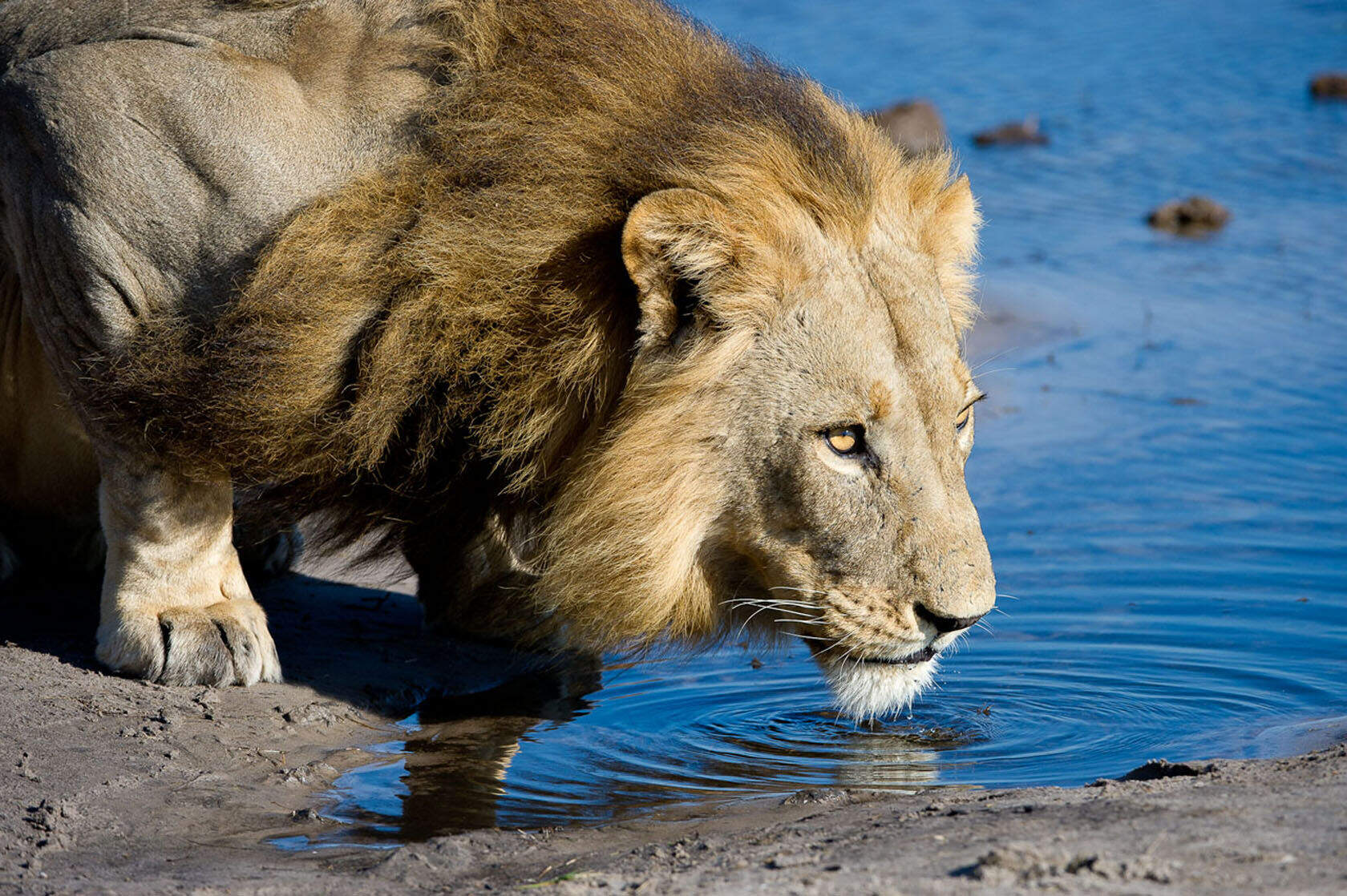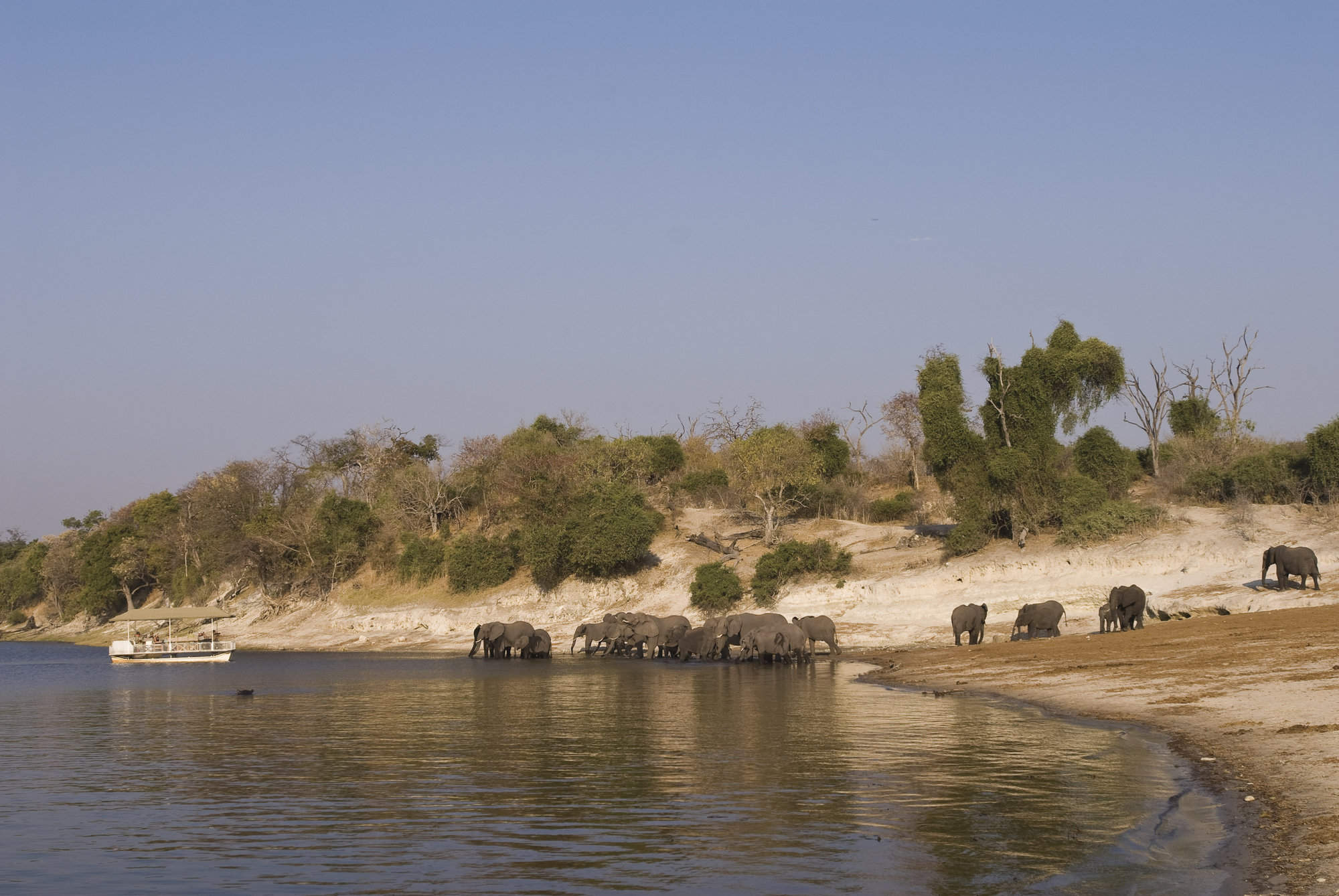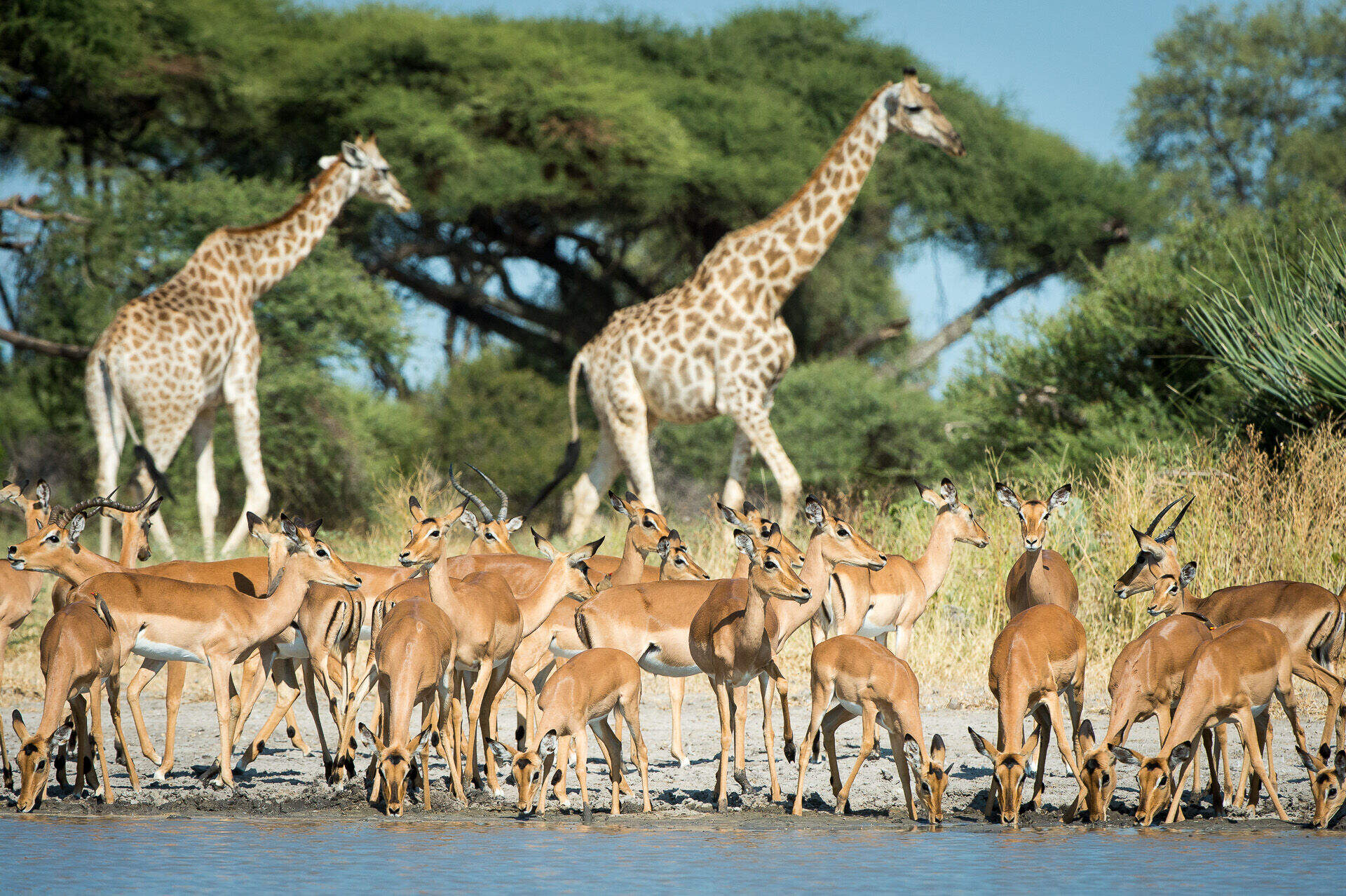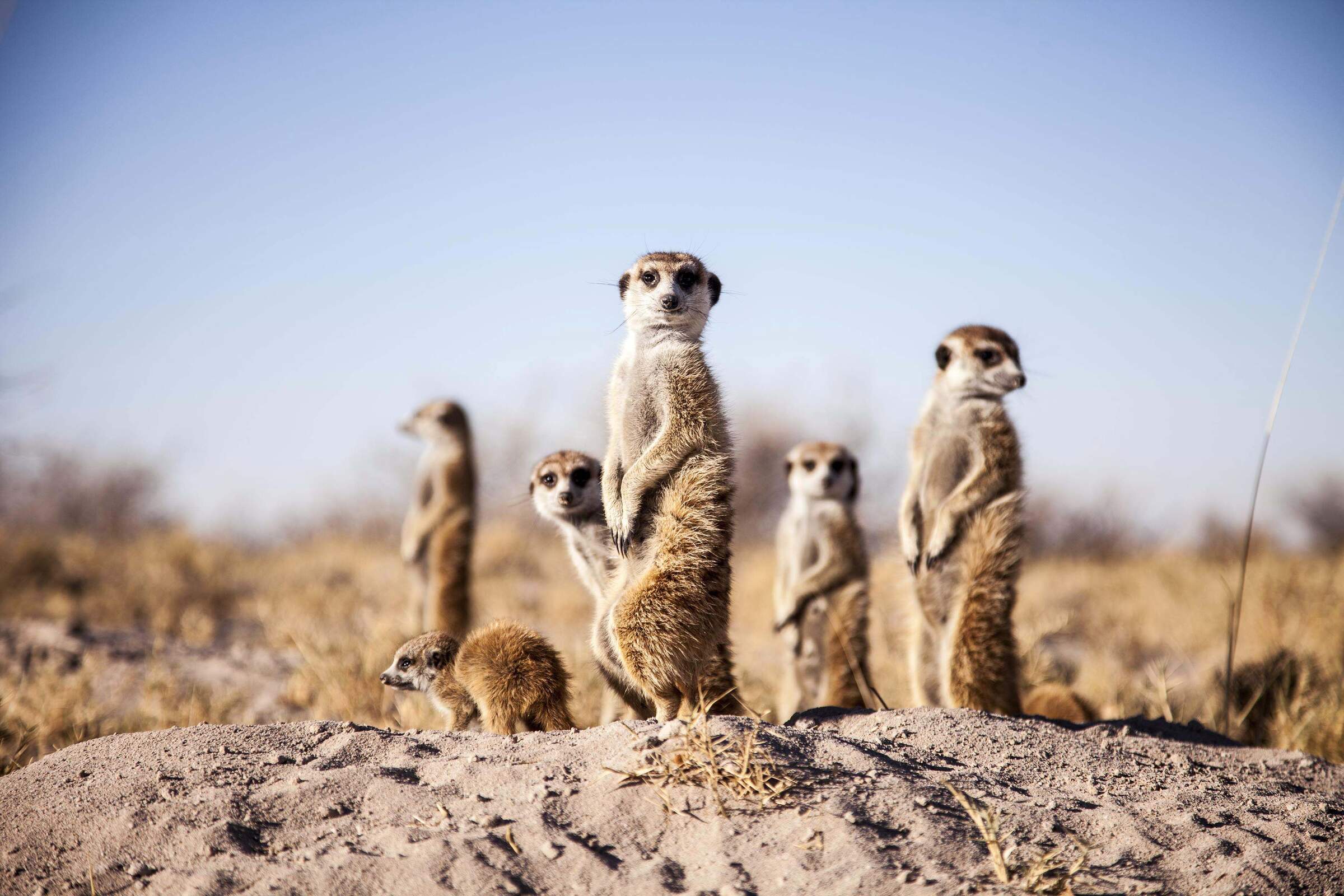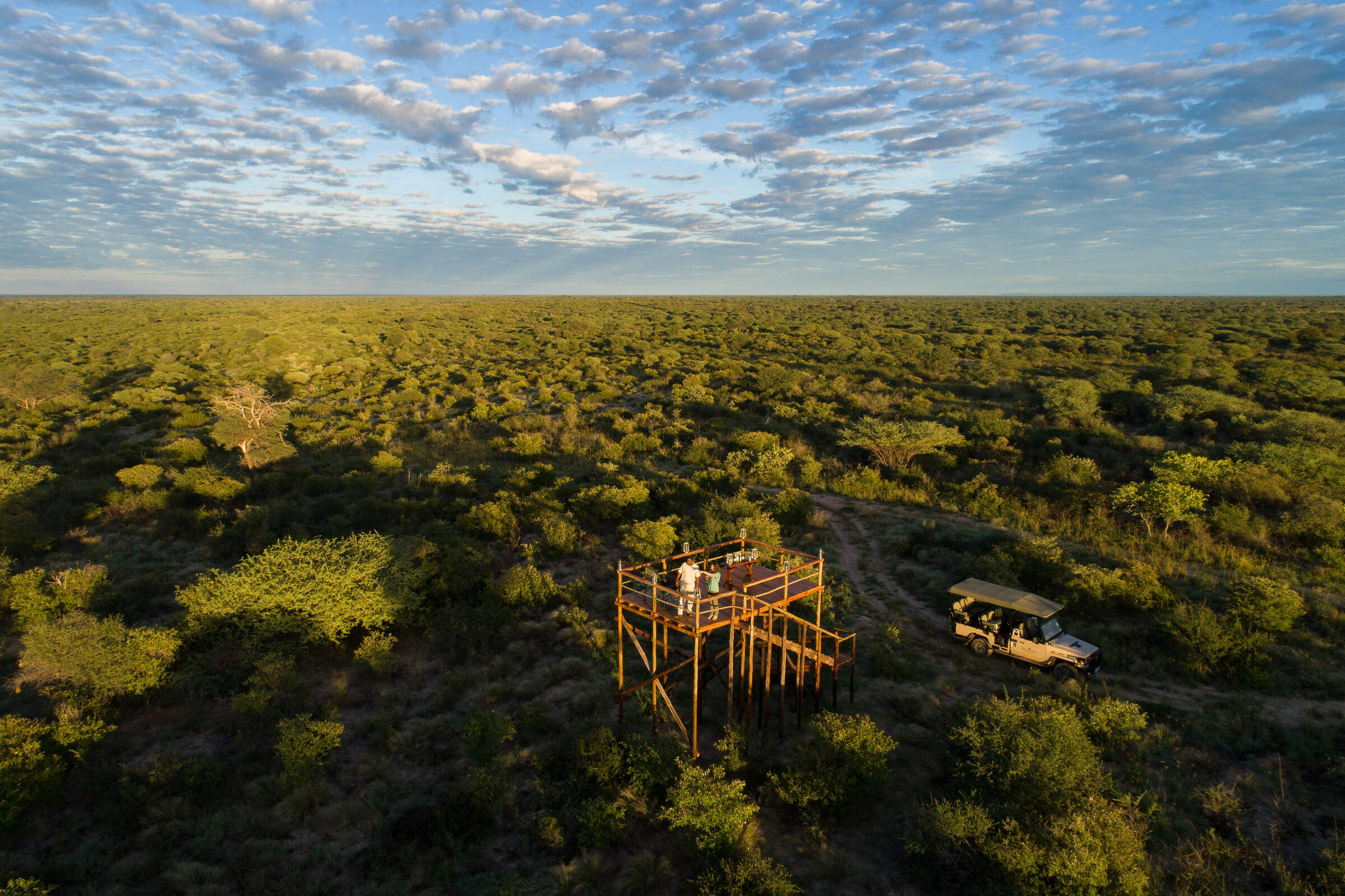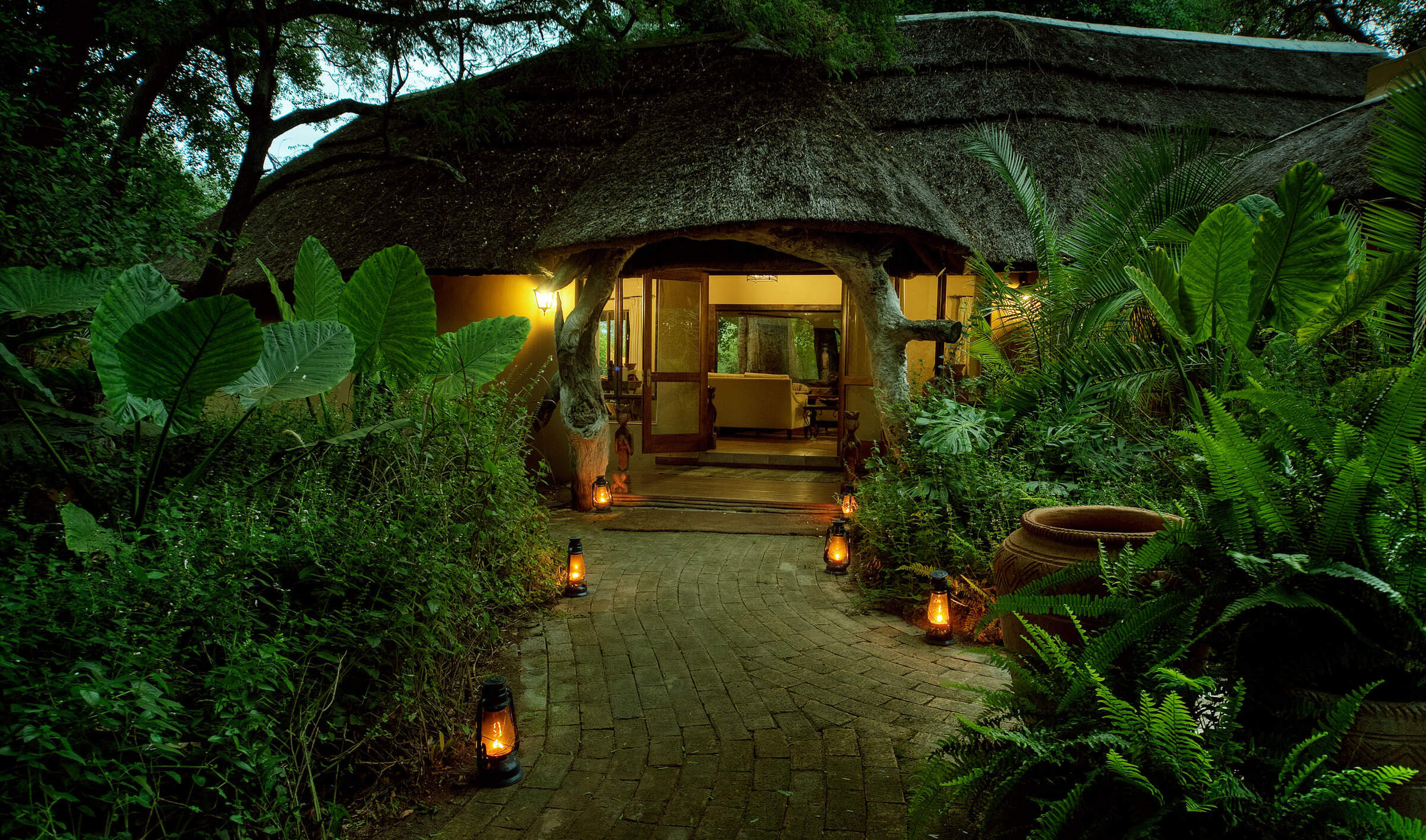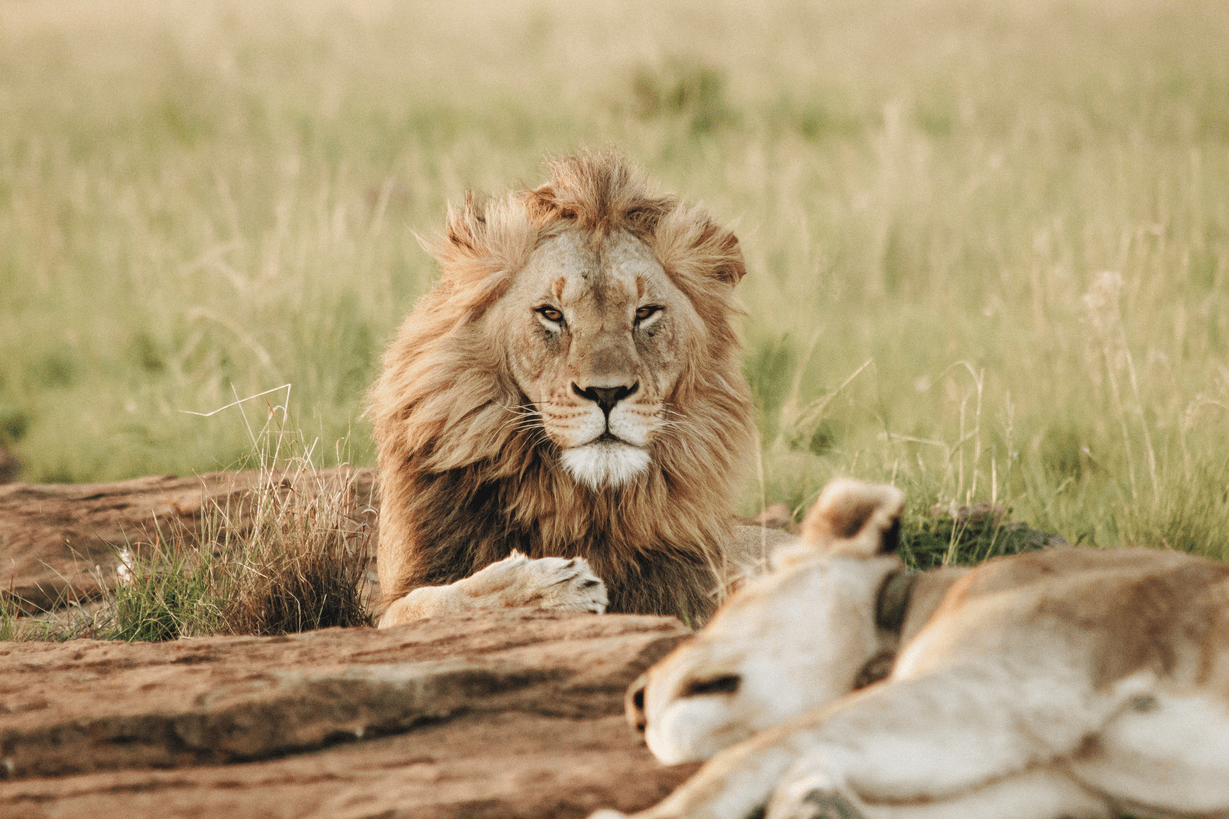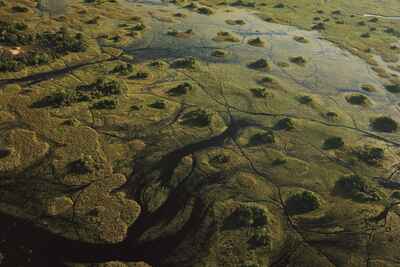
Elephant and hippo pathways in the Okavango
Be prepared for a variety of terrain whilst on game drive
Eco-tourism - the mokoro is replaced by fibreglass
Okavango Delta Safari Reserves
Okavango Delta Safari Reserves
Characterised by its Elysian scenery and remarkable wildlife, the Okavango Delta is frequently heralded as the ultimate African safari destination.
And rightfully so. The Okavango Delta, the largest inland delta in the world, brings vitality to the surrounding Kalahari Desert, and supports an abundant wildlife population, beloved by safari enthusiasts and documentary filmmakers alike.
Meandering through this pristine Okavango environment is a sinuous network of idyllic channels, many flanked by feathery-topped papyrus and slender reeds, home to array of creatures from tiny painted reed frogs to pods of wallowing hippopotamus and secretive sitatunga. Peacefully drifting through these lily-strewn waterways by canoe or boat, you’ll see splashes from lechwe leaping and listen to birdsong in true wilderness.
And between these idyllic waterways and deep-water lagoons, vast grassy floodplains stretch in all directions, home to the continent’s largest population of elephants, powerful coalitions of lions, and excitable packs of wild dogs.
Lush tree islands of palms and ancient hardwoods punctuate these grasslands, providing a haven for myriad birds, troops of monkeys and agile leopards, and offering perfect shade for delicious bush picnics.
Within this superb setting are an array of unique safari camps, several receiving acclaim as the best safari accommodation in Africa. Some Okavango lodges are located within Moremi Game Reserve, in the heart of the Okavango Delta, while others enjoy the exclusivity of their own vast, private reserves – known as Concessions in Botswana – which surround Moremi and collectively protect the entire Delta region.
Choosing the right camp and area for your Okavango Delta safari is crucial, so do check out our detailed descriptions of the Okavango’s Private Reserves, and call our dedicated Botswana team.
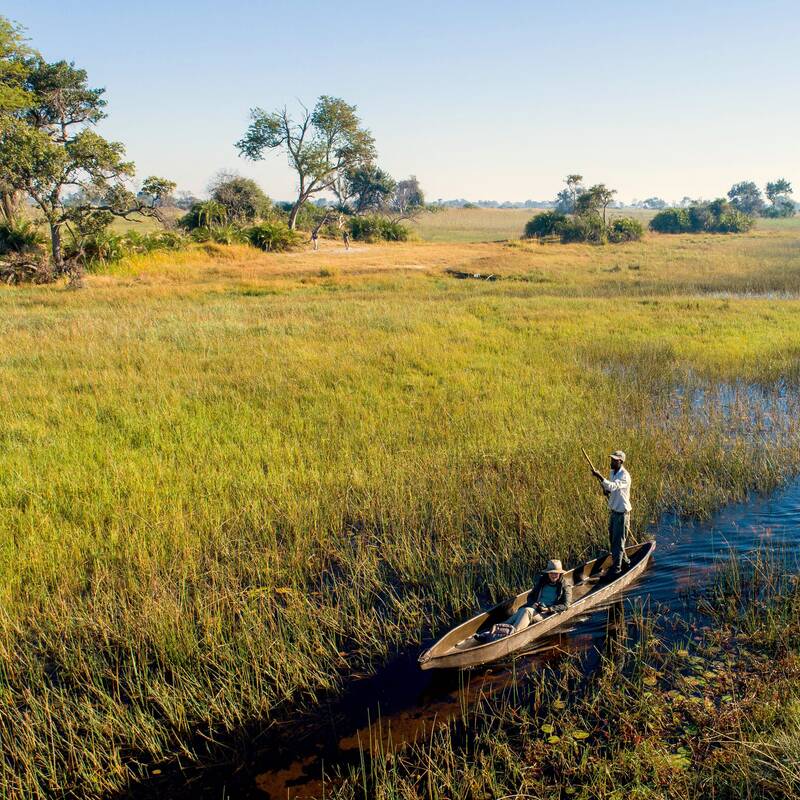
A UNESCO global treasure
The Okavango Delta Ecosystem
The Okavango Delta is a remarkable and biodiverse ecosystem formed by the Okavango River's intricate network of channels, lagoons, and floodplains. During the wet season, floodwaters push into Botswana from Angola and rejuvenate the delta, transforming the Kalahari sand into a lush oasis teeming with life.
This dynamic environment boasts a rich variety of vegetation, including reed beds, papyrus swamps, and grasslands, providing habitat for an astonishing array of wildlife. From large mammals like elephants, buffaloes, lions, and leopards to hippos, crocodiles, and numerous bird species, the Okavango Delta supports a thriving ecosystem adapted to its seasonal fluctuations.
Designated a UNESCO World Heritage Site in 2014, the Okavango Delta stands as a globally significant treasure, celebrated for its ecological importance, biodiversity, and captivating beauty, attracting visitors from around the world to experience its wonders on safari.
Having been carefully and effectively protected for years, and with conservation and wildlife tourism thriving here, the Okavango Delta’s beauty looks set to flourish into the future.
Flora of the Okavango Delta
Over 1,000 species of plants are recognised in the Okavango Delta. Dominant in the permanent Delta swamps are tall, feathery papyrus and dense reeds, along with beautiful water lilies and bulrushes. Bordering the Okavango area's many rivers, you'll find extensive floodplains which host various sedges and grasses, bounded by stretches of classic riverine (or 'riparian') forests bursting with a wide range of beautiful deciduous and evergreen bushes and trees: ebonies, mangosteens, sycamore fig, jackalberry, combretum and faidherbia. These plants exhibit myriad adaptations to cope with the Delta's wet and dry seasons, such as deep root systems and tolerance to submersion, and in turn support a diverse array of wildlife.
In contrast, large tracts of the drier parts of the Delta are dominated by one tree: mopane. Often creating beautiful, 'cathedral' Mopane woodlands – named after their tall, gracefully arching branches which resemble a Gothic cathedral – woodlands of mopane cover large areas, sometimes largely to the exclusion of all other species. Though where others are evident in open areas, they are often camelthorn trees following the sandy beds of ancient watercourses, with accompanying silver terminalias, wild seringas and Kalahari apple-leaf trees.
Wildlife in the Okavango Delta
Elephant and buffalo occur in the Okavango year-round in large numbers, and you're likely to see blue wildebeest, Burchell's zebra, impala, kudu, tsessebe, red lechwe, waterbuck, reedbuck, giraffe, common duiker, bushbuck, steenbok, warthog, baboon and vervet monkey throughout the Delta. Eland, sable and roan antelope also range across the region – but are less common, as they are elsewhere in Africa. The deep-water and papyrus areas of the Delta have thriving populations of sitatunga, which live deep in the swamps.
Lion, leopard, cheetah and spotted hyena all have significant populations here. The Okavango Delta is prime hunting ground for wild dog packs, which range widely across most of Northern Botswana. They're easiest to find on the northern and eastern sides of the Delta.
Both black-backed and side-striped jackals occur – though the former are more common.
Brown hyena probably occur on the drier fringes, but relatively rarely, and probably only in drier areas where there are lower densities of the other large predators. Similarly, bat-eared fox are found here, though not so commonly as in Botswana's drier areas. There are a wide variety of mongoose found here, including the slender, banded, dwarf, large grey, water and Selous'. Meanwhile in the water, spotted-necked and Cape clawless otters are often seen, though they seldom hang around to allow visitors a good view!
Serval, aardwolf, caracal and aardvark are found throughout the Okavango Delta, though due to their largely nocturnal habits, they are only occasionally seen. Pangolins are also found here, and seem as if they might be slightly less rare than in other areas of their range!
Up until 2001, rhino (both black and white) had been exterminated from here by poaching. They were reintroduced first to Moremi Game Reserve and then to the Delta's private reserves. In common with most conservation areas, their precise locations are rarely publicised. For the best chance of seeing them though, consider including Duba Reserve in your itinerary.
Birdwatching in the Okavango Delta
Although there are no birds that are truly endemic to Botswana, the Okavango Delta is hugely important to many species, including a number rarities worthy of noting here. First on the Okavango's list of 'specialties' is the slaty egret - which can be found in shallow, reedy back-waters and pans. Aside from the Okavango River's delta, this rare egret is only resident in quieter corners of the Chobe and Linyanti areas, and the Bangweulu Wetlands in Zambia.
Easier to spot are magnificent wattled cranes, which are relatively often seen in the Delta. They're usually seen in pairs or small groups, wandering about shallow floodplains or wet grasslands, searching for fish, small amphibians and reptiles.
For keen birdwatchers, other Okavango Delta specials here include coppery-tailed coucal, brown firefinch, Bradfield's hornbill, the lesser jacana, pink-throated longclaw and the tiny chirping cisticola.
The Okavango Delta’s annual flood
However, flooding levels will influence on some activities – such as mokoros and boating – so it may influence your choice of the best locations for you. You won’t find as many kingfishers without water or be able to follow wild dogs though deep lagoons!
The water levels at any point in the Okavango Delta depend mainly on three variables: first, the local rainfall in your location; second, the height of the seasonal flood of the Okavango; and third, your location within the Delta. These days, the further north and east you are in the Okavango, the more water you’re likely to have.
The local summer rains and the arrival of the seasonal floods are generally out of sync by around two to six months, depending on exactly where you are within the Delta. This represents the time taken for the peak of the rains in the Okavango River’s main catchment area - the Angolan highlands - to make it down the Okavango River and into the various areas of the Delta.
These annual floods have for years been monitored very carefully by hydrology experts. From this we know that the peak of the flood generally enters Botswana between mid-March and mid-May - just after the local summer rains in the region of the Delta have come to an end. Given the tiny gradient of the Kalahari landscape and very slow flow rate, this surge of water from Angola can take up to six months to work its way from the Panhandle to the far extremities of the Delta’s waterways…if indeed it does reach the furthest points.
So, broadly speaking, expect the highest water levels in most areas of the Delta to occur after the rains - from about May to August. After that, levels will generally fall until around February, when the local rains start to slowly raise water levels prior to the main flood.
Where are the Okavango’s Private Reserves?
The concessions are all private, meaning no one, aside from camp visitors and staff, may enter each area. But note that there are no fences between the concessions, allowing wildlife to move freely across the entire Delta area as well as into neighbouring Chobe National Park.
We've described the main Okavango Delta private reserves by name in the next section – Kwara, Shinde, Vumbura, Duba Plains, Jediba, Jao, Tubu, Abu, Nxabega, Chitabe, Lediba and Sankuyo Management Trust.
There are two excellent maps of the Okavango Delta on this site: an amazing interactive Satellite map, with links to all of the camps; and our own reference map, drawn to show all of the individual Okavango Private Reserves and their boundaries.
Why safari in the Okavango Delta's private reserves?
Each of these vast Delta reserves contain a couple of small, private safari camps, with tight restrictions on visitor numbers. Guests arrive at these by air, and they offer great safari activities. In contrast to the public game parks and national parks, these private reserves have four significant advantages:
- The guides are allowed to drive off-road whilst on safari when searching for and following game. This is crucial if your keen to pursue wild dogs or big cats hunting.
- The guides can conduct night-drives, allowing you to see the nocturnal animals like porcupines, honey badgers, genets, civets and the nocturnal birds – notably owls. Prowling big cats, like leopard and lion, and hyena are often more active and more frequently seen around dusk and at night.
- Some reserves offer walking safaris in the Okavango Delta which are not allowed in either Moremi Wildlife Reserve or the national park.
- At the risk of stating the obvious, these private safari reserves are private: so you'll usually see few other people on safari here. Space and exclusivity are real privileges in such a pristine area!
Best safaris in Botswana’s Okavango Delta
Each Okavango reserve and safari lodge offers its own unique character, shaped by geography, ambiance, and safari experience. Whether you opt for the watery wonderland of the north-eastern Okavango, combine it with the predator-rich plains of the Kwando-Linyanti and Selinda, or enjoy an unforgettable guided walking safari, we can advise from personal experience.
Botswana’s exclusive wilderness experiences can be overwhelming to choose from, so we’ve curated a selection of our favourite Okavango safaris to help you combine camps and understand costs. While safaris here are premium-priced, it’s worth noting that these fees help protect the Delta’s pristine environment and support local communities. These are just ideas—we’ll always tailor-make your trip. Contact one of our Botswana Experts to craft your ideal Okavango safari.
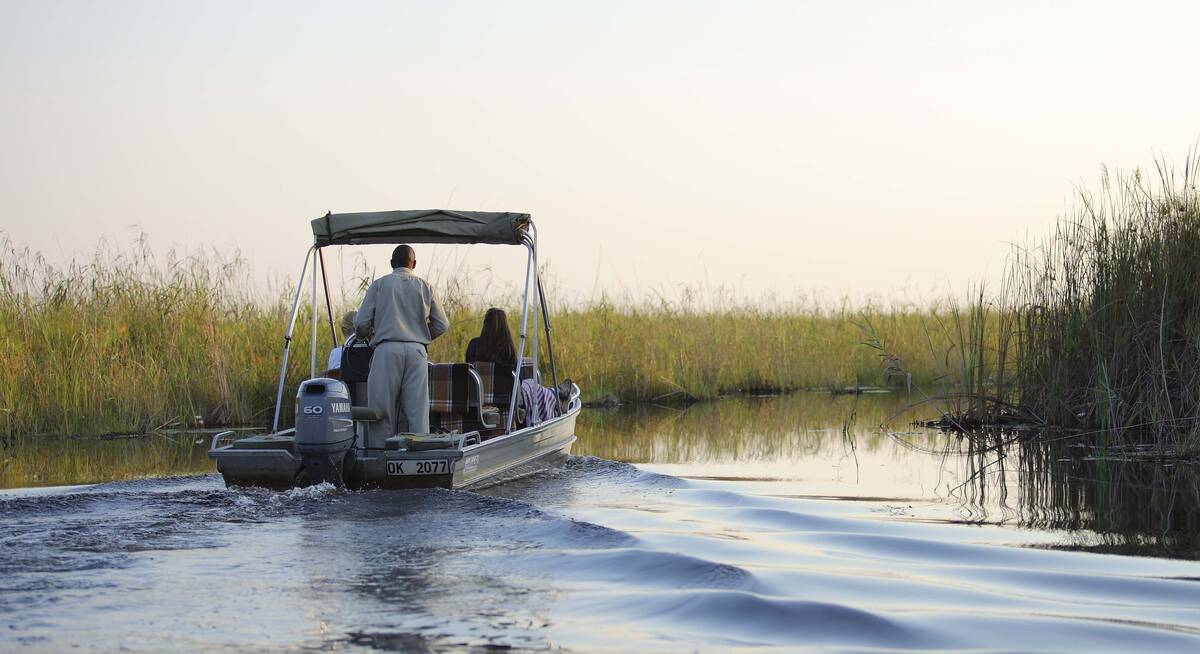
Kudu Safari
7 days • 2 locations
MAUN AIRPORT TO MAUN AIRPORT
A luxury Botswana safari exploring the Okavango Delta staying at Nxebega Camp and the stunning Sandibe Lodge, with excellent guiding and some of the most prolific wildlife viewing anywhere in Africa.
US$8,760 - US$20,120 per person
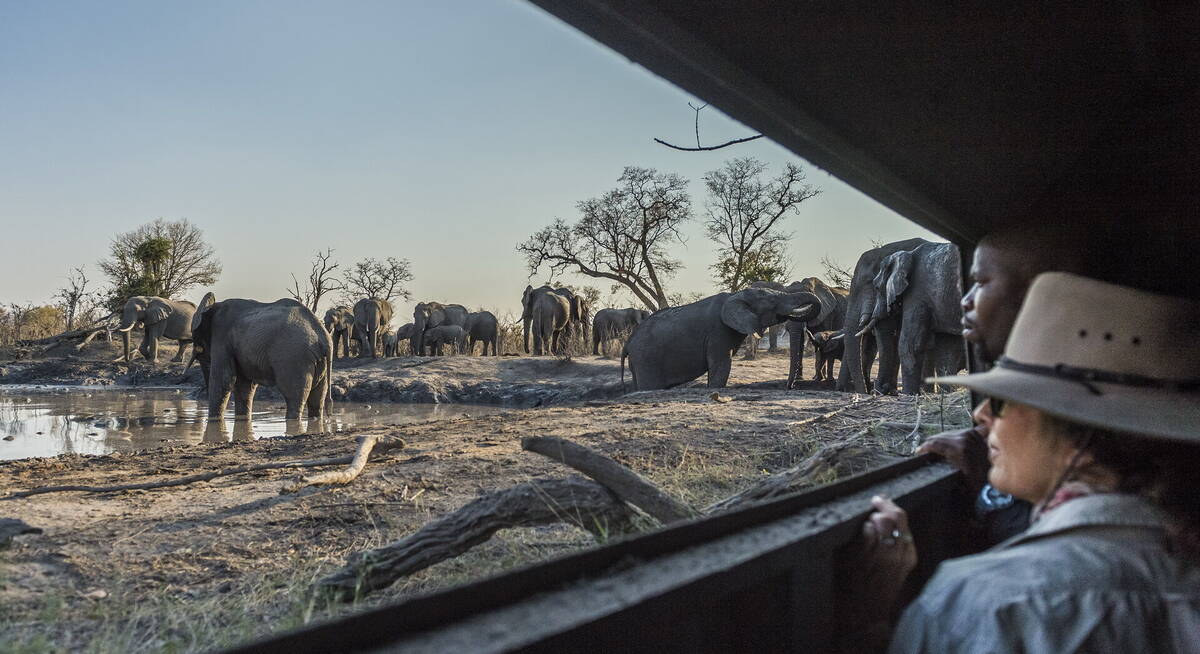
Large-spotted Genet Safari
9 days • 3 locations
MAUN AIRPORT TO MAUN AIRPORT
A luxury safari exploring the Okavango Delta and Linyanti–Savuti, two of the best wildlife viewing areas in Botswana, staying at three top camps renowned for their guiding for a first-class experience.
US$14,230 - US$23,640 per person
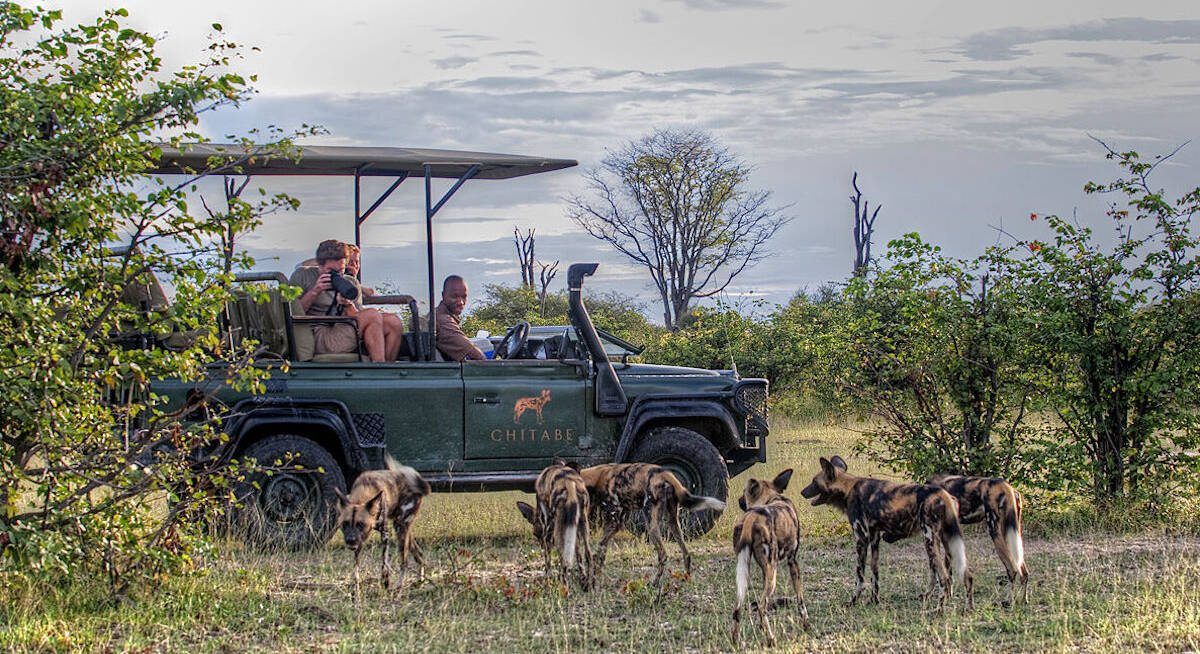
Bushbuck Safari
8 days • 3 locations
MAUN AIRPORT TO MAUN AIRPORT
Discover three of Botswana’s best game-viewing regions with stays in the private Linyanti, Chitabe and Vumbura reserves. Intimate, smart camps offer a range of activities by which to discover these stunningly varied habitats.
US$18,020 - US$31,740 per person
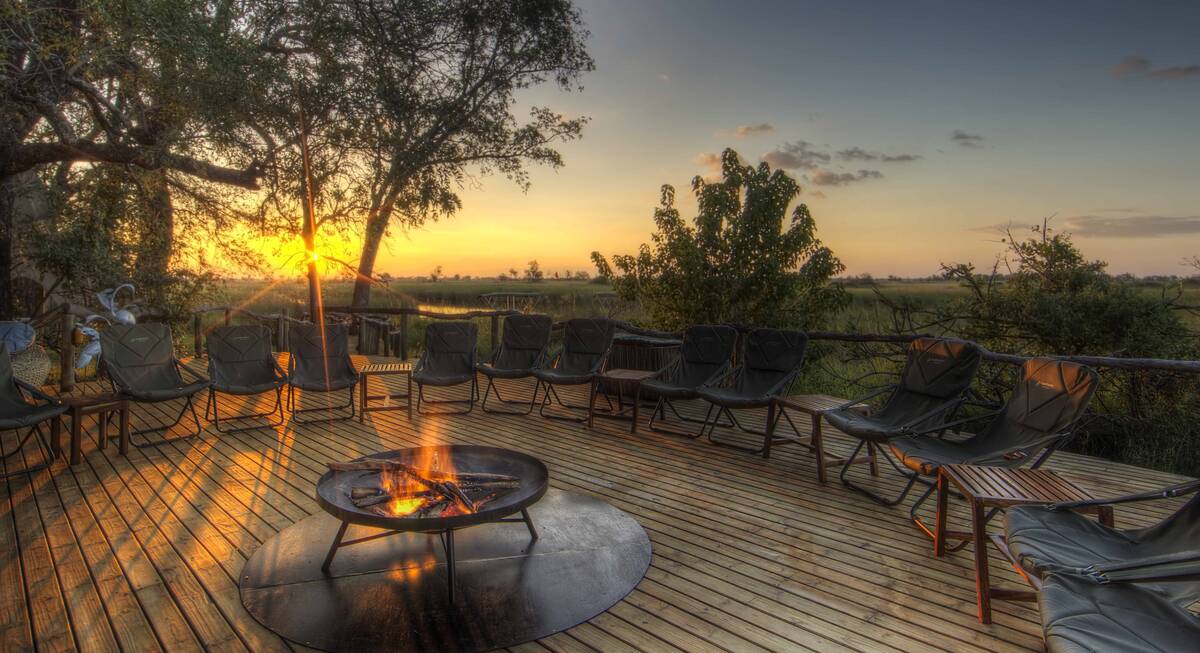
Tsessebe Safari
7 days • 3 locations
MAUN AIRPORT TO MAUN AIRPORT
Visit three sister-camps in and around Moremi Game Reserve during this thorough exploration of the Okavango Delta. A range of activities provide excellent opportunity to observe the local birdlife, mammals and fauna.
US$8,520 - US$11,410 per person
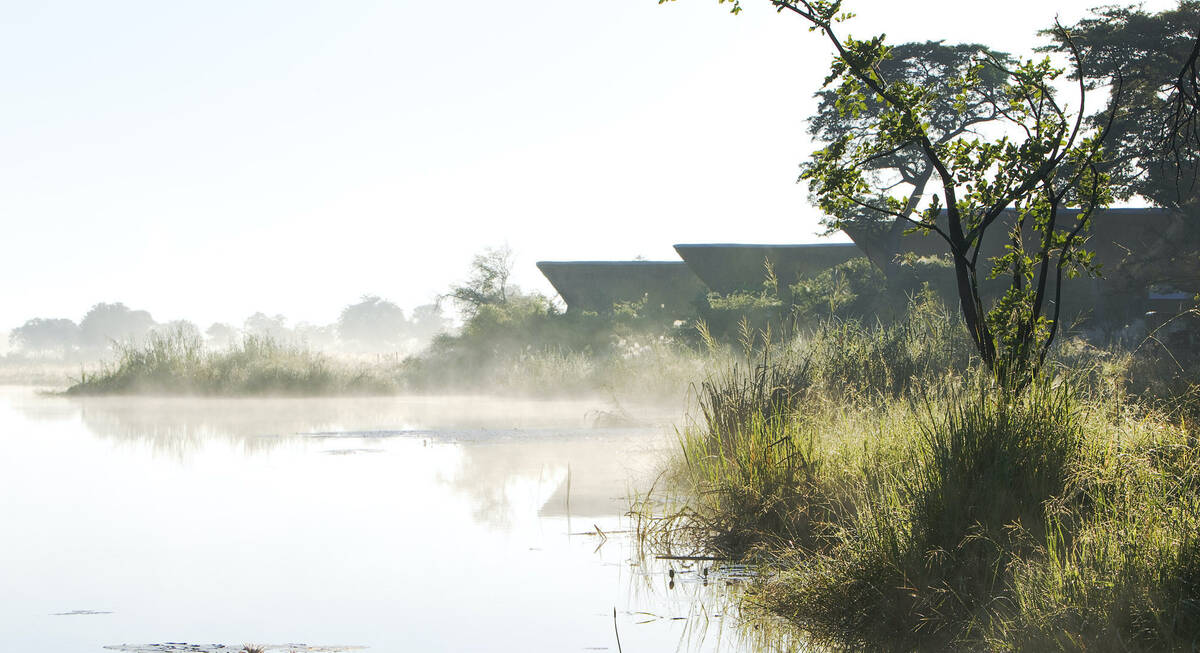
Pangolin Safari
8 days • 3 locations
MAUN AIRPORT TO MAUN AIRPORT
Three relaxed, local feeling camps in pristine settings – the Kwando Reserve and Okavango Delta. Guided by a driver and tracker at each, this a great trip for spotting Botswana’s top predators.
US$9,730 - US$16,340 per person
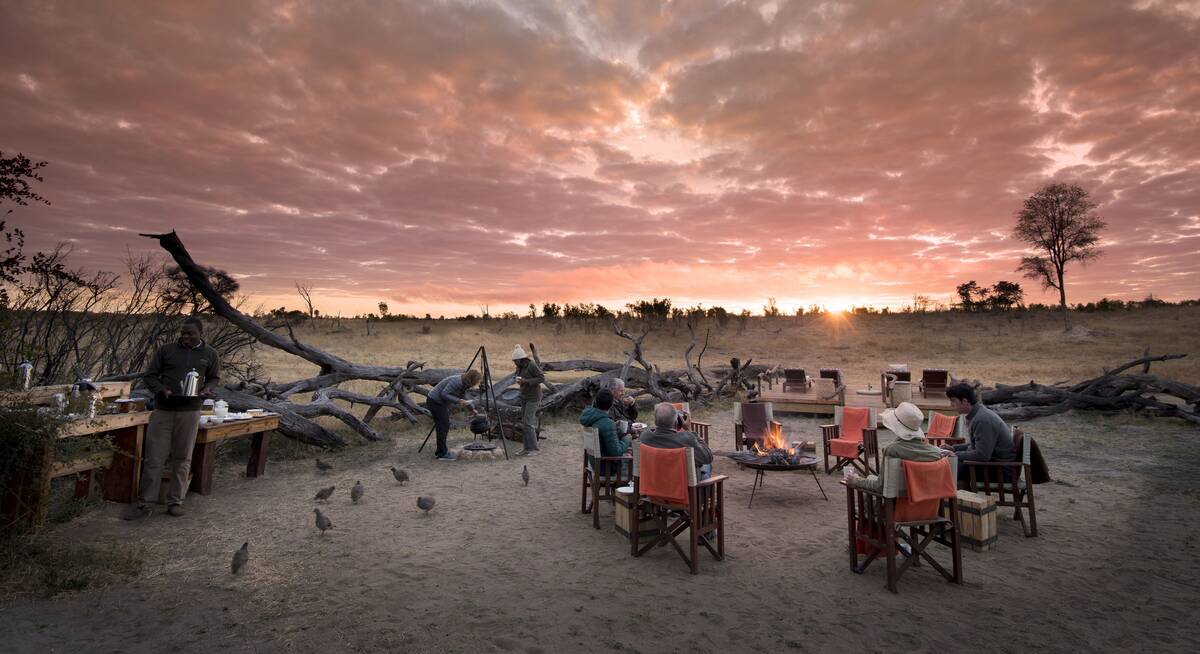
Great Egret Safari
12 days • 4 locations
MAUN AIRPORT TO VICTORIA FALLS AIRPORT
This wonderfully varied adventure combines Botswana's Okavango Delta and a live-aboard houseboat safari on the Chobe River, with big game in Zimbabwe's dry Hwange National Park and the stupendous Victoria Falls.
US$10,400 - US$17,460 per person
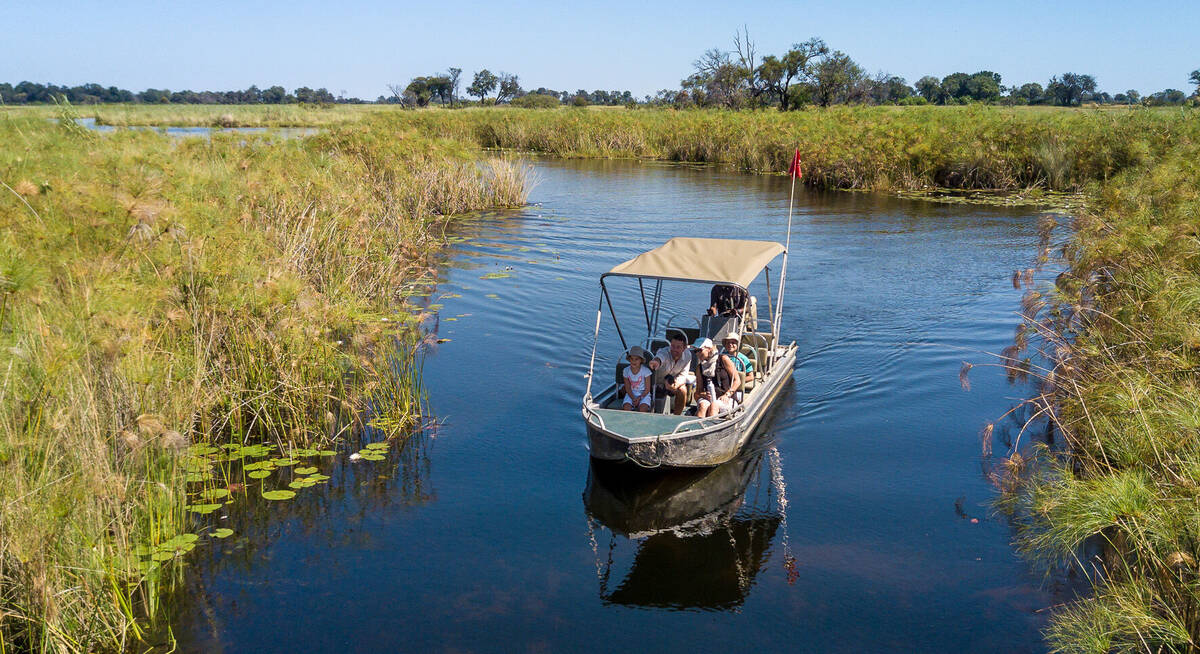
Slaty Egret Safari
4 days • 2 locations
MAUN AIRPORT TO MAUN AIRPORT
Two luxurious, intimate camps provide a highly personalised exploration of the Chitabe concession and private Vumbura reserve within the Okavango Delta. A range of water and land activities allows for stunning sightings.
US$7,920 - US$14,550 per person
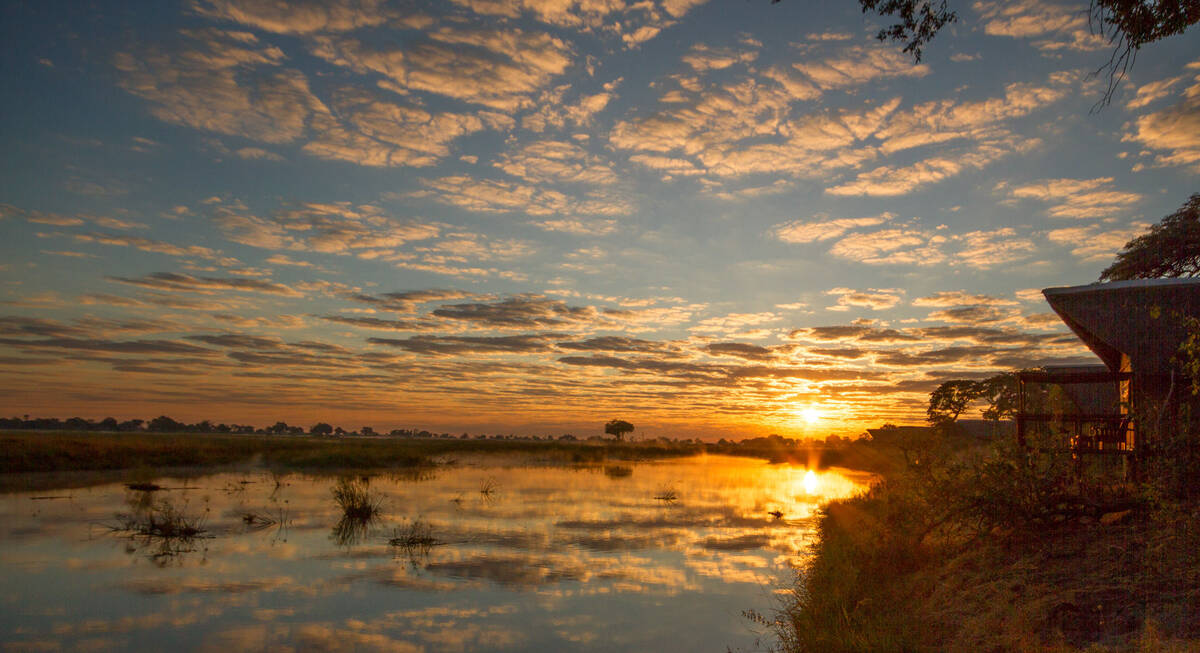
Mopane Squirrel Safari
6 days • 2 locations
MAUN AIRPORT TO MAUN AIRPORT
Visit two wildlife-rich private reserves in an exploration of the Okavango and Kwando regions. Sister camps Splash and Lagoon camp provide a range of immersive activities, and their long-stay discounts make for an excellent-value safari.
US$6,990 - US$11,760 per person
Recent reviews of our Okavango Delta safaris
Expert Africa travellers come from all over the world, each with unique perspectives and priorities. Yet, they all seek a high-quality, well-planned, and good-value African safari.
We know we’re the best in the business at creating incredible Okavango safaris, but nothing speaks louder than our travellers' feedback: “In one word: epic.” - “Perfect from the moment we started planning.” - “Expert Africa’s expertise shone through.” - "We loved every minute. Just go!"
Browse the reviews of our tailor-made Okavango Delta safaris below, each one genuine, full, and unedited. With a 99% Excellent rating, we're dedicated to making the planning process as enjoyable as the safari itself.
Arrived 1 Jun 2025, 8 nights
"My Jun 2025 trip"
Overall rating: Excellent
Arrived 22 May 2025, 16 nights
"My May 2025 trip"
Overall rating: Excellent
Arrived 21 May 2025, 15 nights
"My May 2025 trip"
Overall rating: Good
Arrived 20 May 2025, 13 nights
"My May 2025 trip"
Overall rating: Excellent
Arrived 20 May 2025, 12 nights
"Our May 2025 trip"
Overall rating: Excellent
Arrived 19 May 2025, 7 nights
"My May 2025 trip"
Overall rating: Excellent
Arrived 19 May 2025, 13 nights
"A Wonderful trip to Namibia & Botswana "
Overall rating: Excellent
Arrived 19 May 2025, 6 nights
"Excellent Botswana wildlife trip May 2025"
Overall rating: Excellent
Arrived 18 May 2025, 17 nights
"My May 2025 trip"
Overall rating: Excellent
Arrived 6 May 2025, 8 nights
"My May 2025 trip"
Overall rating: Excellent
Where to stay in the Okavango Delta
Without question, the Okavango Delta offers some of Africa’s best safari camps and lodges. Staying at a water-based camp allows you to canoe silently along narrow waterways adorned with water lilies, photographing gorgeous malachite kingfishers, listening for hunting fish eagles and spotting for otters and turtles. It’s supremely tranquil. Explore further by motorboat, perhaps gin and tonic in hand for sunset, watching for basking Nile crocodiles and bathing elephants, or even trying your hand at tiger-fishing (catch and release).
If you prefer solid ground, traverse open floodplains and dappled woodlands in comfortable 4x4s, seeking out safari animals both day and night. And for the best of both worlds, safaris combining the Okavango’s dry and wet areas can be arranged.
Some Okavango Delta camps specialise in predator sightings with dedicated trackers accompanying every guide, while others cater to wildlife photography enthusiasts, providing adapted vehicles and carefully constructed bird and animal hides for capturing that perfect shot. There are specialist walking camps for those seeking active, exhilarating adventures, and safari lodges perfect for exclusive-use family gatherings and celebrations.
When looking for the perfect places to stay in the Okavango Delta, talk to us to discover the locations and lodges which will suit you best.
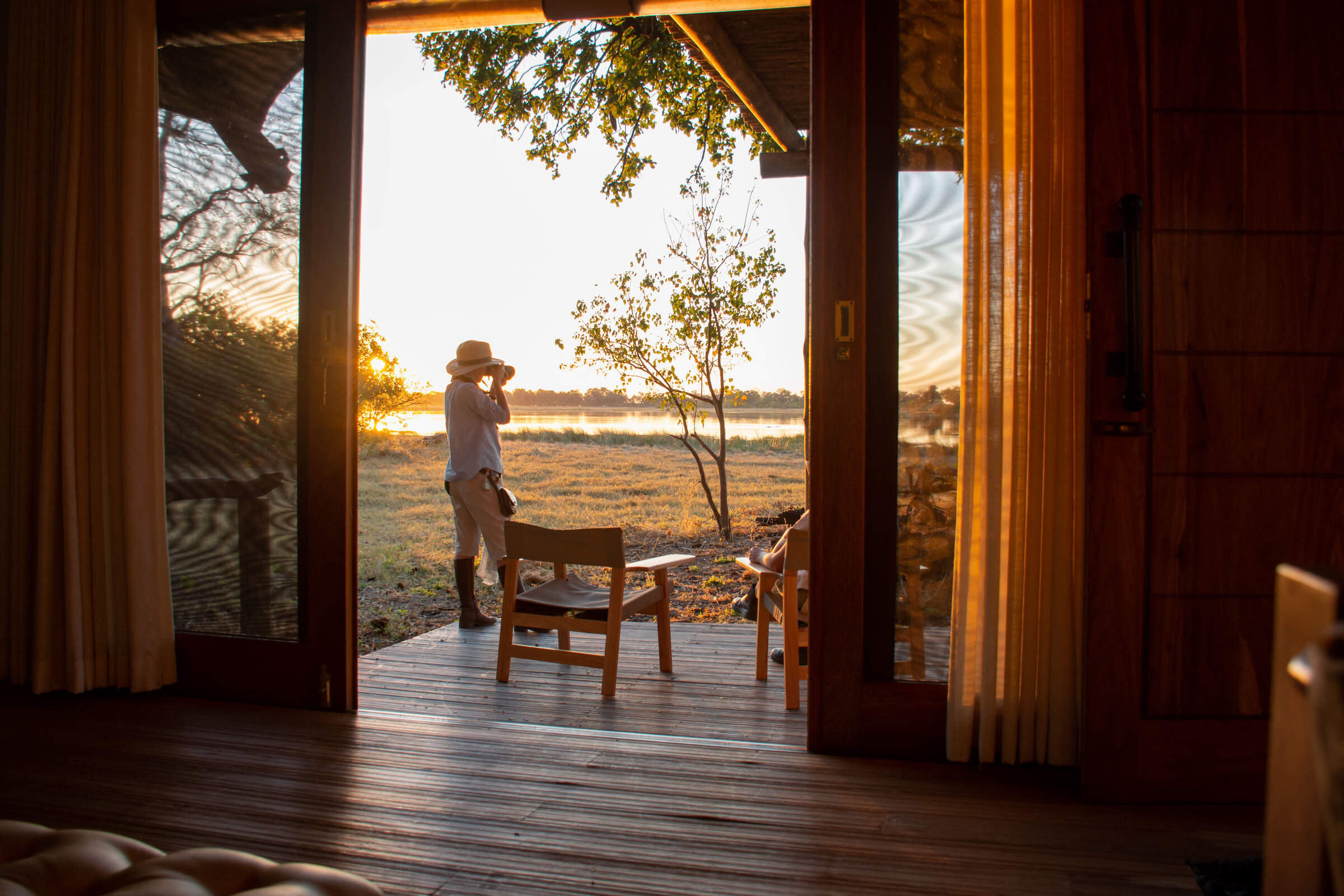
Kwara Camp
Kwara Camp's private reserve boasts land and water activities year-round, with excellent game-viewing opportunities and access to permanent channels of the north-east Okavango Delta.
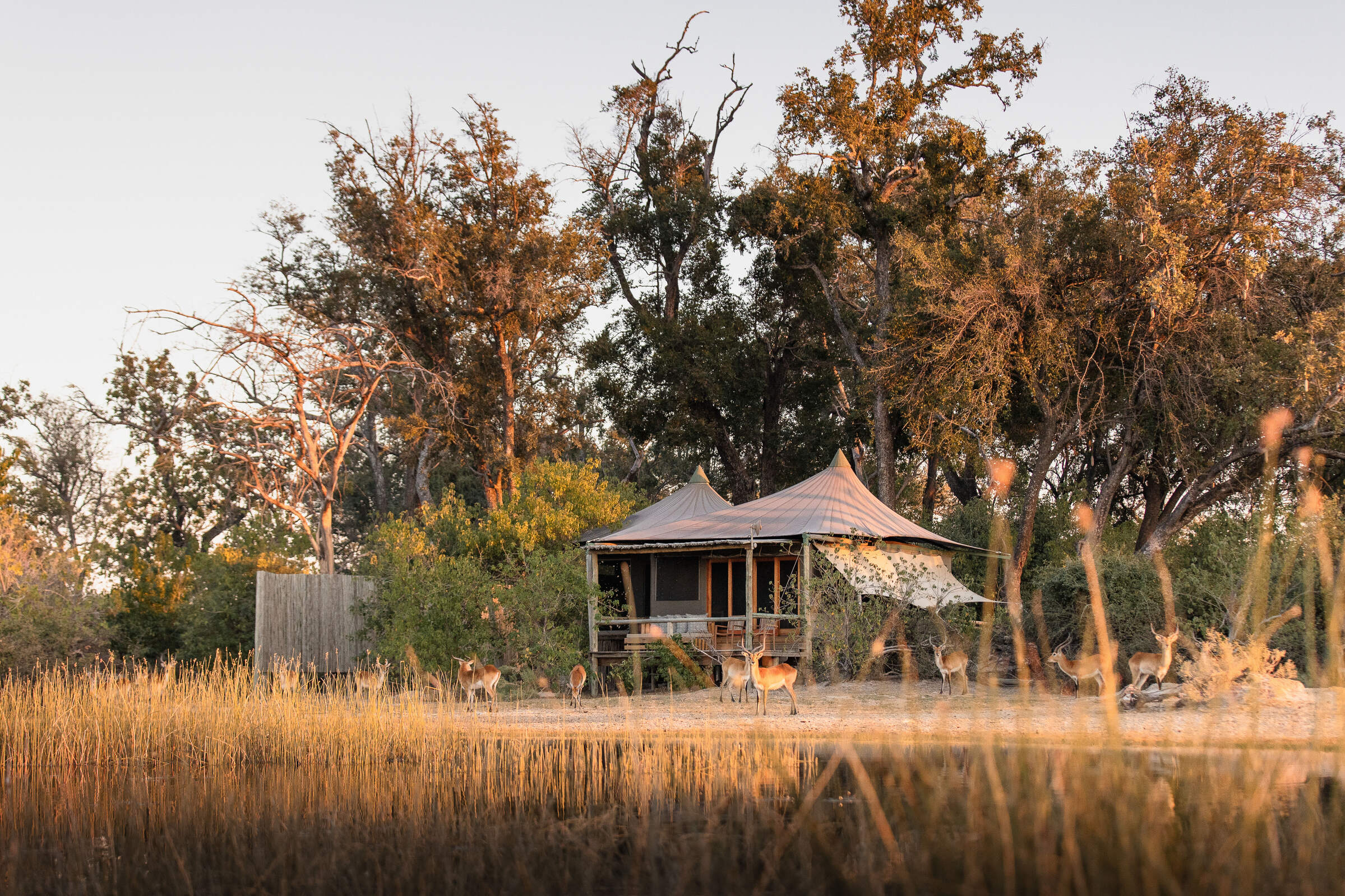
Little Vumbura
On a secluded island within a private reserve, Little Vumbura combines superb game viewing with a broad diversity of habitats in a truly picturesque setting.
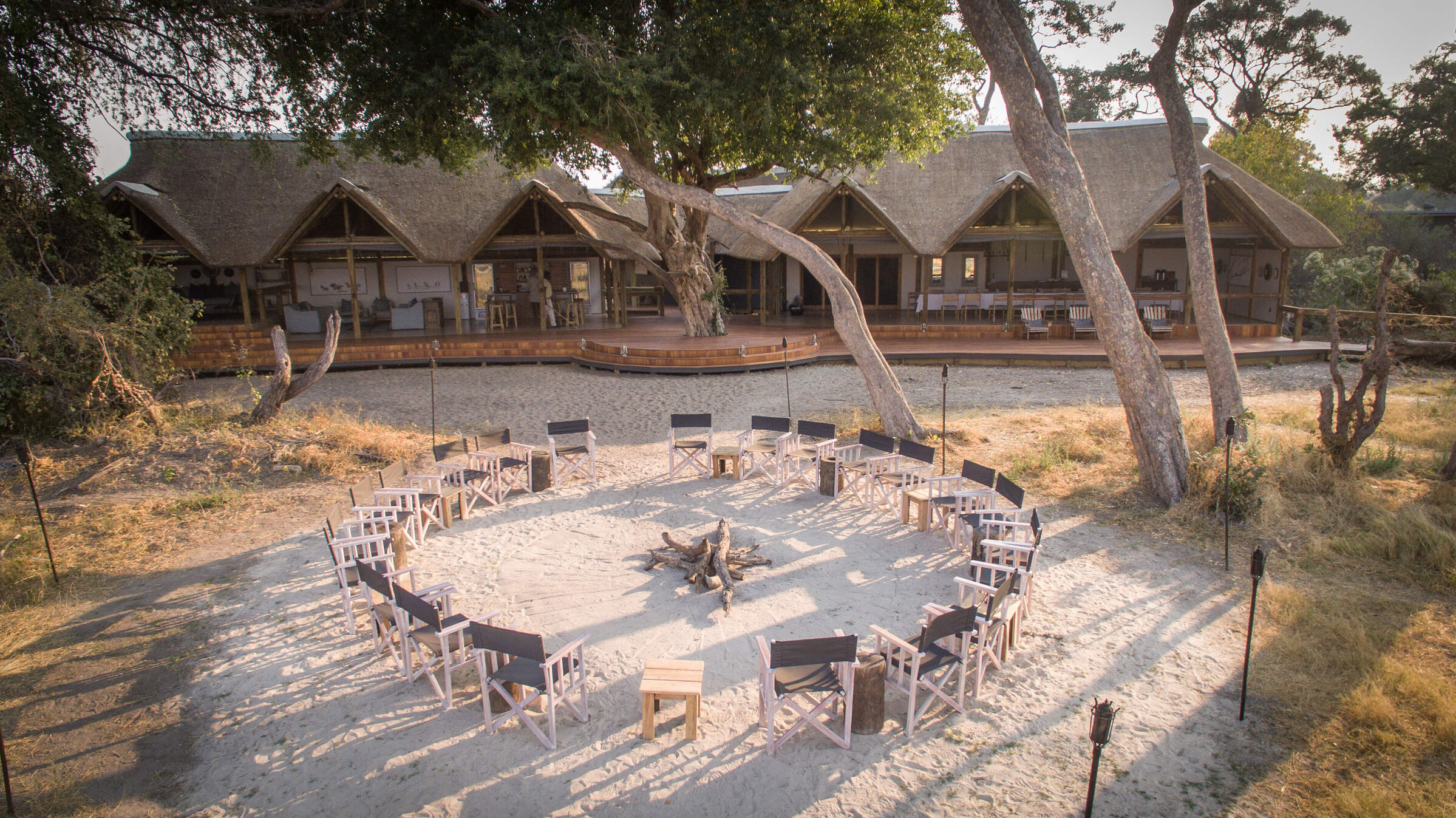
Splash Camp
Set in the Kwara Reserve, offering superb wildlife viewing year-round, Splash offers both land and water activities led by guides with a particular knack for tracking big game.
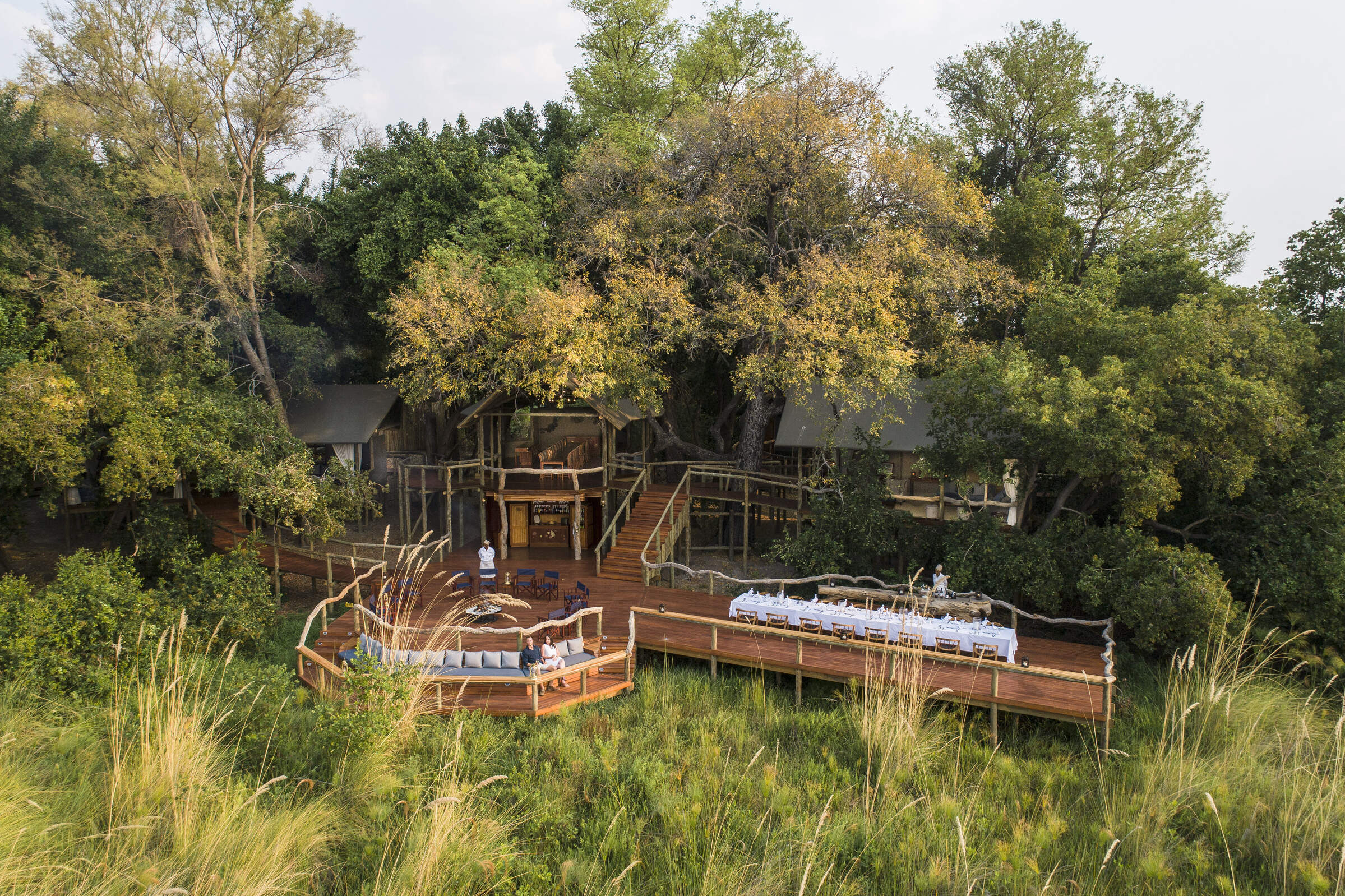
Shinde Camp
With experienced staff and a wealth of activities, Shinde offers a traditional safari in an exceptionally varied and wildlife-rich environment.
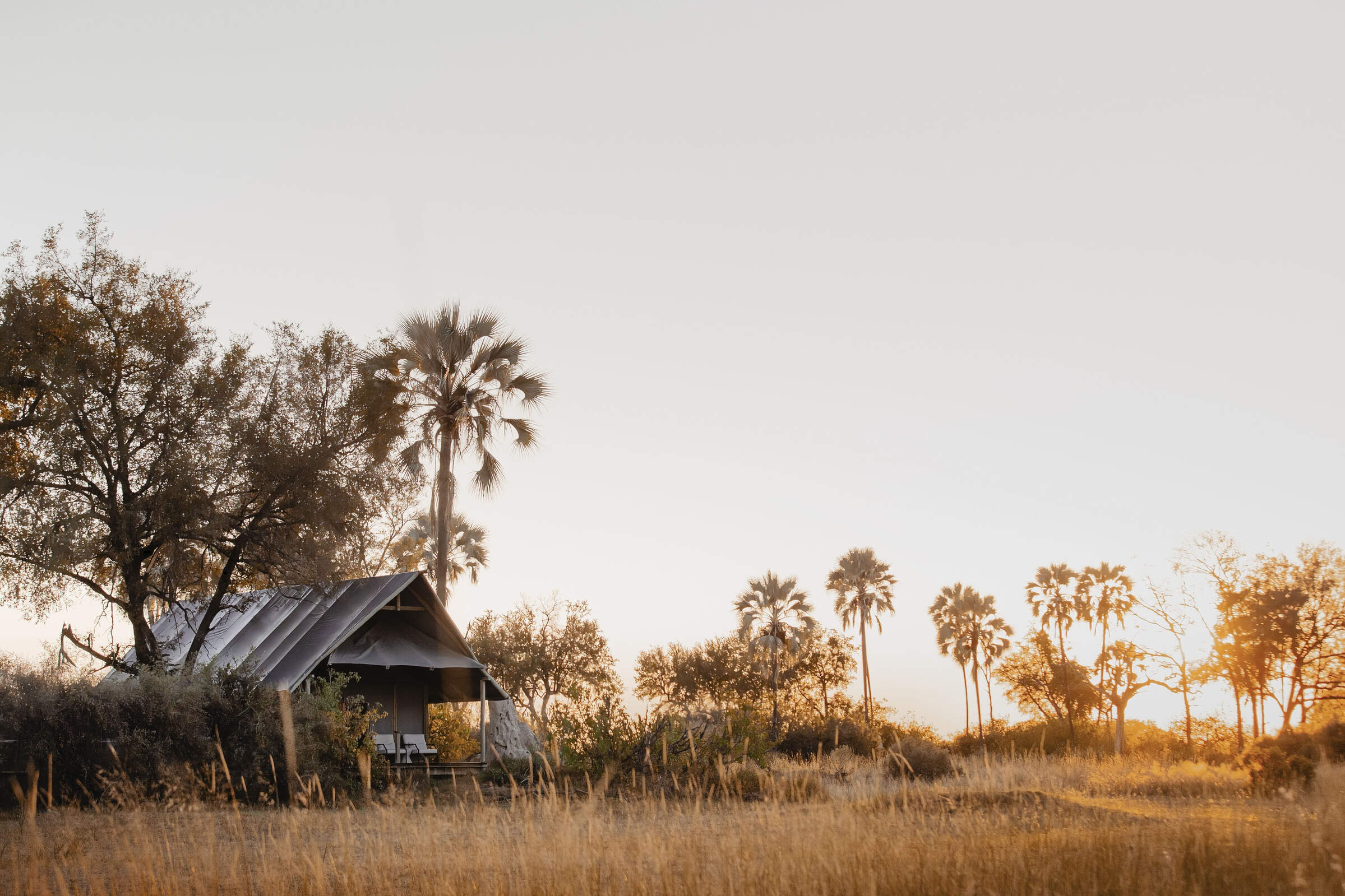
Chitabe Lediba
Chitabe Lediba, in Botswana's southern Okavango Delta, is a small family friendly safari camp; it offers great dry-land safaris and in our experience consistently delivers good game sightings.
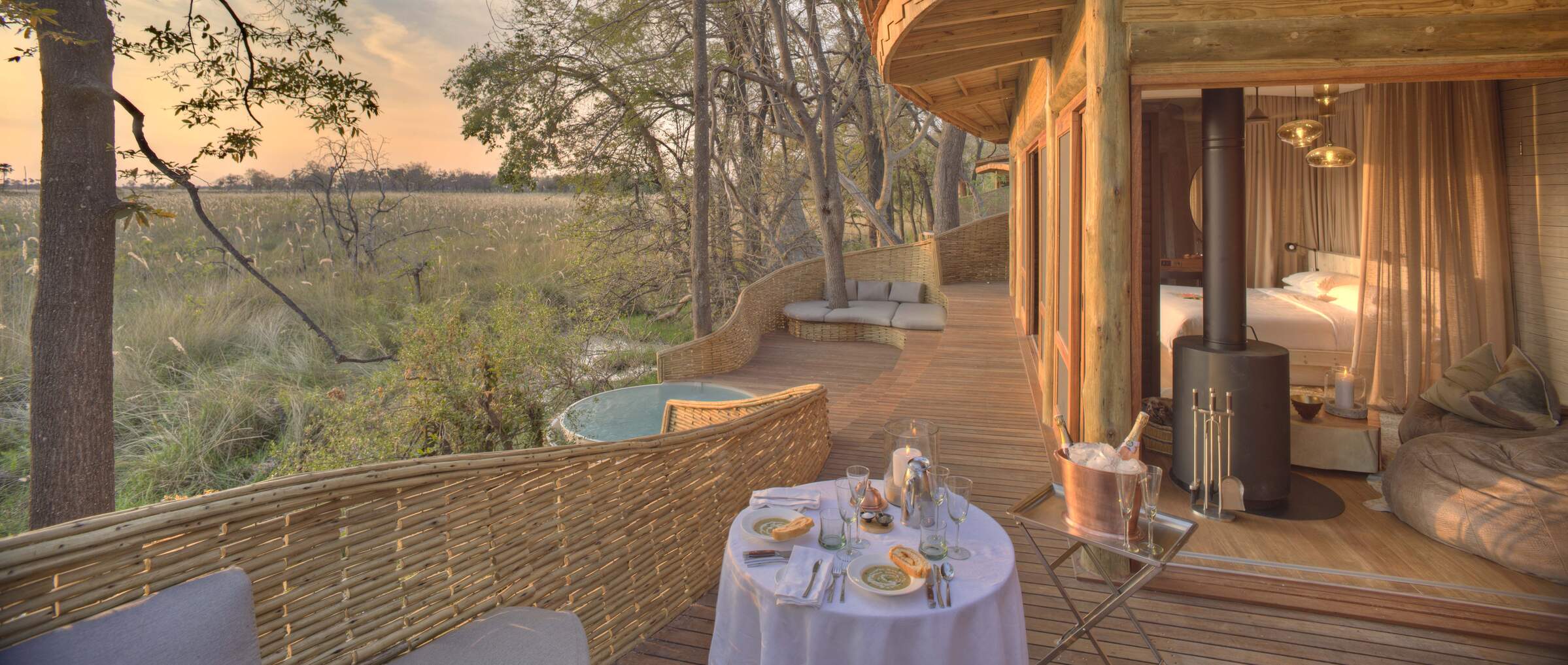
Sandibe Safari Lodge
The luxurious Sandibe Okavango Safari Lodge lies in a private concession in the heart of the Okavango Delta, beside Moremi Game Reserve, with superb big-game viewing.
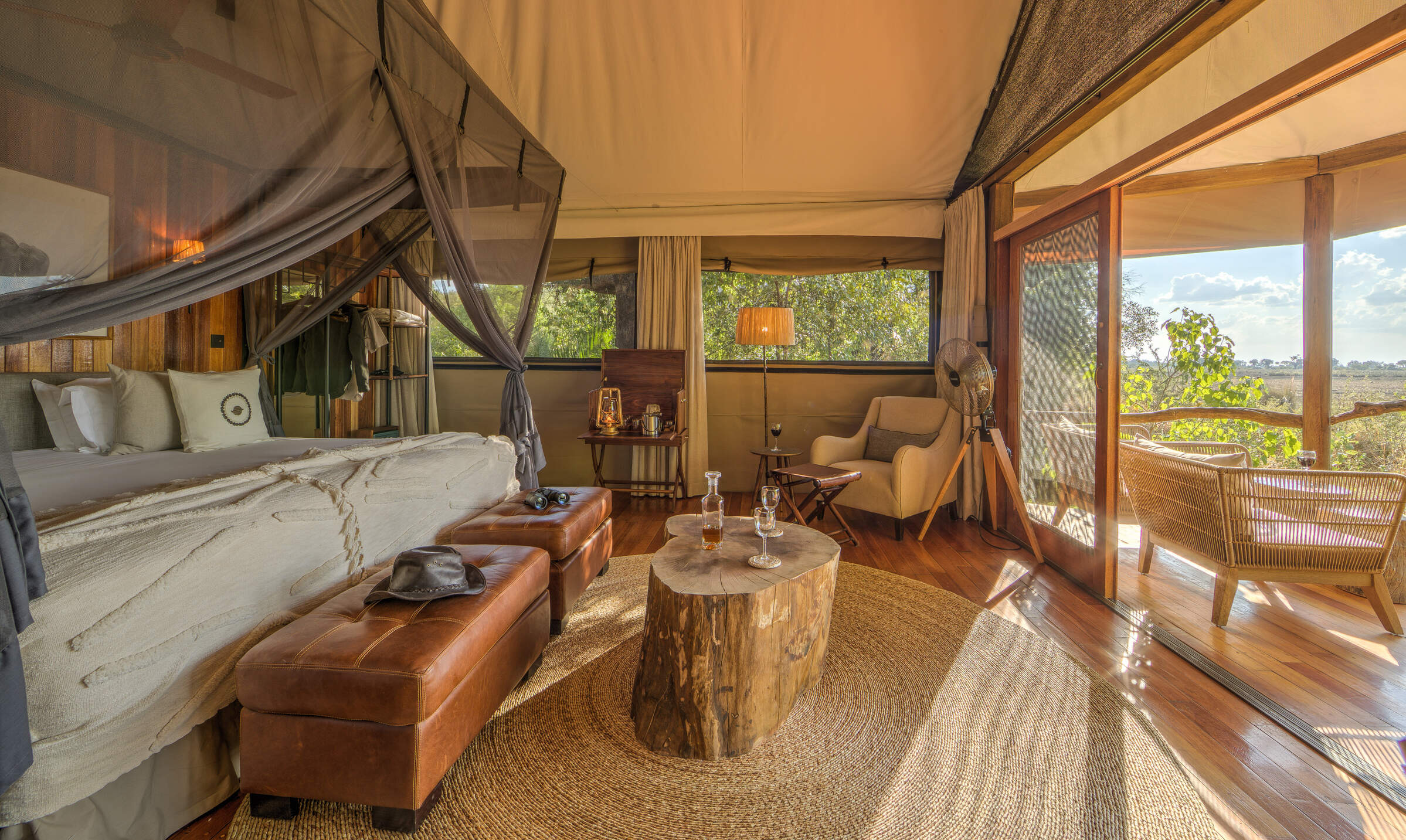
Kanana
In a beautiful part of the Delta, Kanana focuses on fantastic water activities and birding – including exclusive access to an impressive heronry.
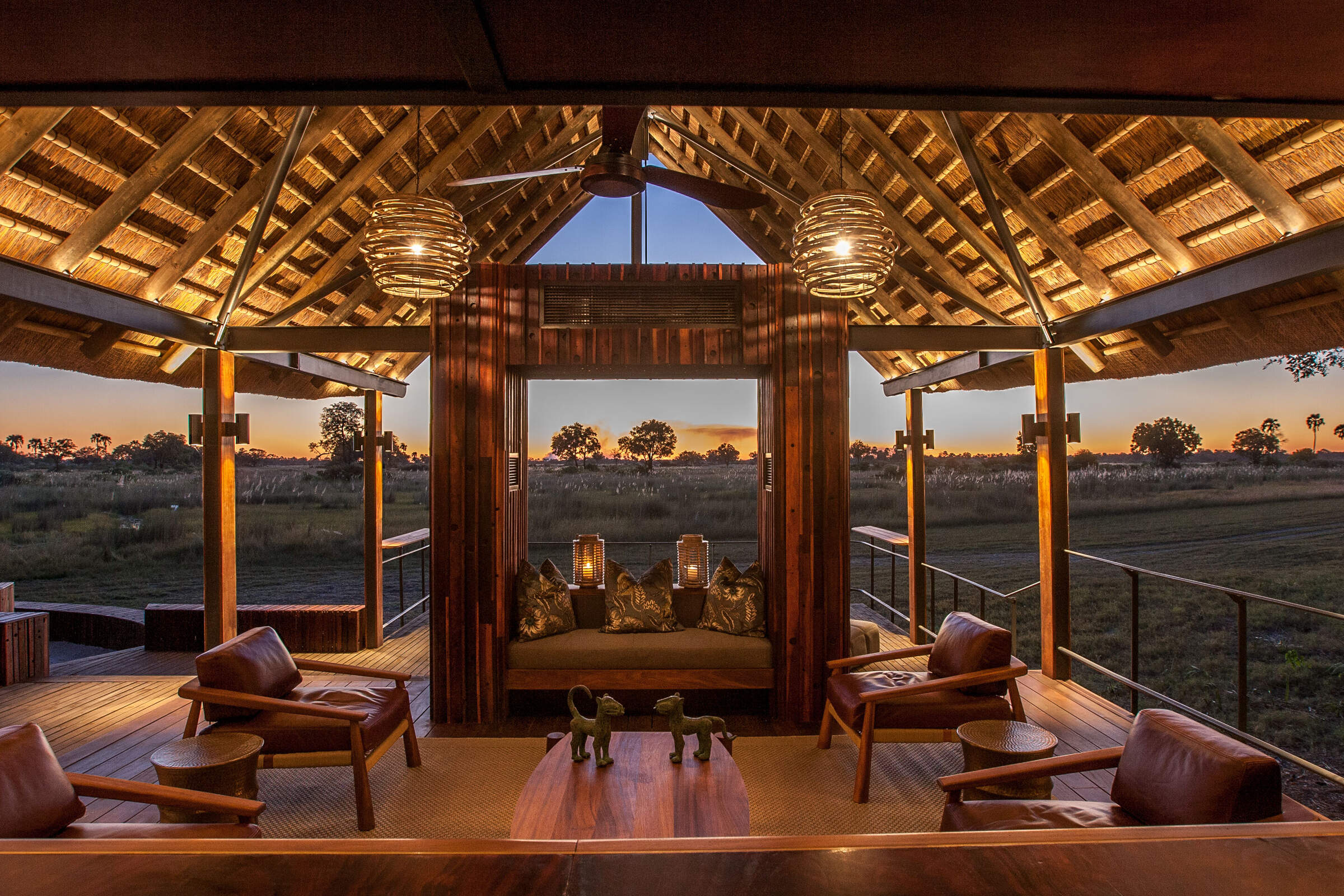
Chitabe Camp
In the southern Okavango Delta, the excellent Chitabe Camp concentrates on dry-land safaris in an area that we've found particularly good for wild dog sightings.
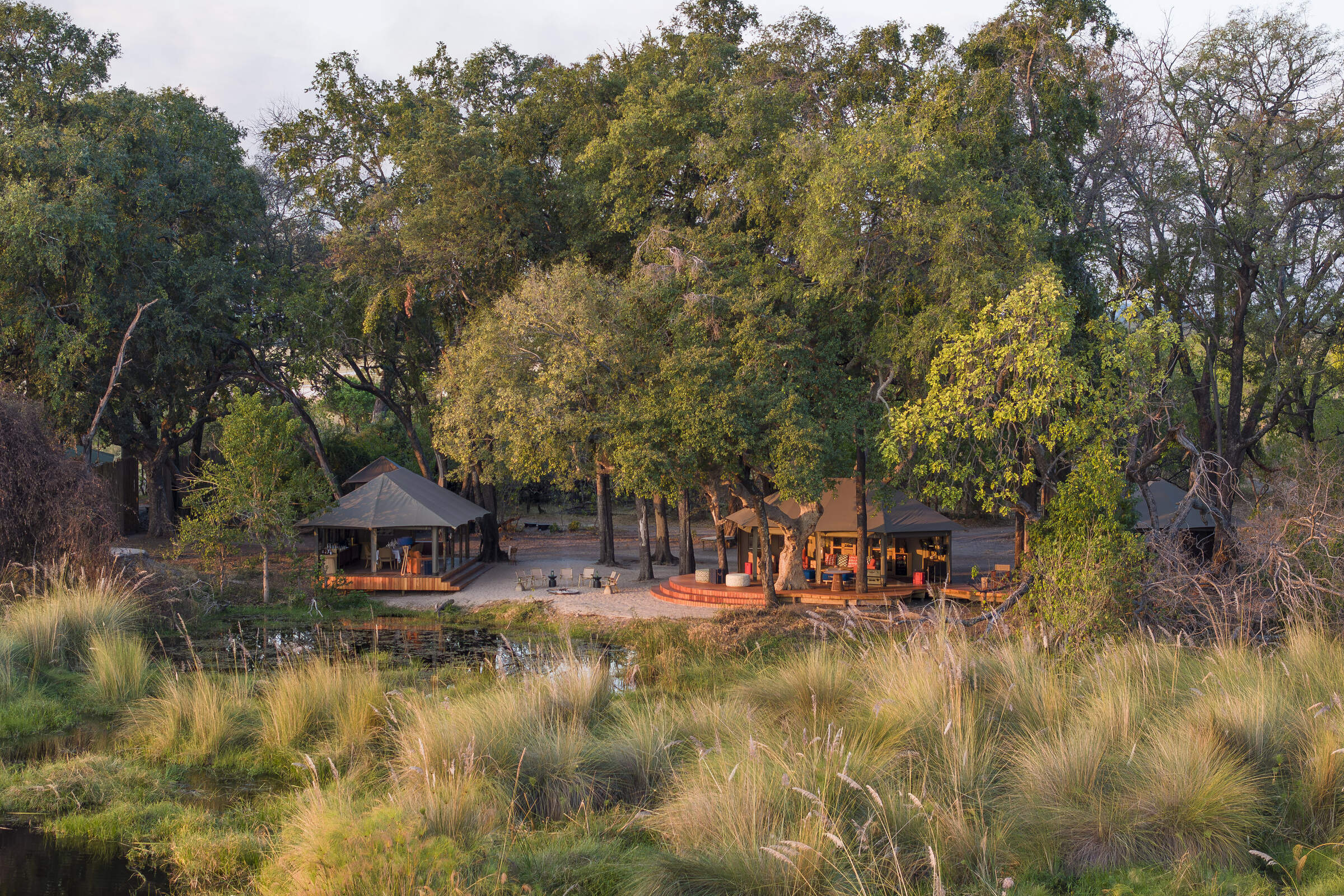
Shinde Footsteps
Small and simple, but comfortable, Shinde Footsteps focuses on walking safaris as well as game drives; it also runs a special children's programme so is particularly suitable for families.
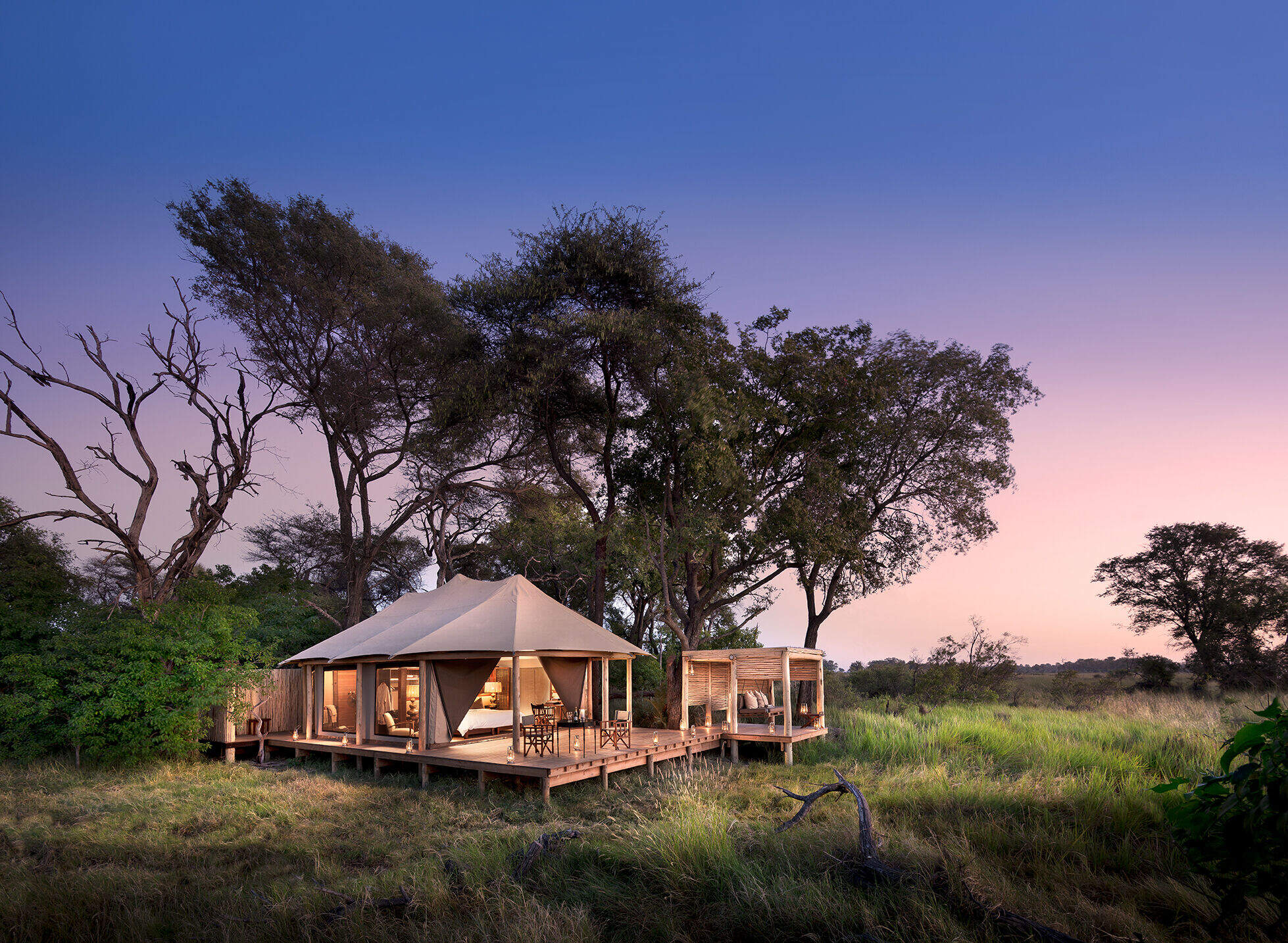
Nxabega Tented Camp
Nxabega offers a selection of both land- and water-based activities, plus very good guiding, food and service, but game viewing can be somewhat erratic.
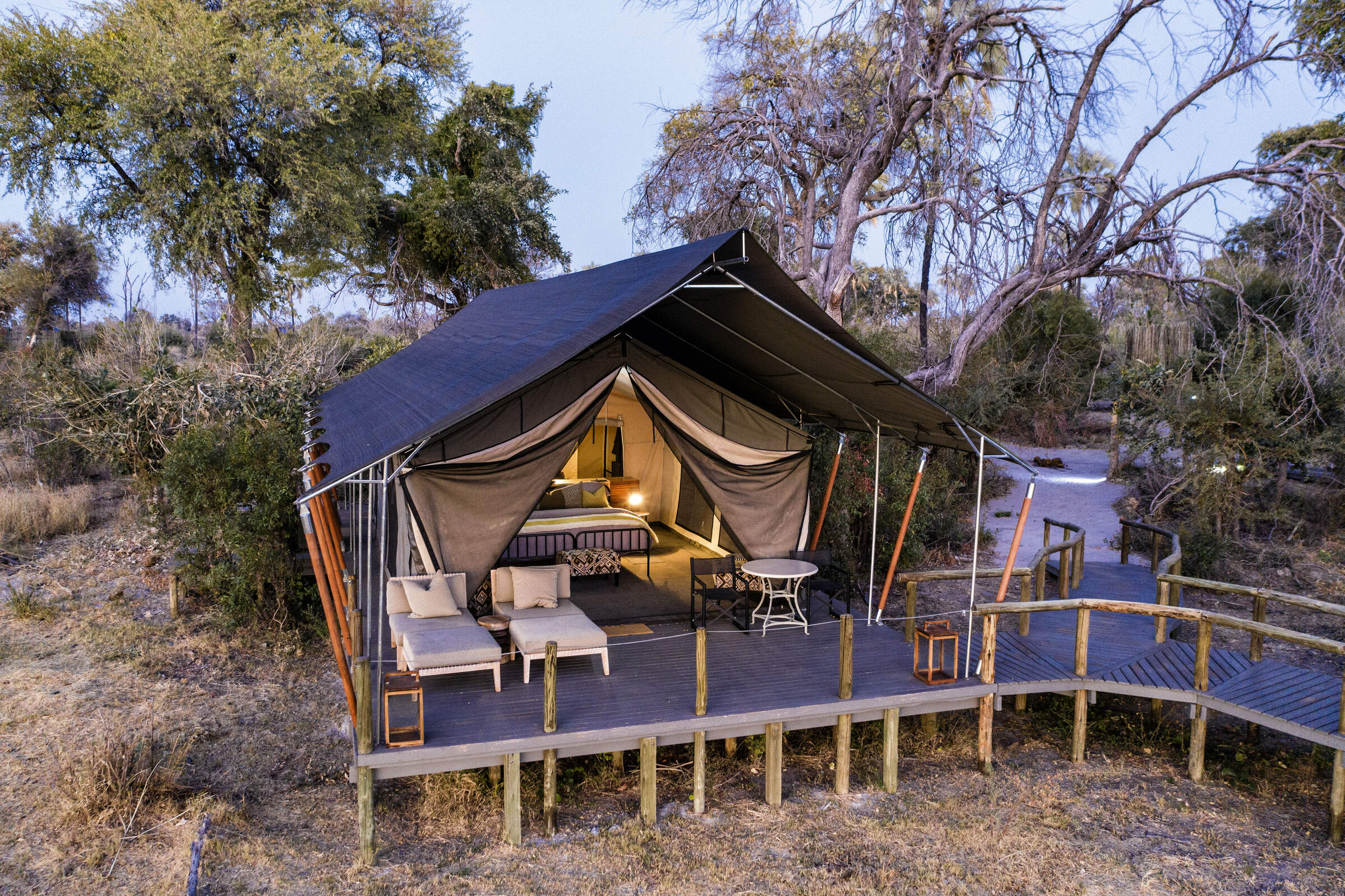
Gomoti Plains
Overlooking a tributary of the Gomoti River, Gomoti Plains Camp is a classically designed camp with very comfortable tents in a good game-viewing area.
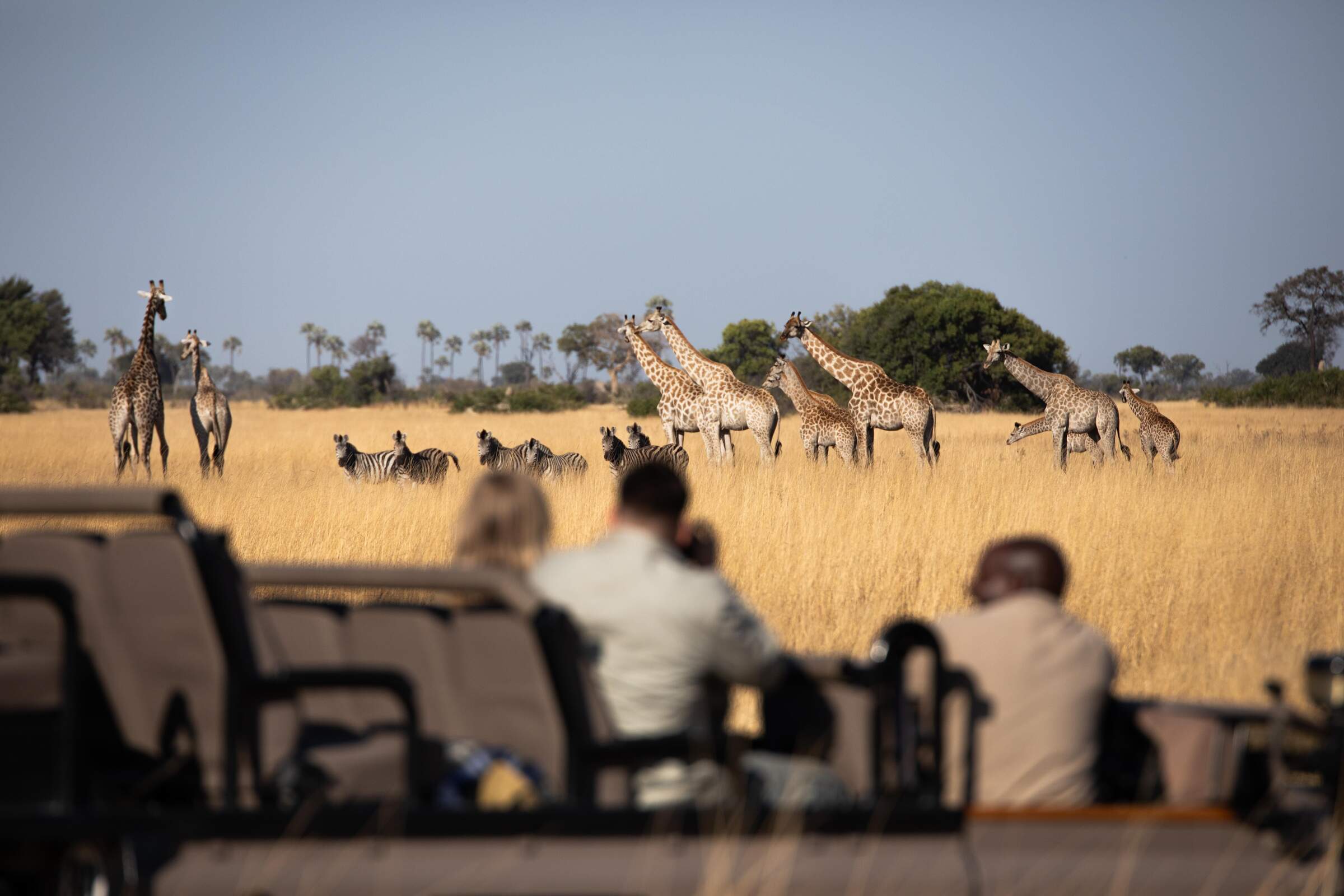
Tubu Tree Camp
A traditional tented camp with a distinctive tree-house feel, Tubu Tree offers some of the best game viewing in the Jao Reserve.
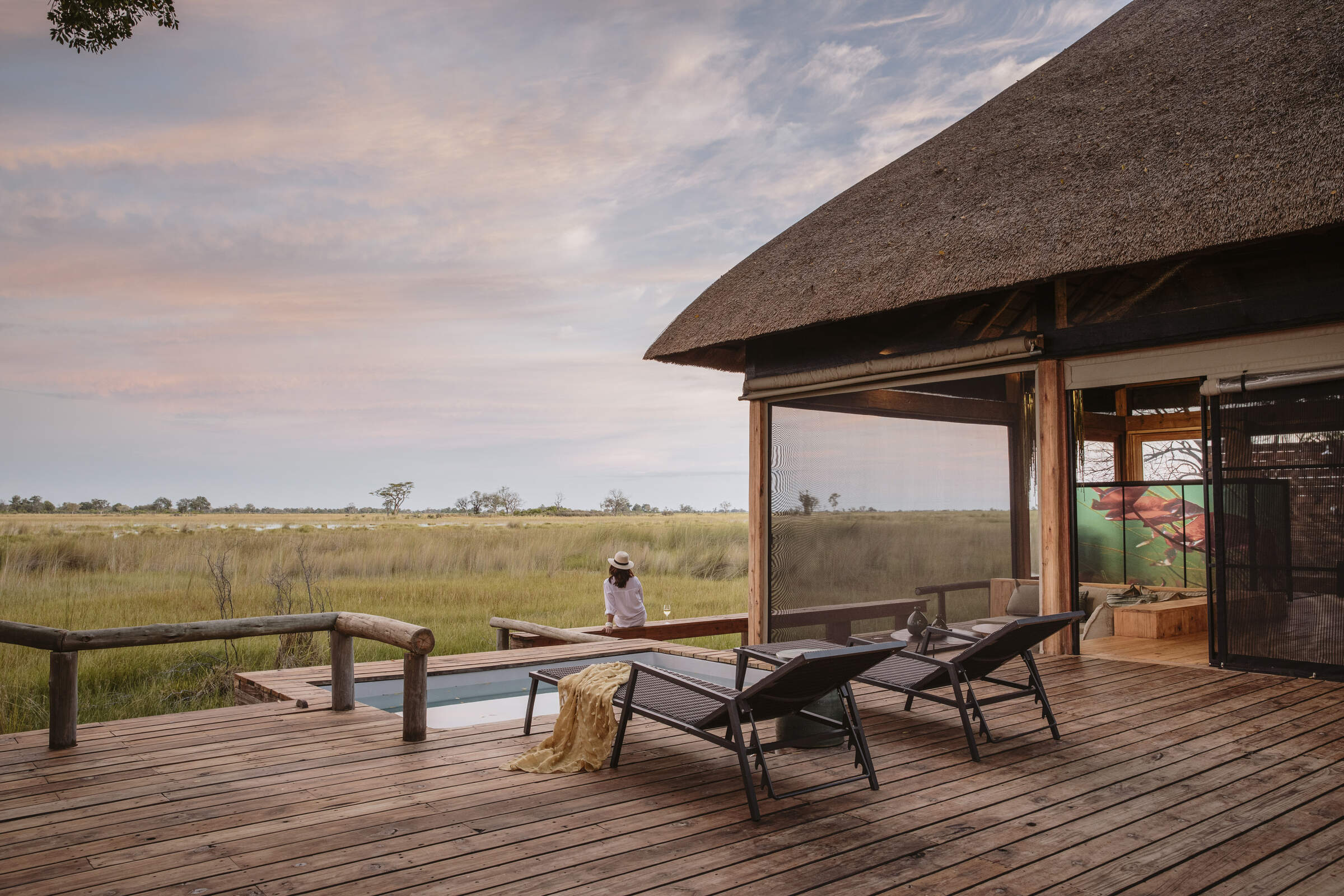
Vumbura Plains
Indulgently stylish and luxurious, Vumbura Plains offers superb game viewing and birding on an exceptionally varied private reserve.
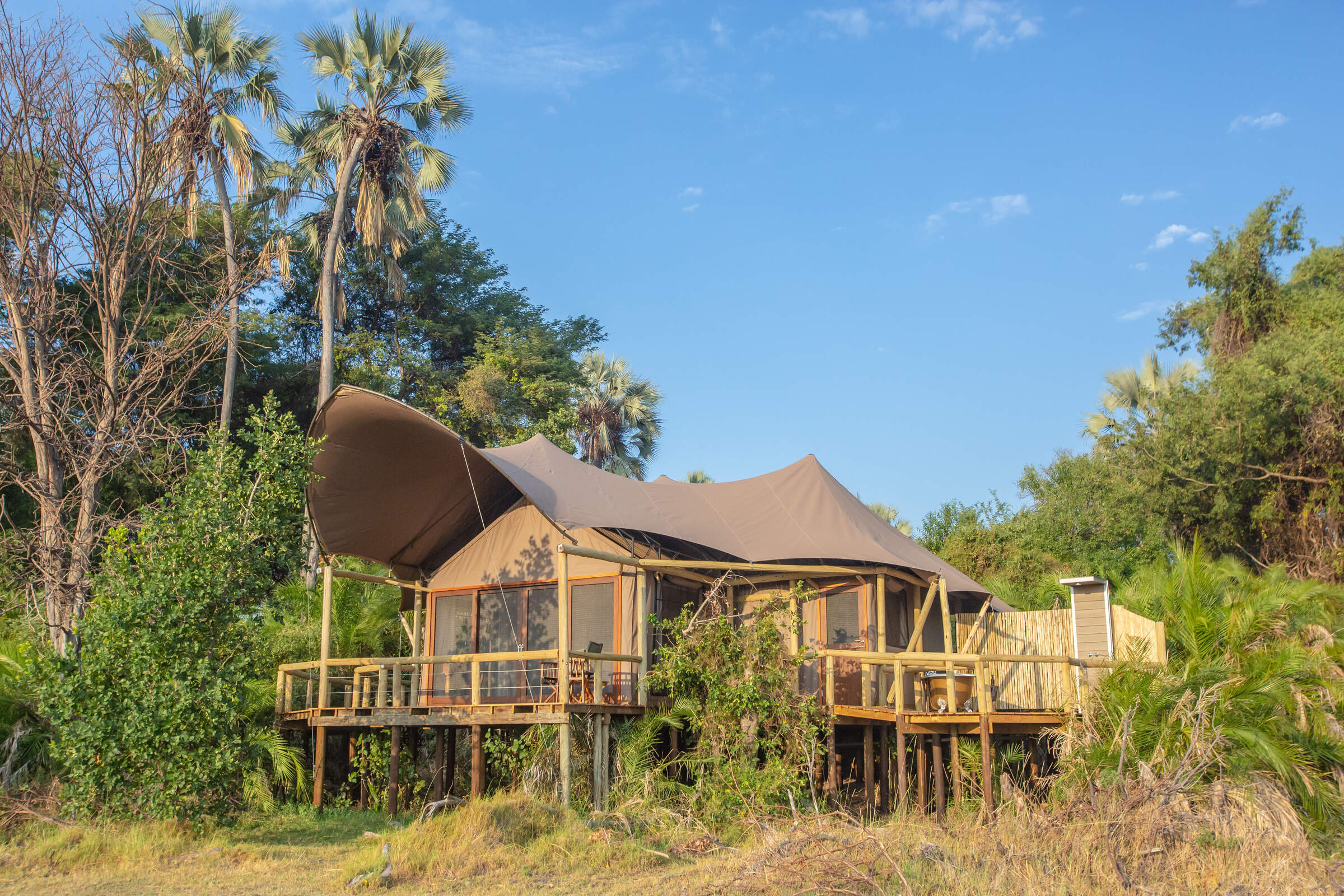
Jacana Camp
Jacana Camp is a small safari camp with an informal island feel; it is ideal for water-based activities in the Delta and offers excellent birdwatching.
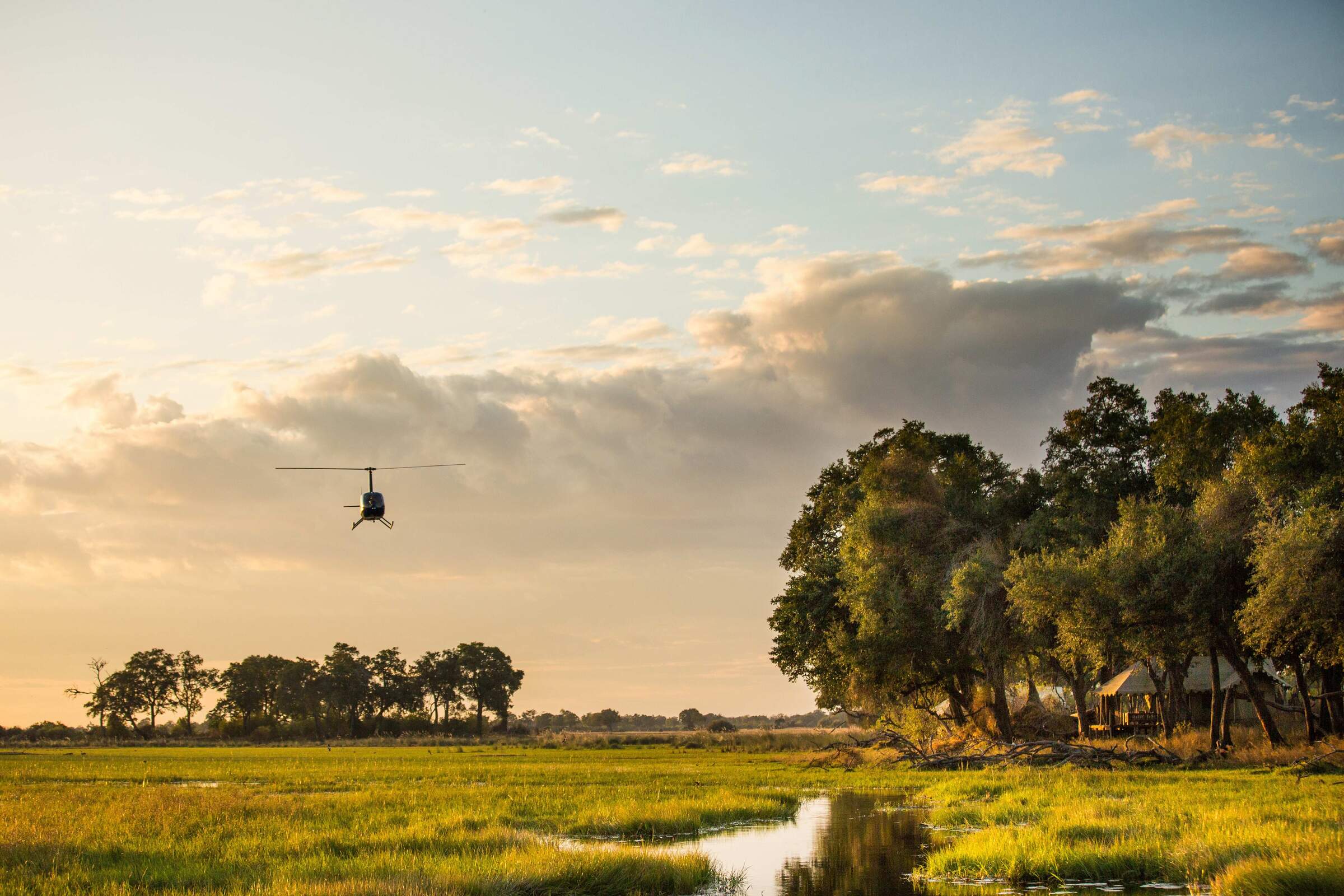
Duba Explorers Camp
Intimate and elegant, Duba Explorers Camp promises a firm safari focus in a remote corner of the Okavango, led by a team who value the highest guiding and hosting standards.
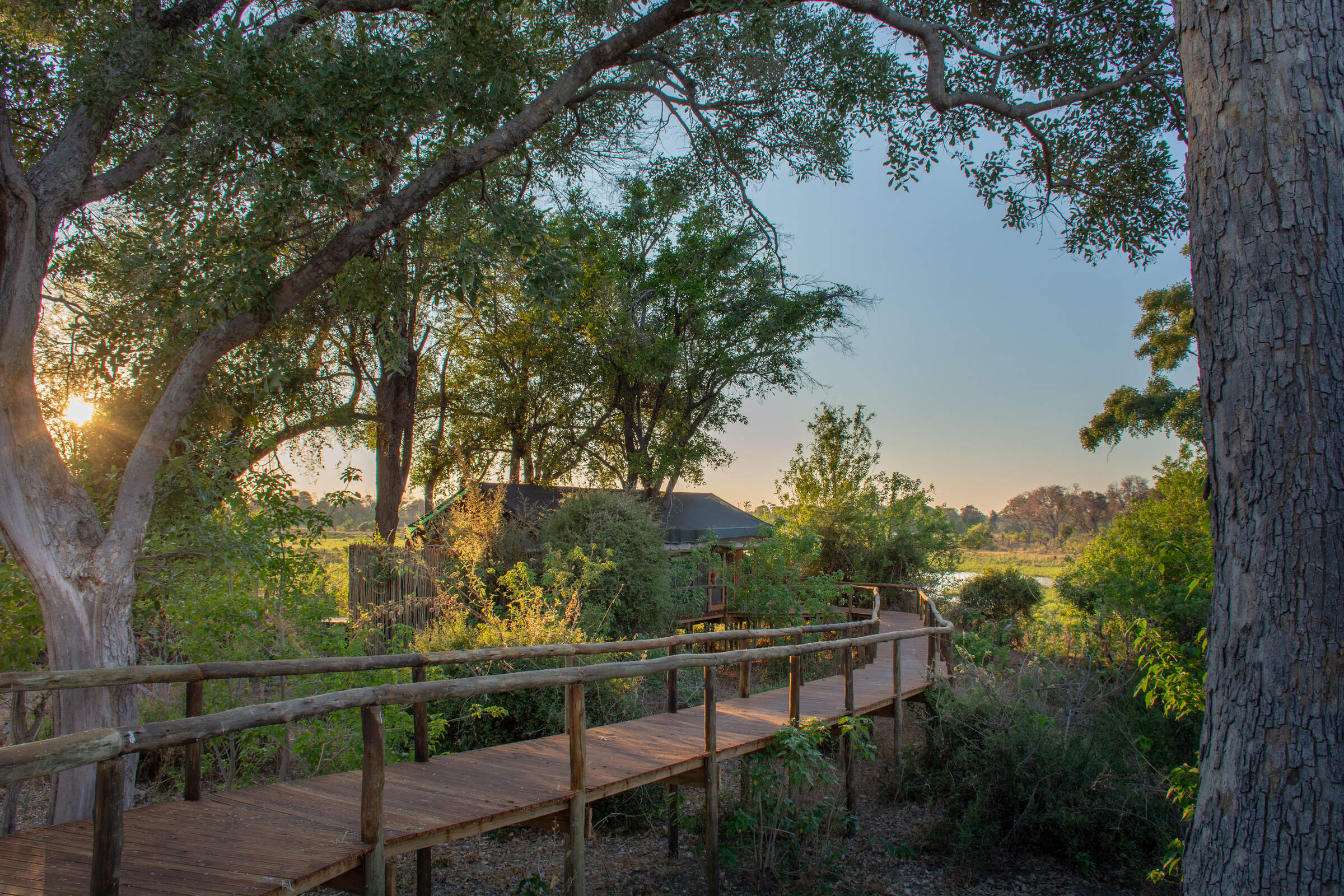
Mma Dinare
Beautifully located in a private concession overlooking the Gomoti River, the traditional Mma Dinare is very well-priced for the Okavango Delta.
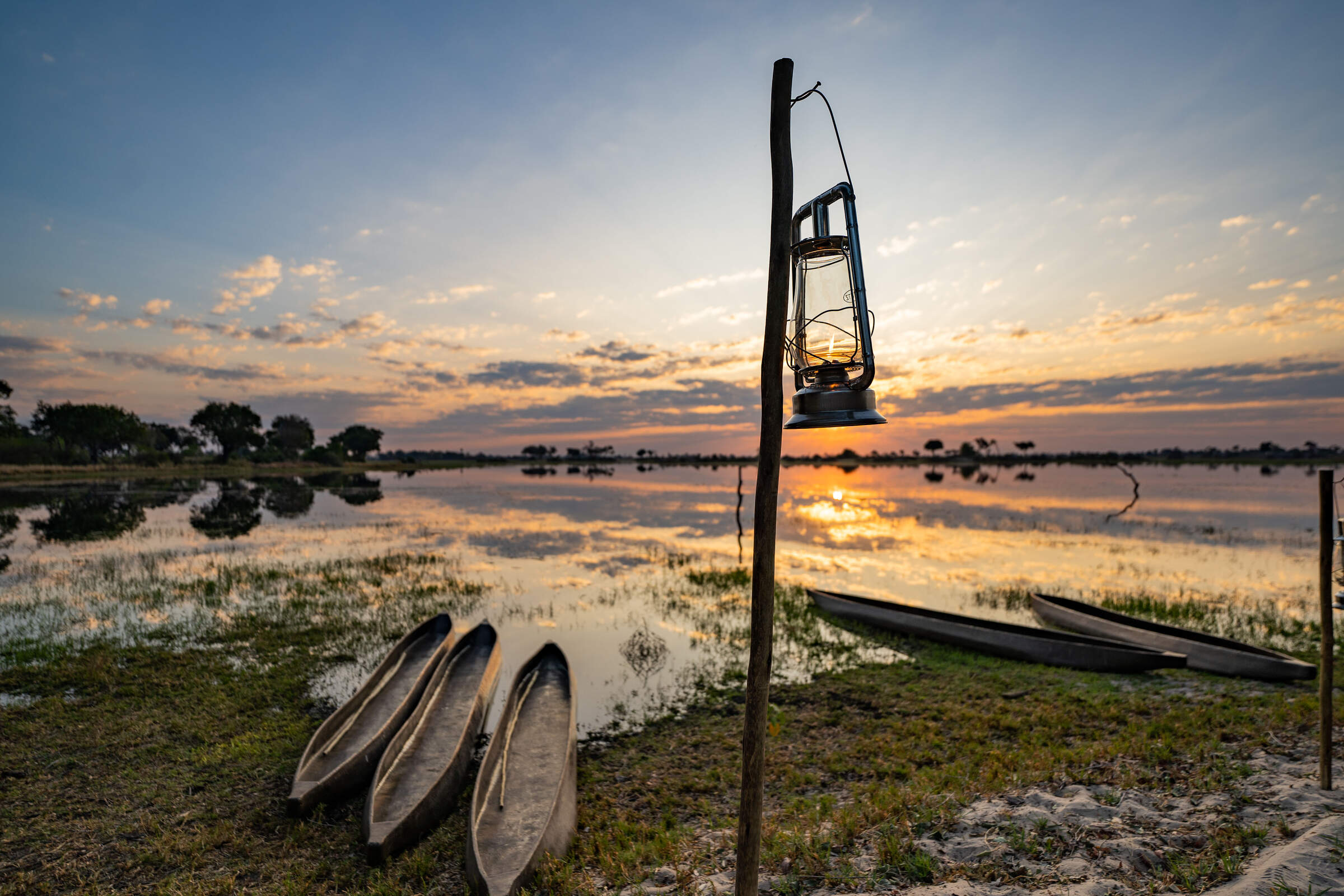
Pom Pom Camp
Amidst stunning Okavango Delta scenery, Pom Pom offers idyllic mokoro trips in season, great birdwatching, and increasingly good big-game sightings, especially leopards.
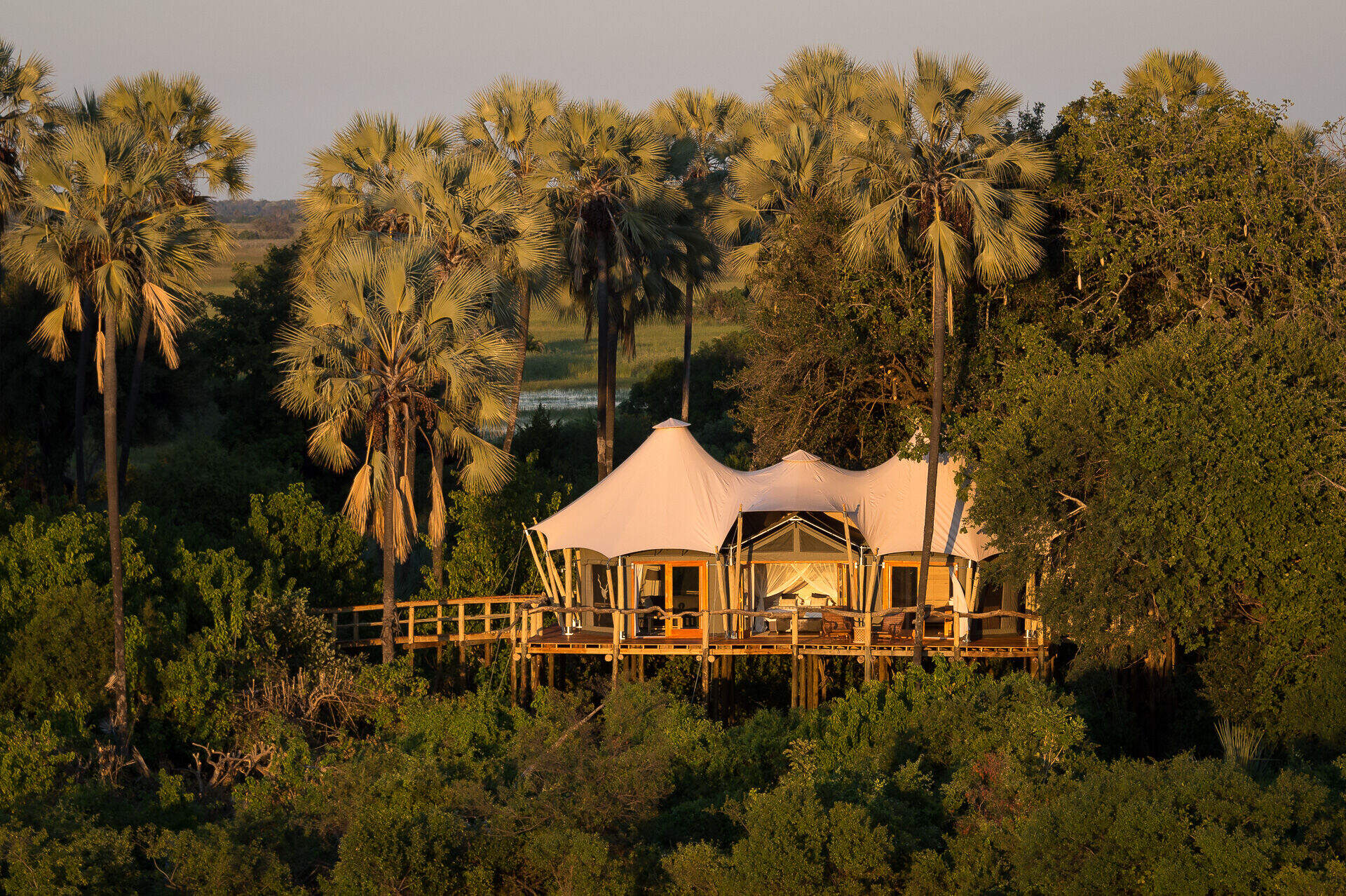
Kwetsani Camp
Deep in the Delta, overlooking a floodplain, Kwetsani Camp is a small, high-end camp with good access to areas for land and water-based activities.
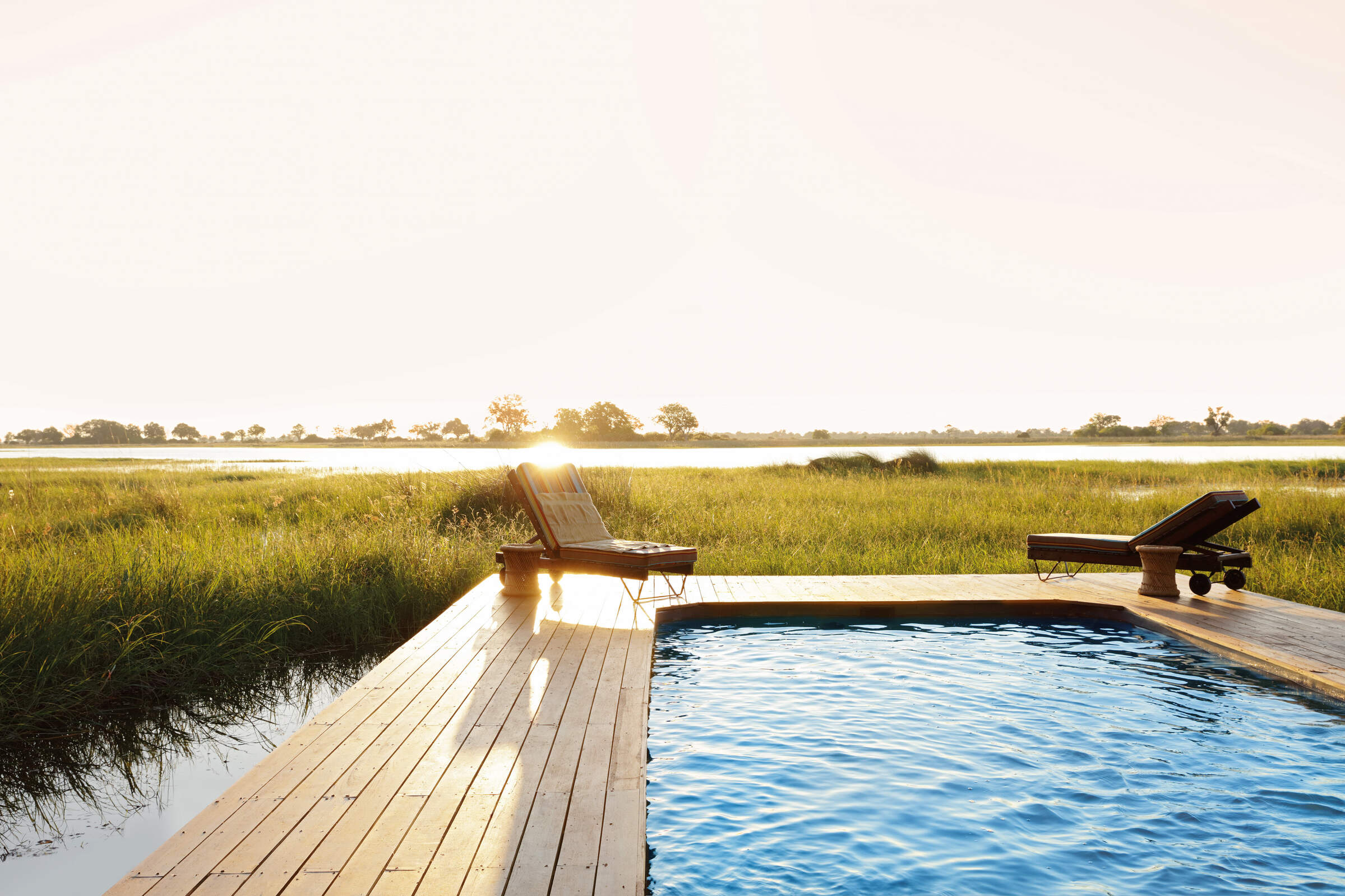
Mapula Lodge
For an affordable yet varied safari encompassing a range of eco-systems, the traditional Mapula Lodge takes a lot of beating.
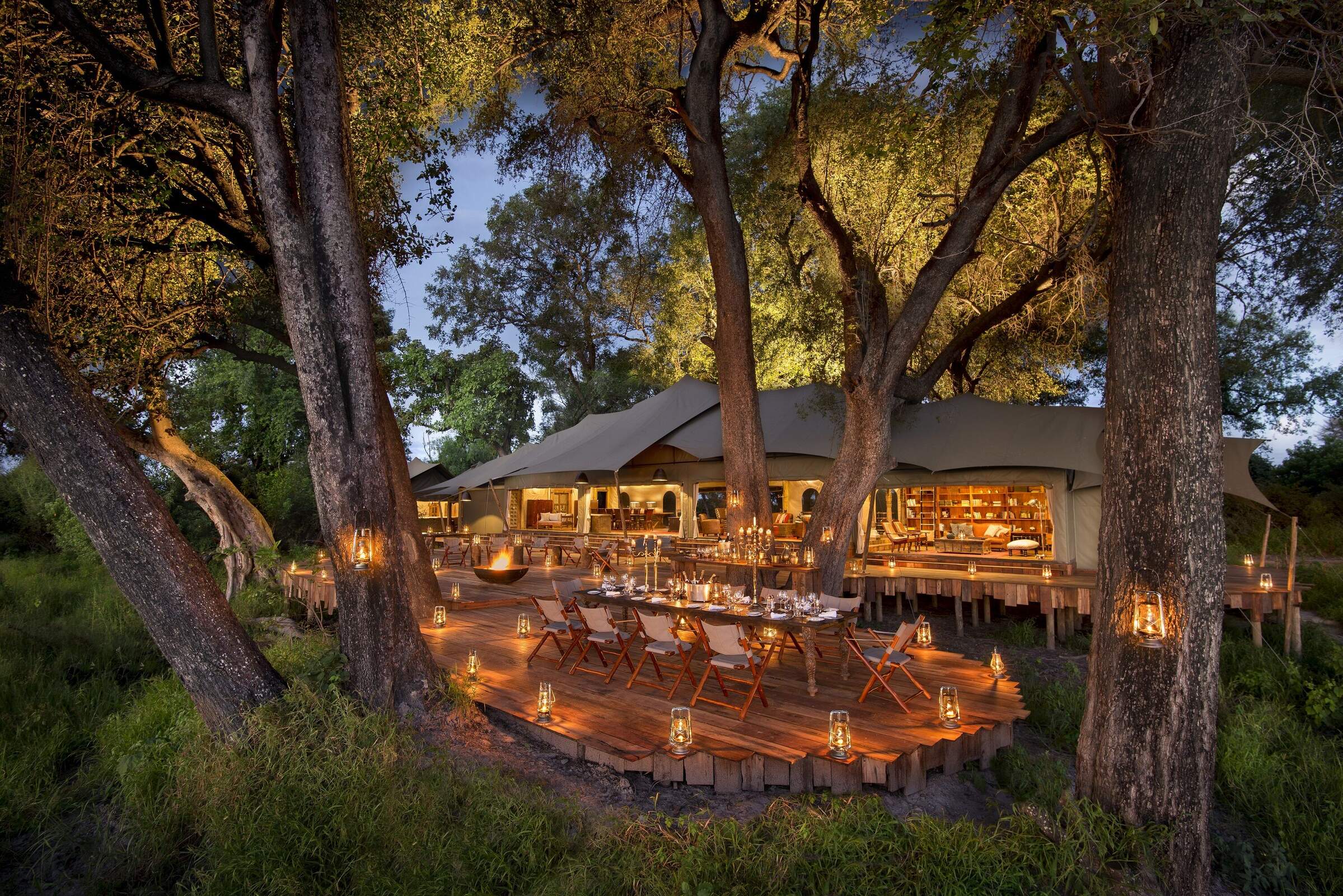
Duba Plains Camp
Duba Plains Camp is a traditional yet luxurious safari camp, best known for the thrilling lion behavior interaction that is often see during the day.
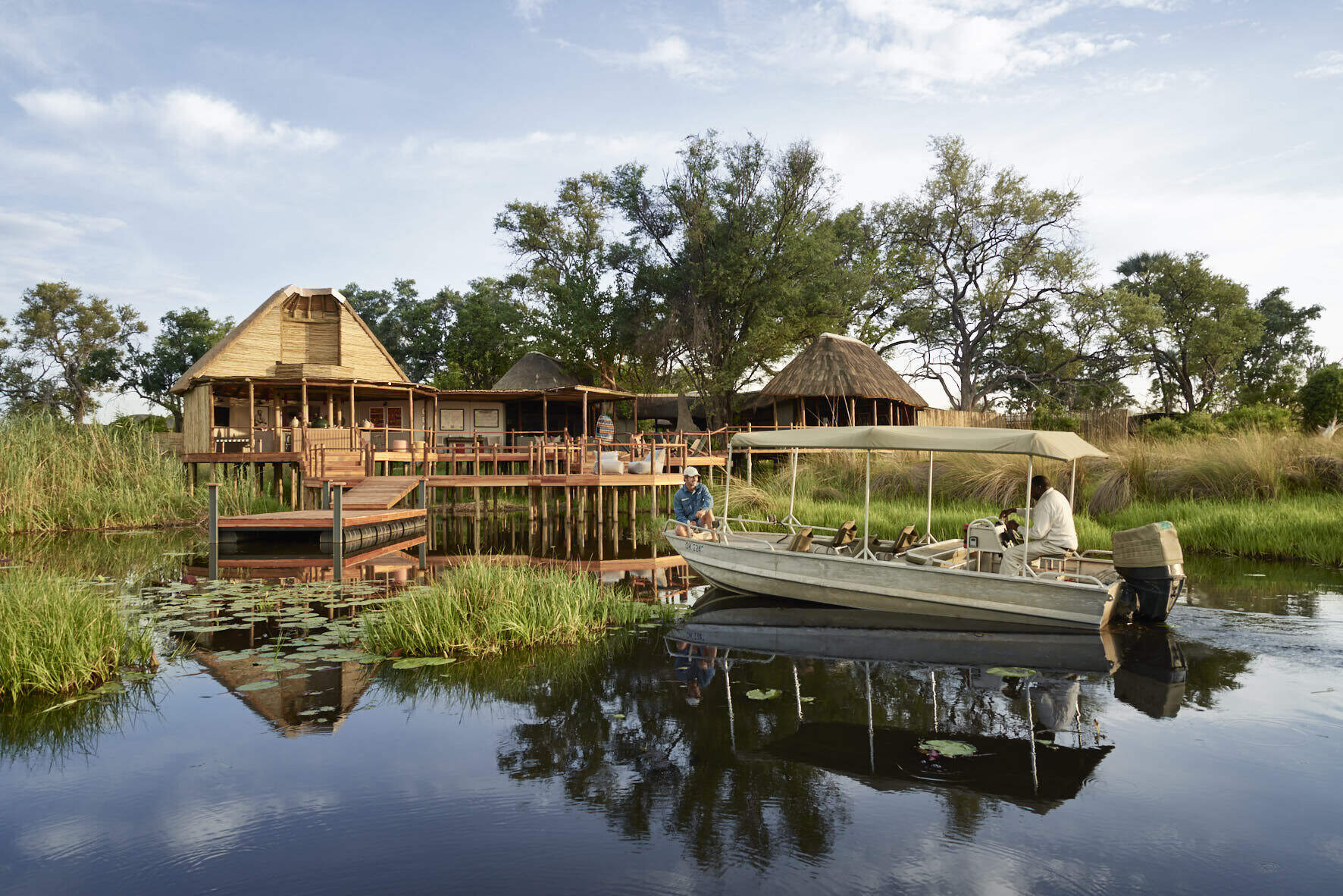
Baines' Camp
Baines' Camp is a well-run, intimate camp in a pretty part of the Okavango, offering a range of activities and the option to spend a morning walking with elephants.
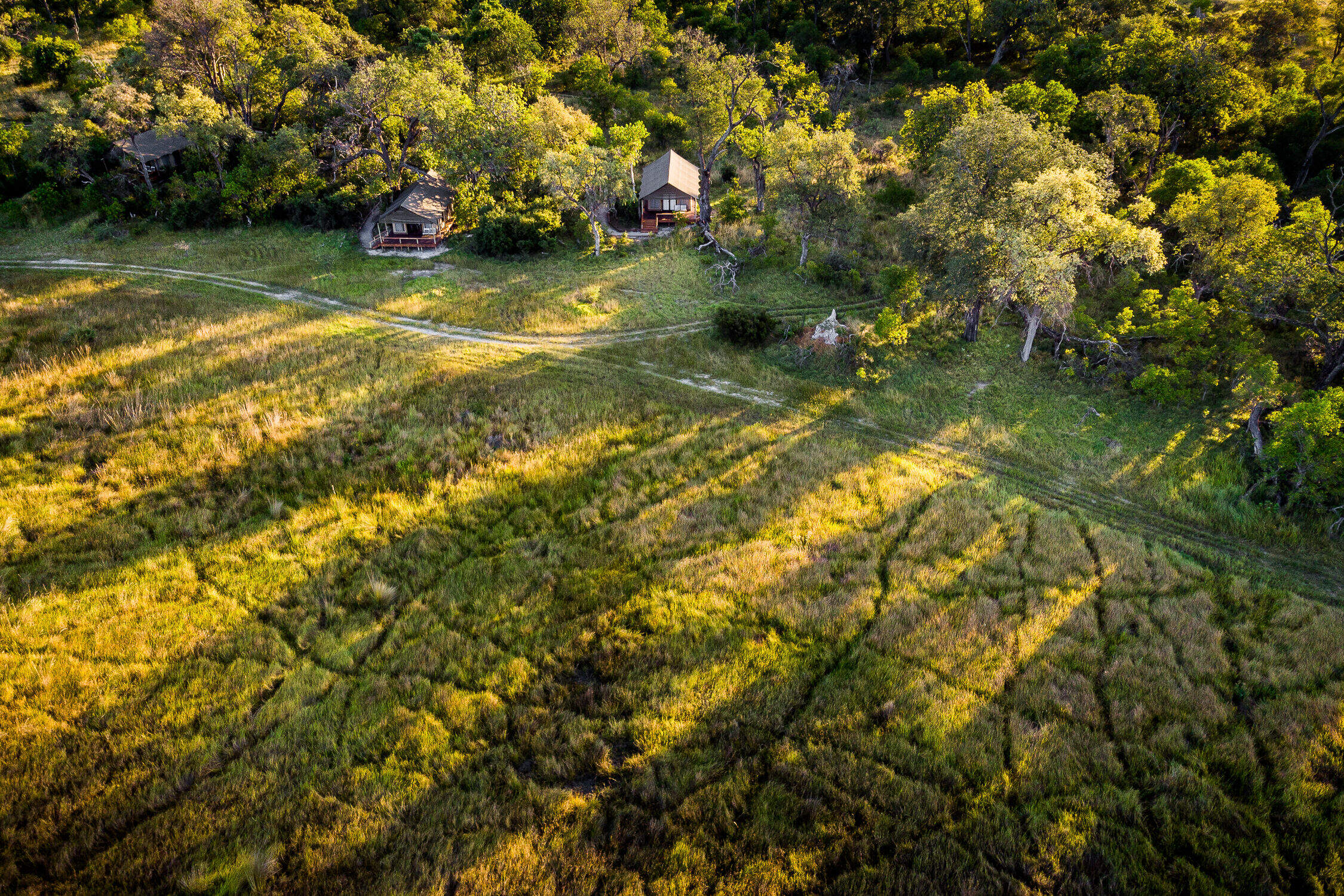
Stanley's Camp
In a private concession south of Moremi Game Reserve, Stanley's Camp offers 4WD game drives, seasonal water activities and a superb elephant interaction.
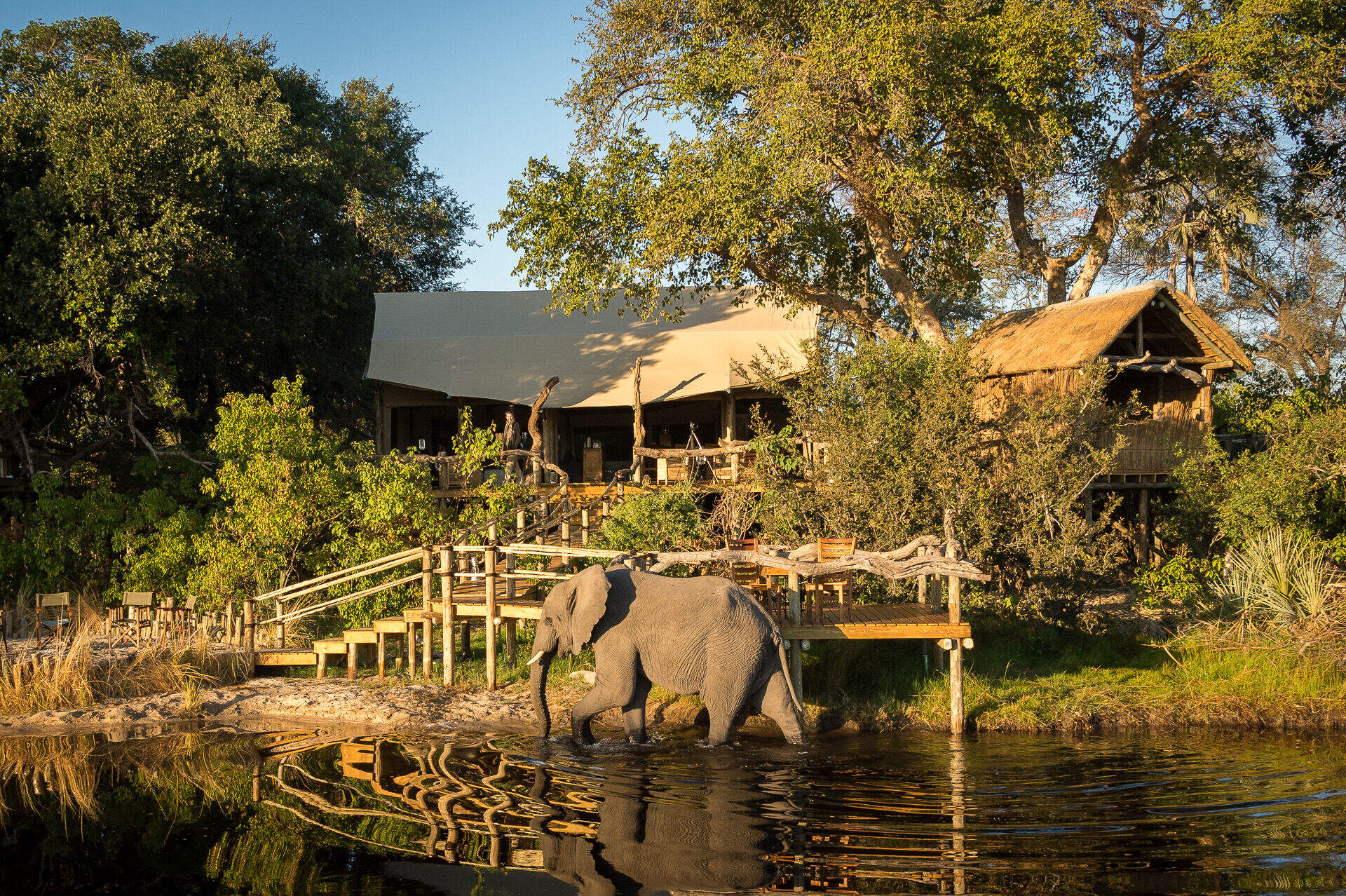
Little Tubu
Little Tubu is a new, traditional camp with just three tented chalets and a distinctive tree-house feel. The areas around it can be explored by water and land-based activities year round.
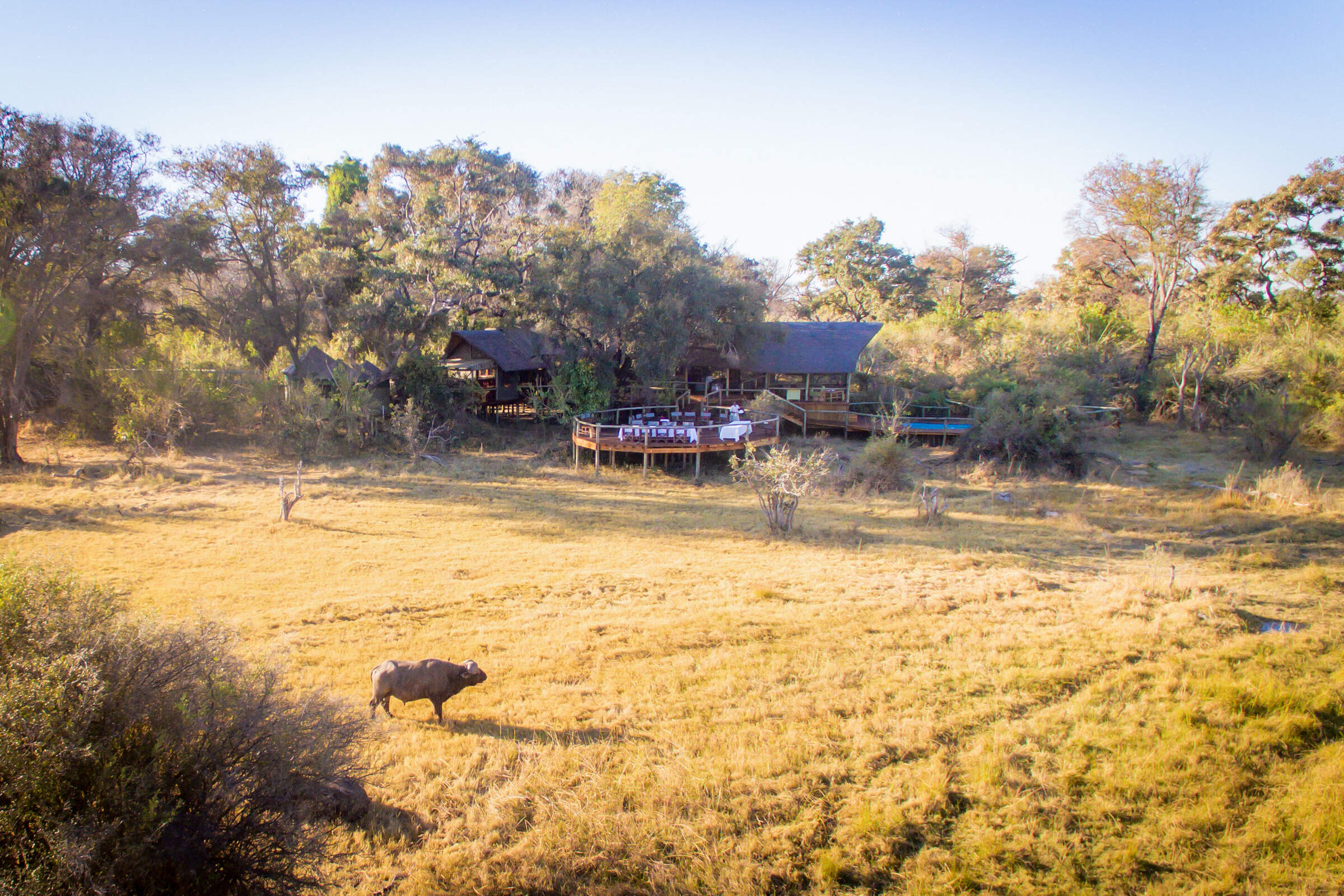
Rra Dinare
Located in a private concession in the southern reaches of the Okavango Delta, overlooking the Gomoti River, Rra Dinare is a traditional-style, well-priced camp.
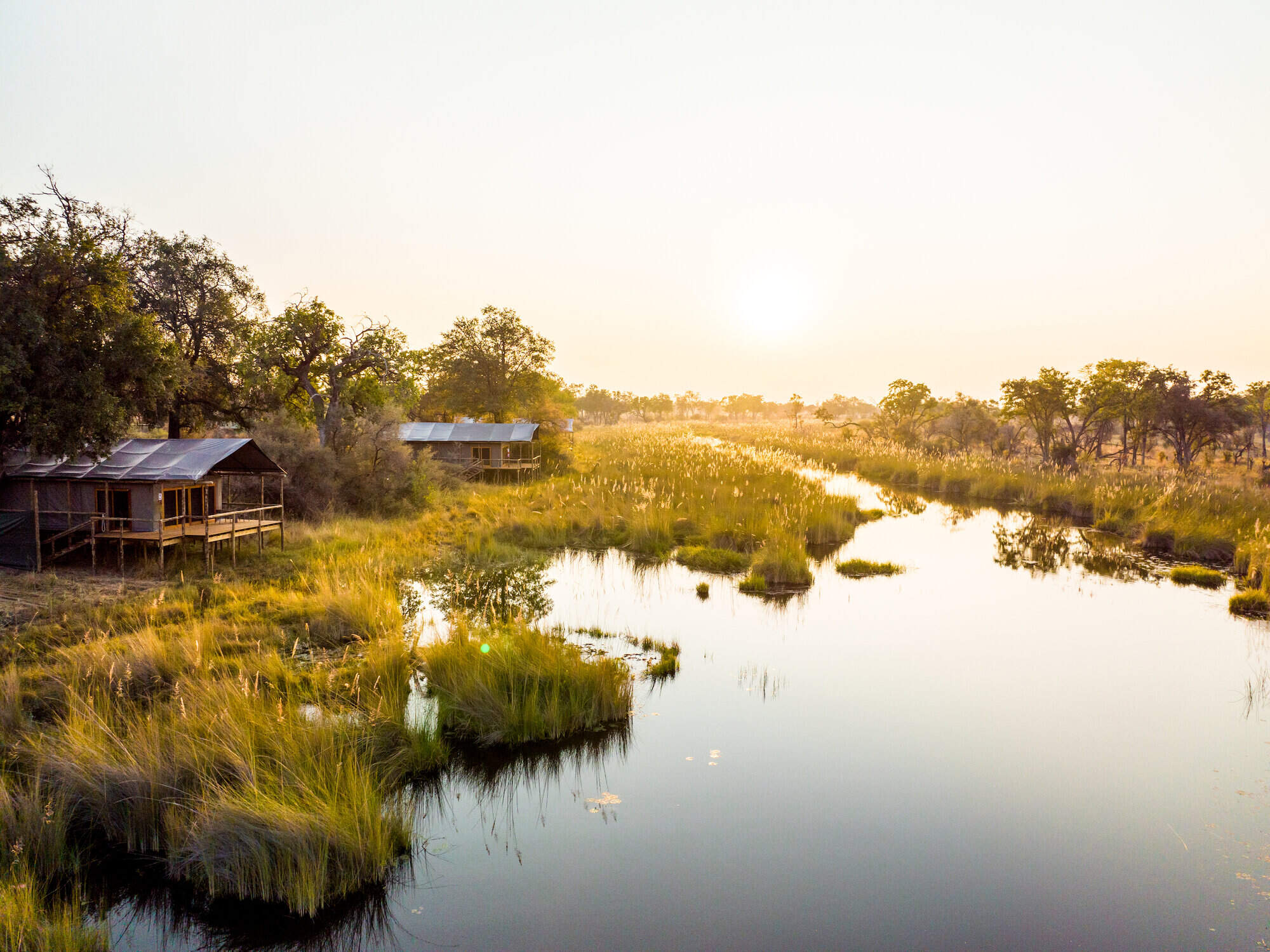
4 Rivers
4 Rivers is a new camp in a previously in accessible area of the excellent Kwara concession.
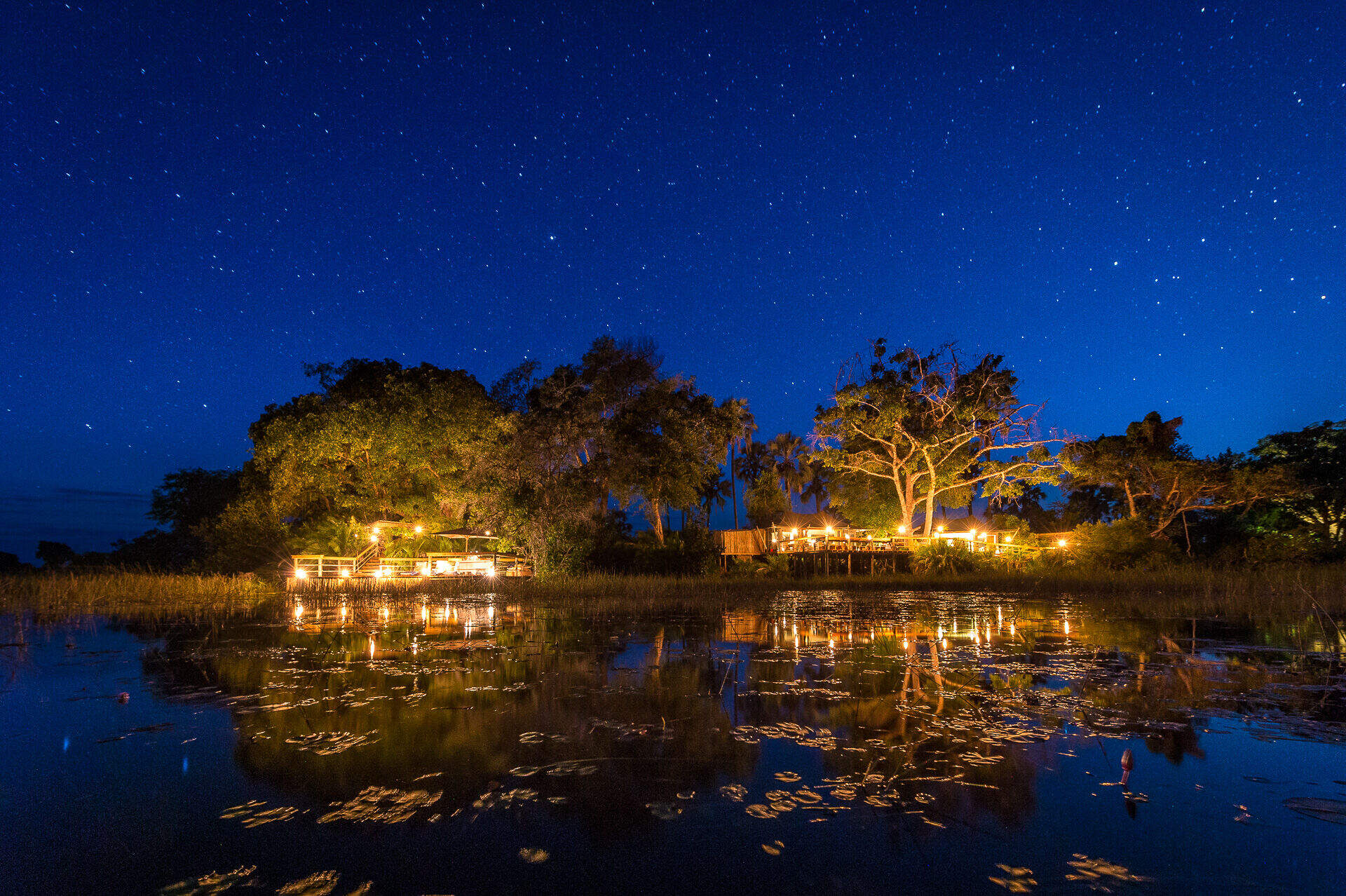
Pelo Camp
In a pristine wilderness environment deep in the Okavango Delta, the seasonal Pelo Camp is tented yet comfortable, with activities focusing on excursions by mokoro.
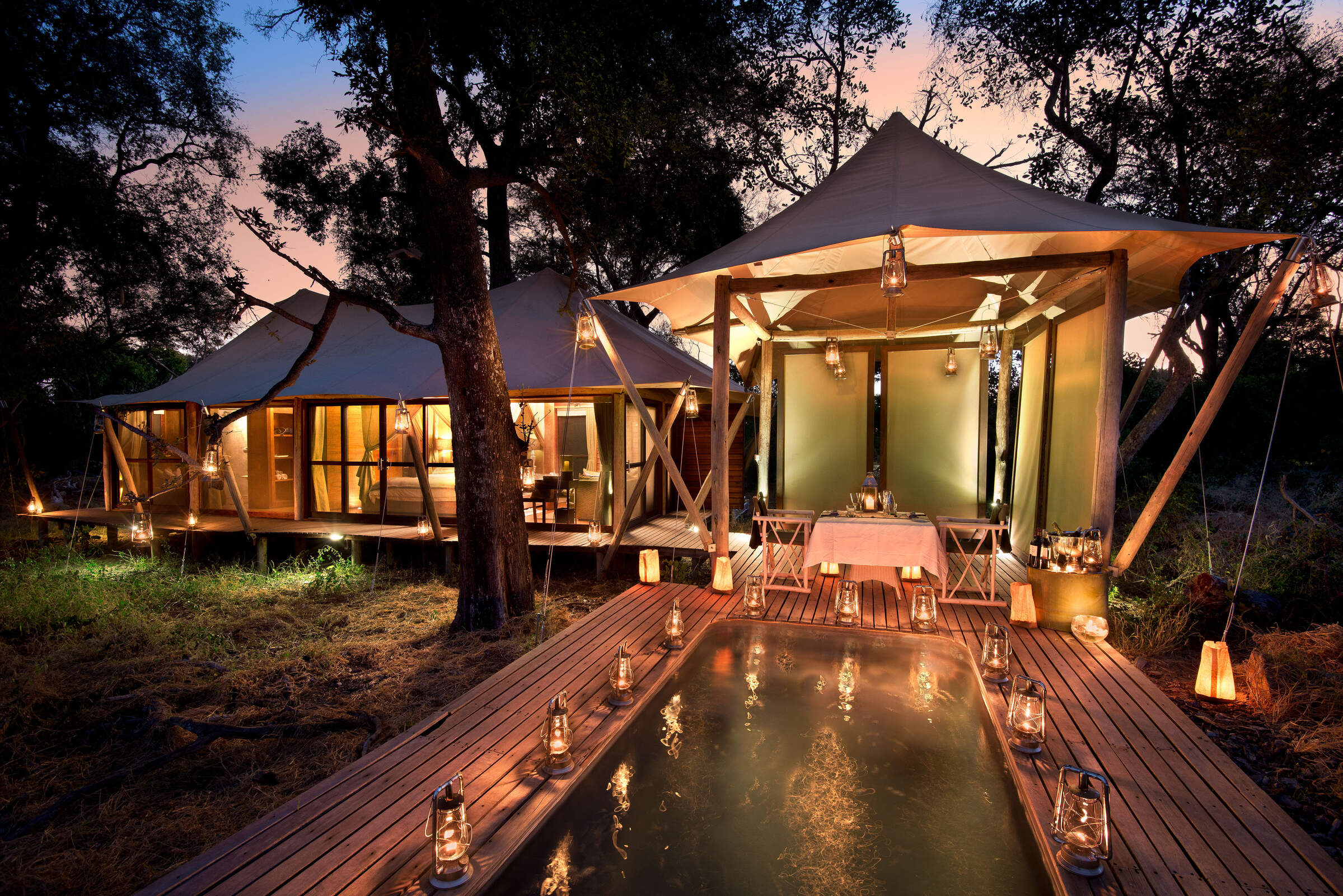
Xaranna
Xaranna is a plush tented camp amongst the idyllic waterways and islands of the Delta. Each air-conditioned tent has a plunge pool. Water activities and pampering are the focus here.
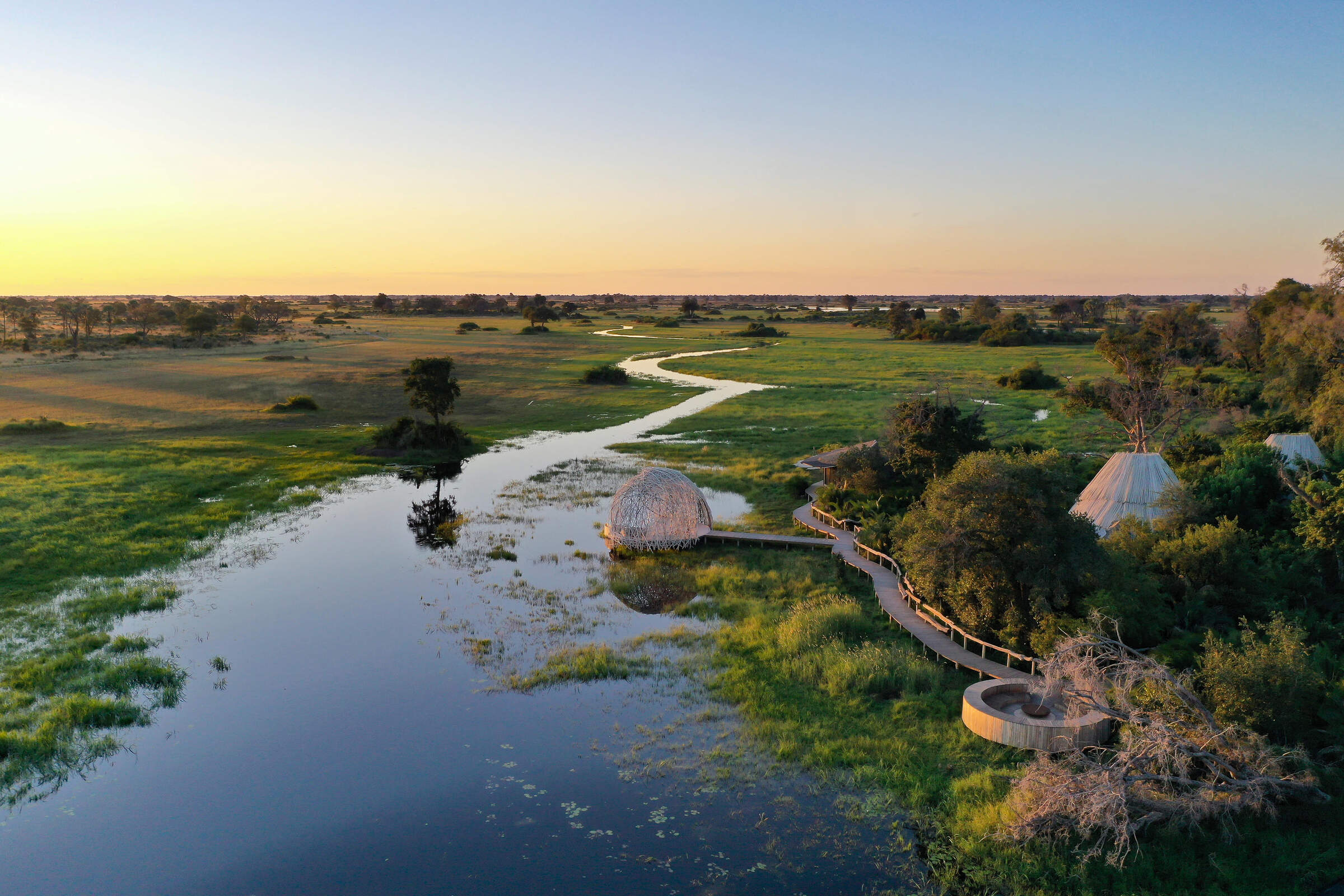
Jao Camp
In a beautiful area with fantastic water activities, Jao combines an idyllic location with high levels of luxury and service, and a top-end spa.
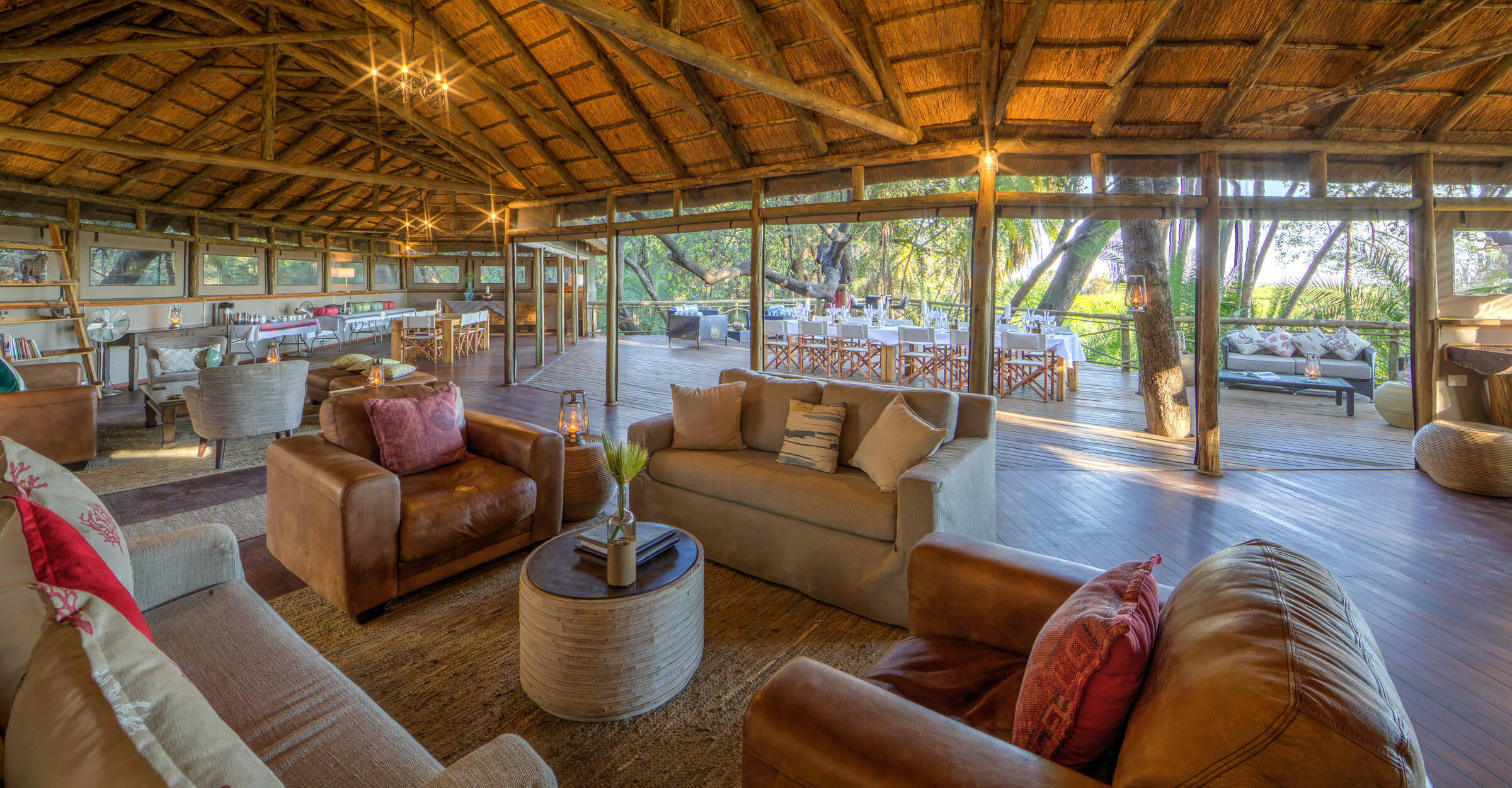
Setari Camp
Setari Camp stands on an island dotted with palm trees, close to the base of the Okavango's 'Panhandle", offering primarily water-based activities.
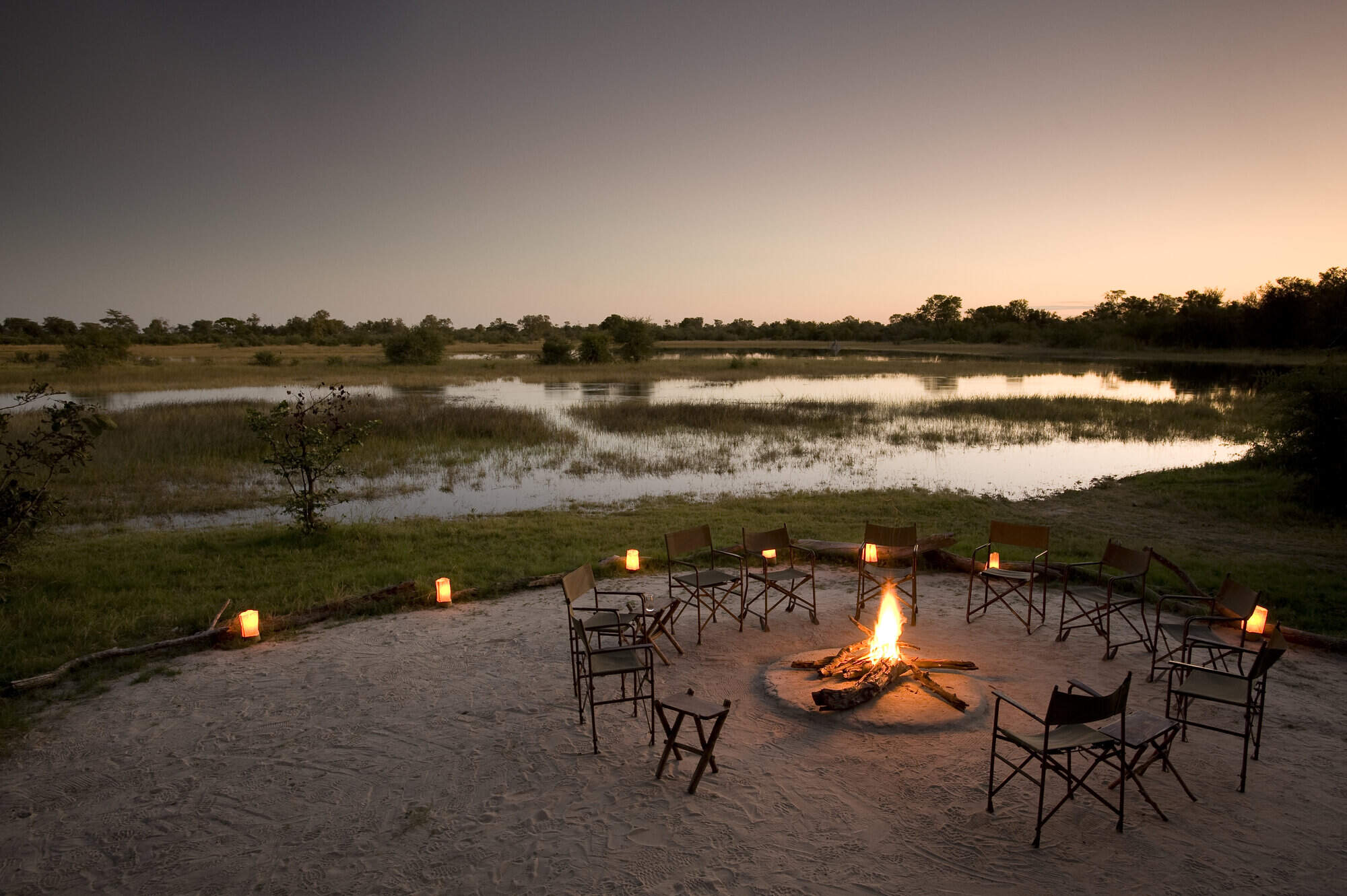
Okavango Explorers
The traditional, tented Okavango Explorers Camp offers a mix of walking, canoeing and game drives led by great guides in a wildlife-rich area.
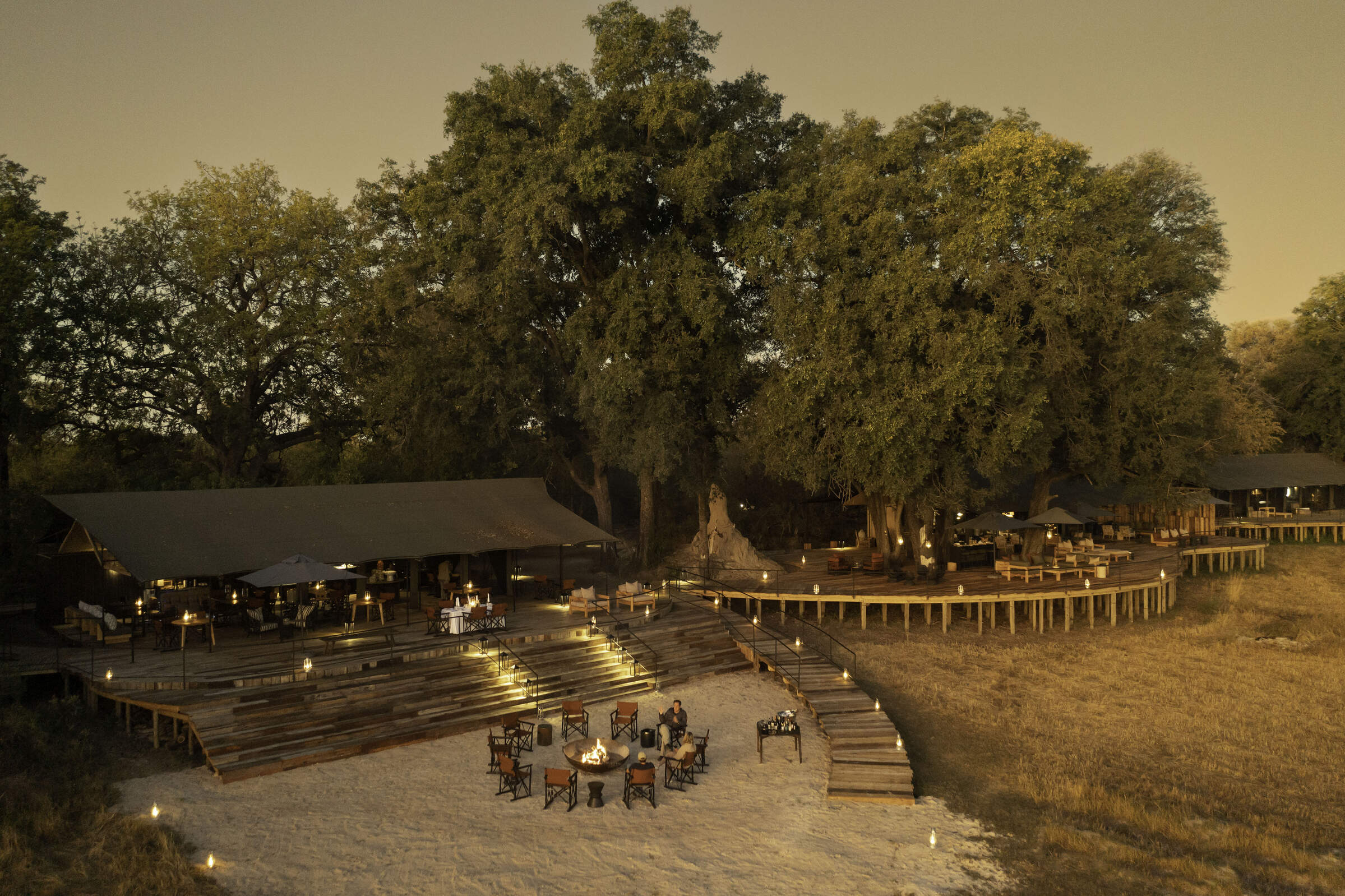
Kiri Camp
Kiri Camp is the latest Okavango offering from the excellent team behind Machaba. In an exciting new location in the heart of the Delta we cannot wait to visit this new camp.
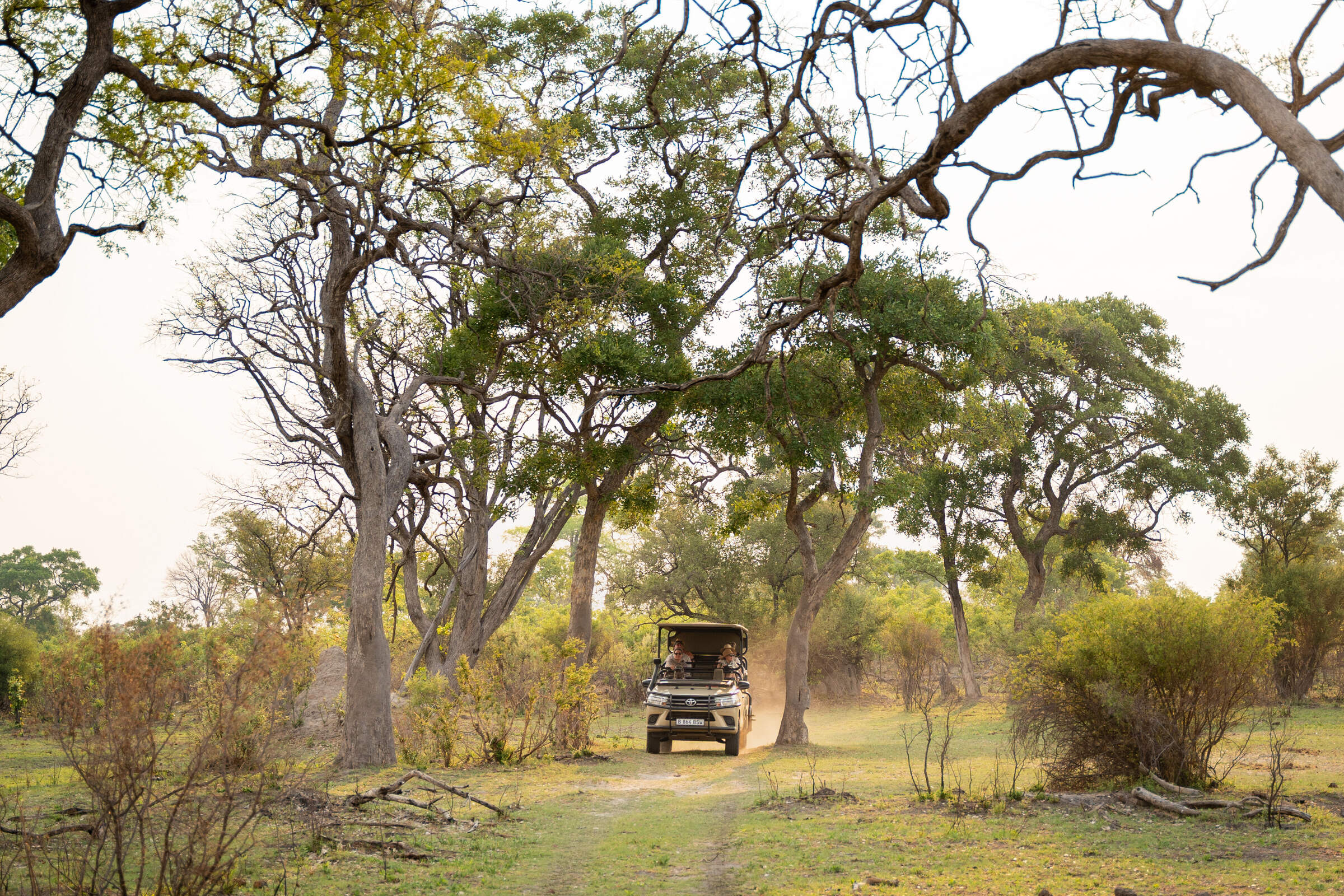
Karangoma
New for 2024, Karangoma is a classic, tented camp offering walking, canoeing and game drives, in partnership with the local Bukakwe San clan.
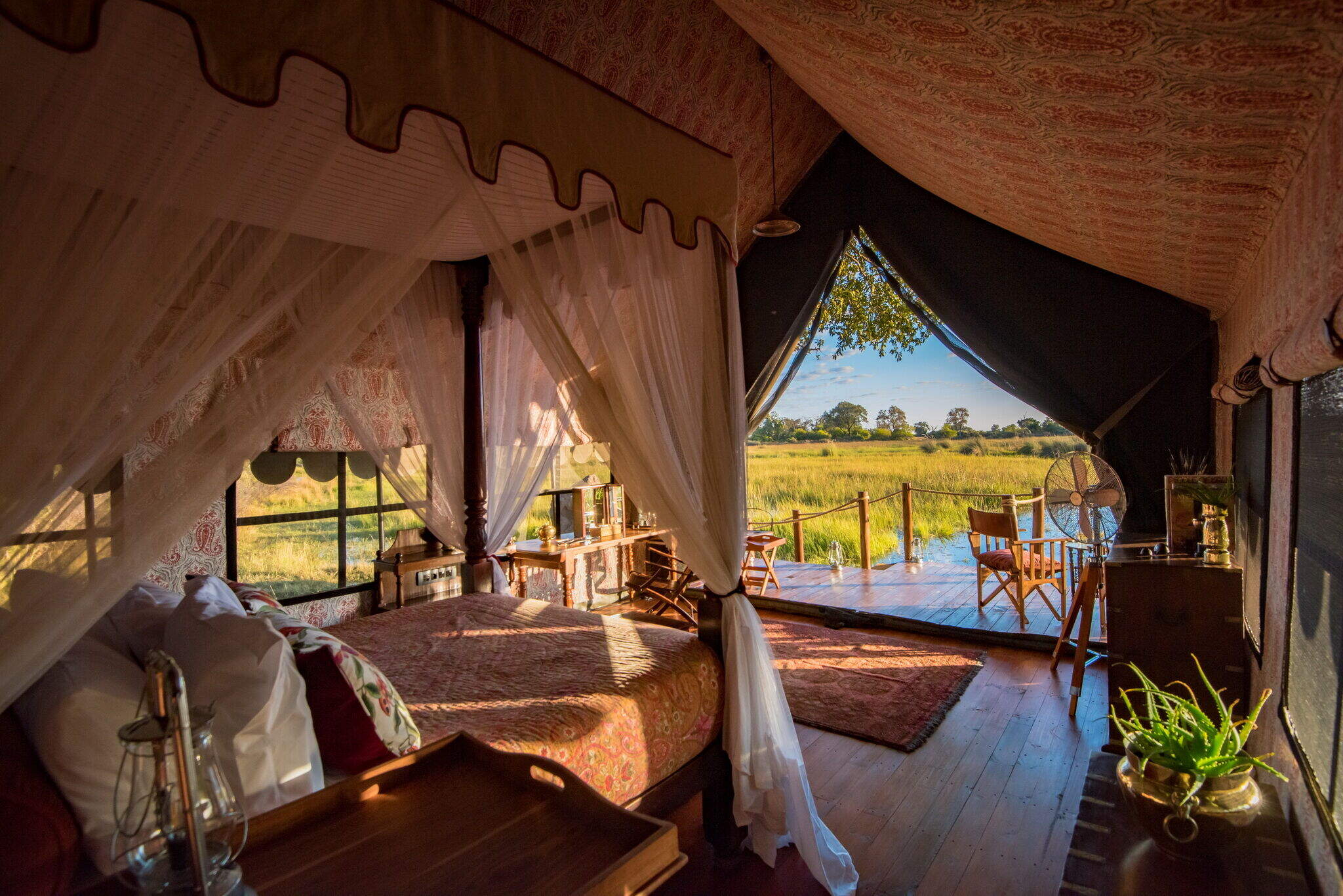
Duke’s Camp
On a remote island within a large concession, the romantic Duke's Camp and smaller Duke’s East are nestled among mature trees overlooking wildlife-rich plains and waterways of the Okavango.
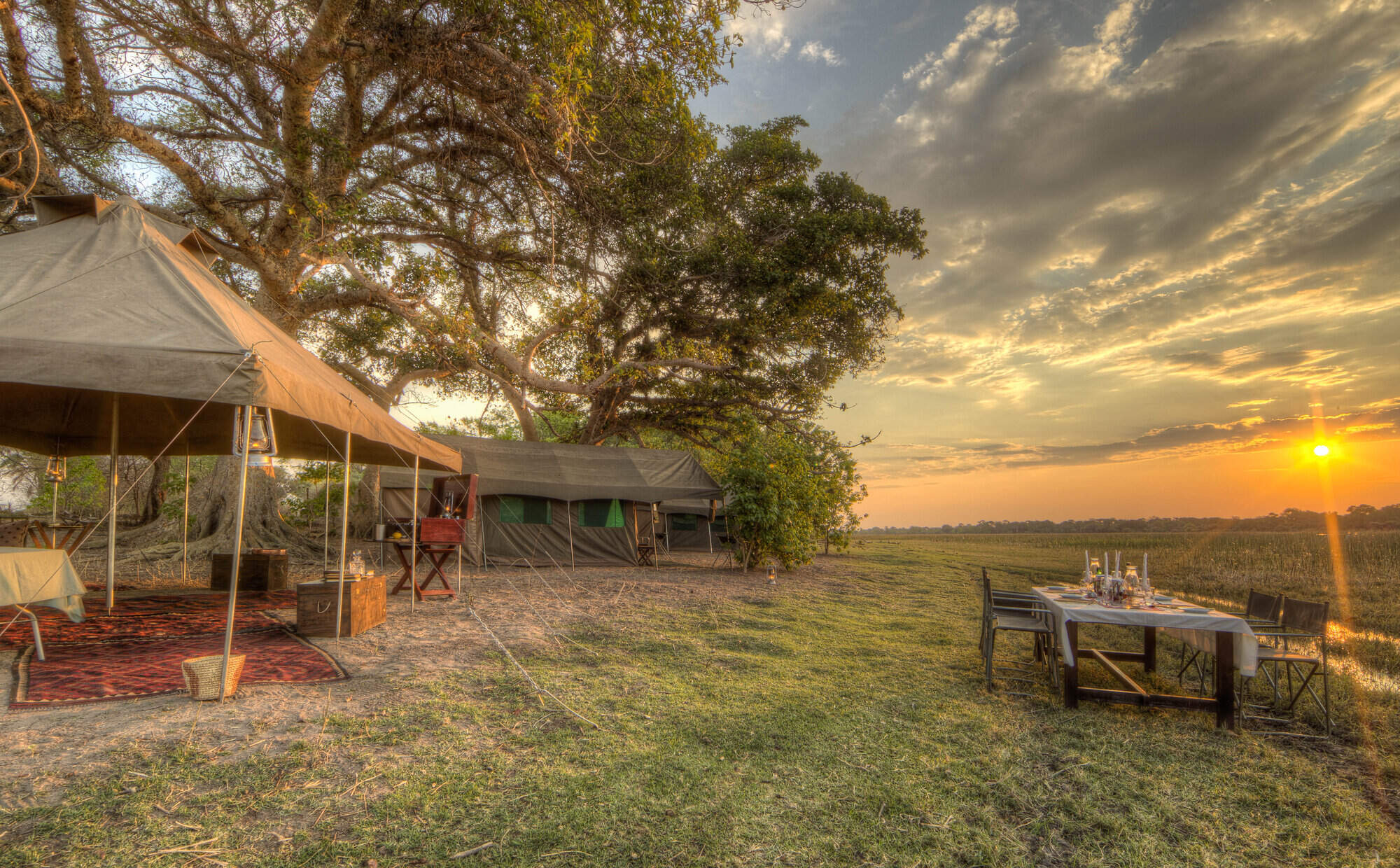
Okavango Walking Safari
The Okavango Delta Walking Safari camps in a secluded Okavango Delta Reserve where there are few roads; the ideal location for a walking trail led by an expert guide.
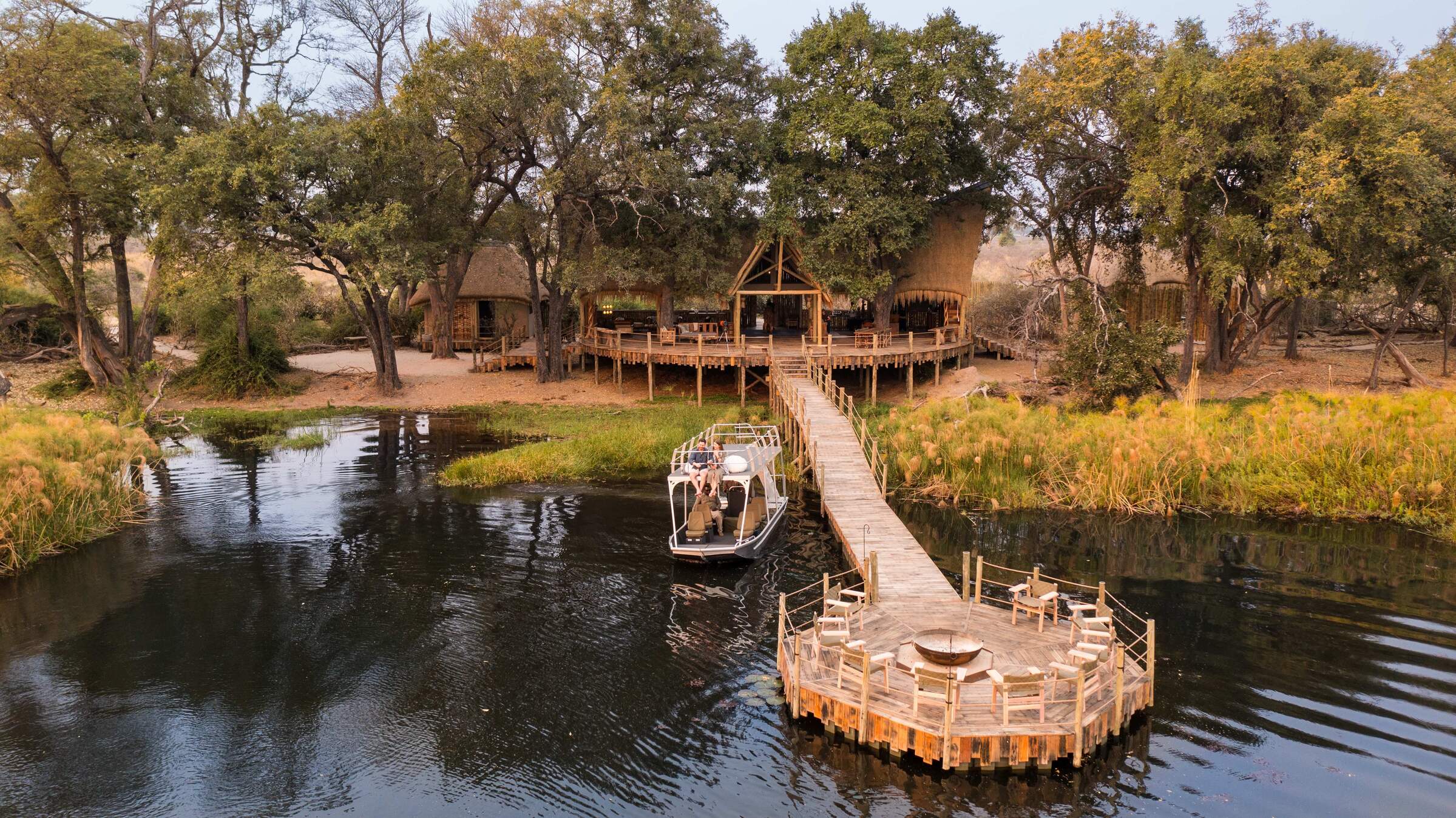
Sitatunga Island Camp
Tucked away in a pristine corner of the Okavango Delta, the exclusive Sitatunga Private Island is a water-based camp offering boating, mokoro trips and fishing.
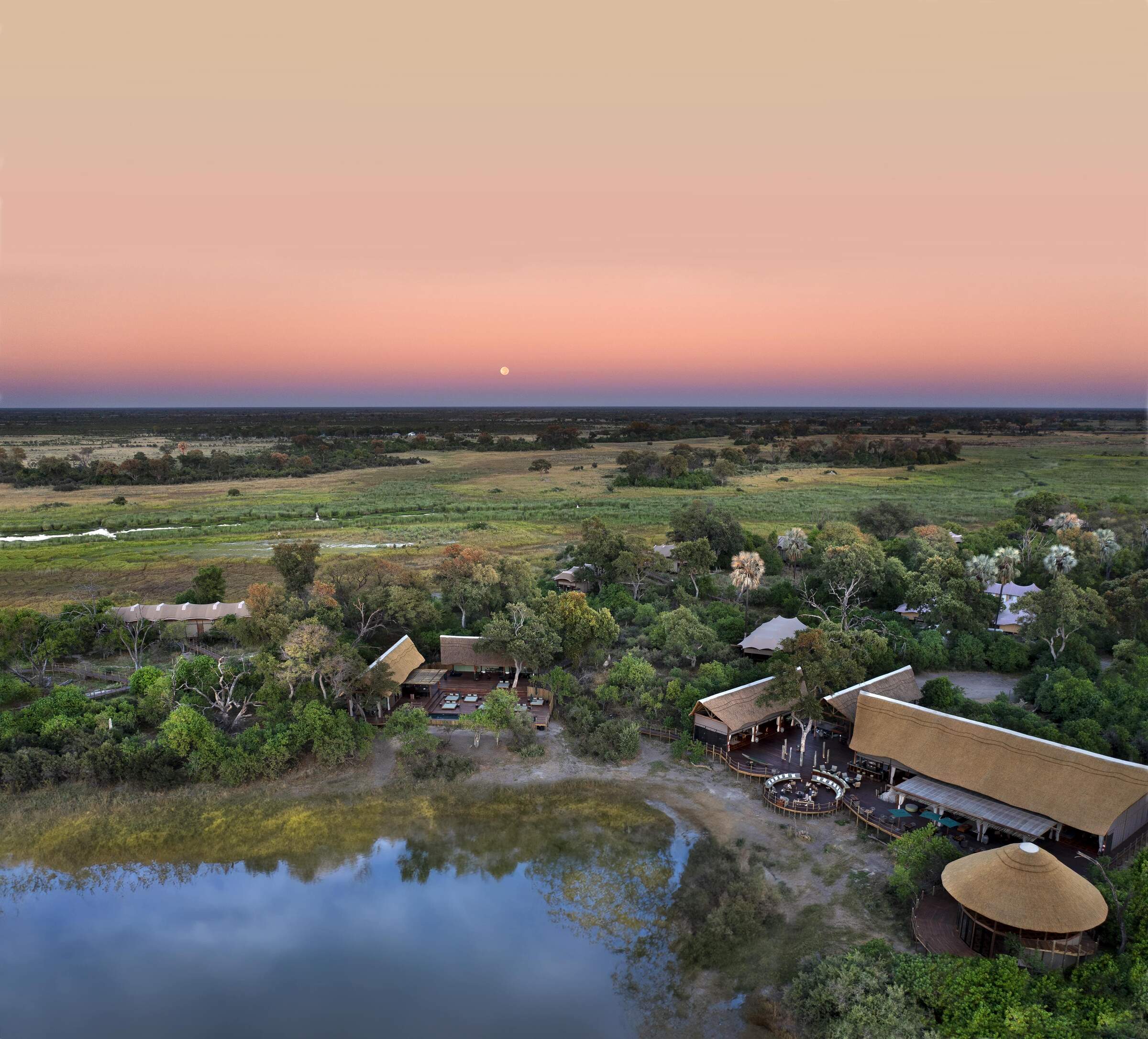
Atzaro Okavango
With a high level of tasteful luxury promised at Atzaro, we think it will be best suited to travellers seeking a touch of pampering alongside their safari.
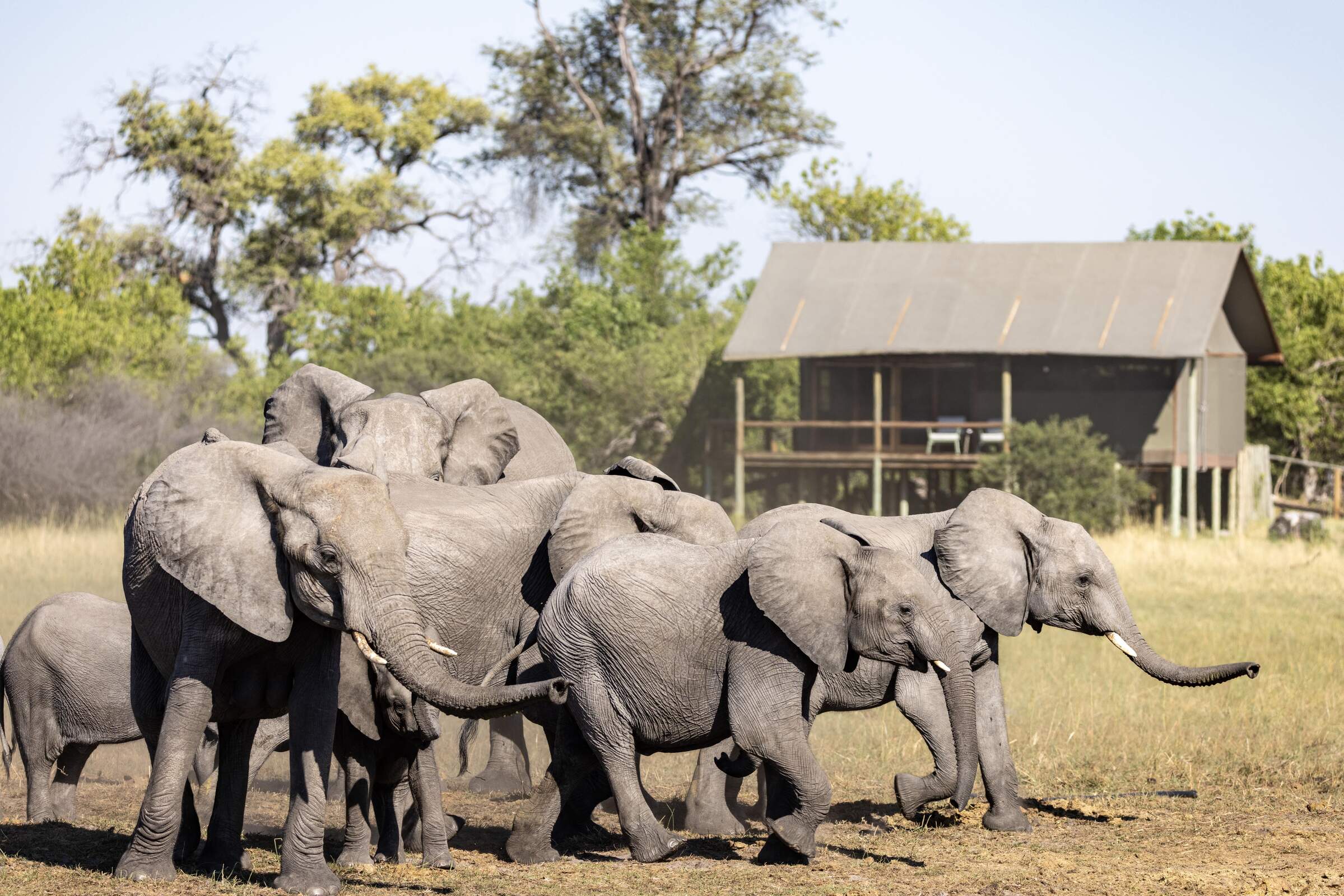
Mokolwane
Deep in the heart of the Okavango, the simple Mokolwane focuses on wildlife viewing in a large, untouched area.
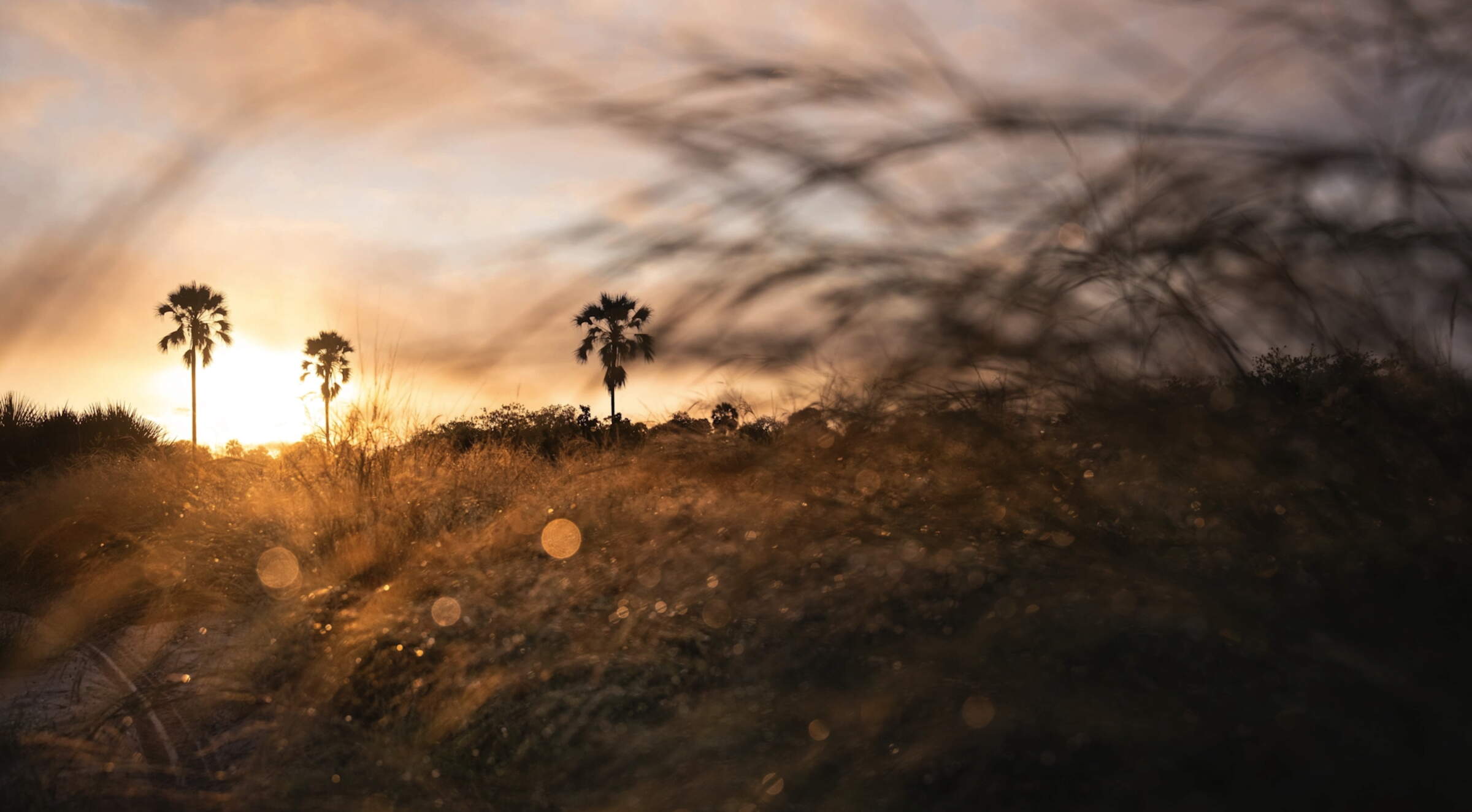
Singita Elela
Singita Elela is an exclusive safari camp on the western side of the Botswana's Okavango Delta - offering superb wildlife and water based opportunities depending on the seasonality.
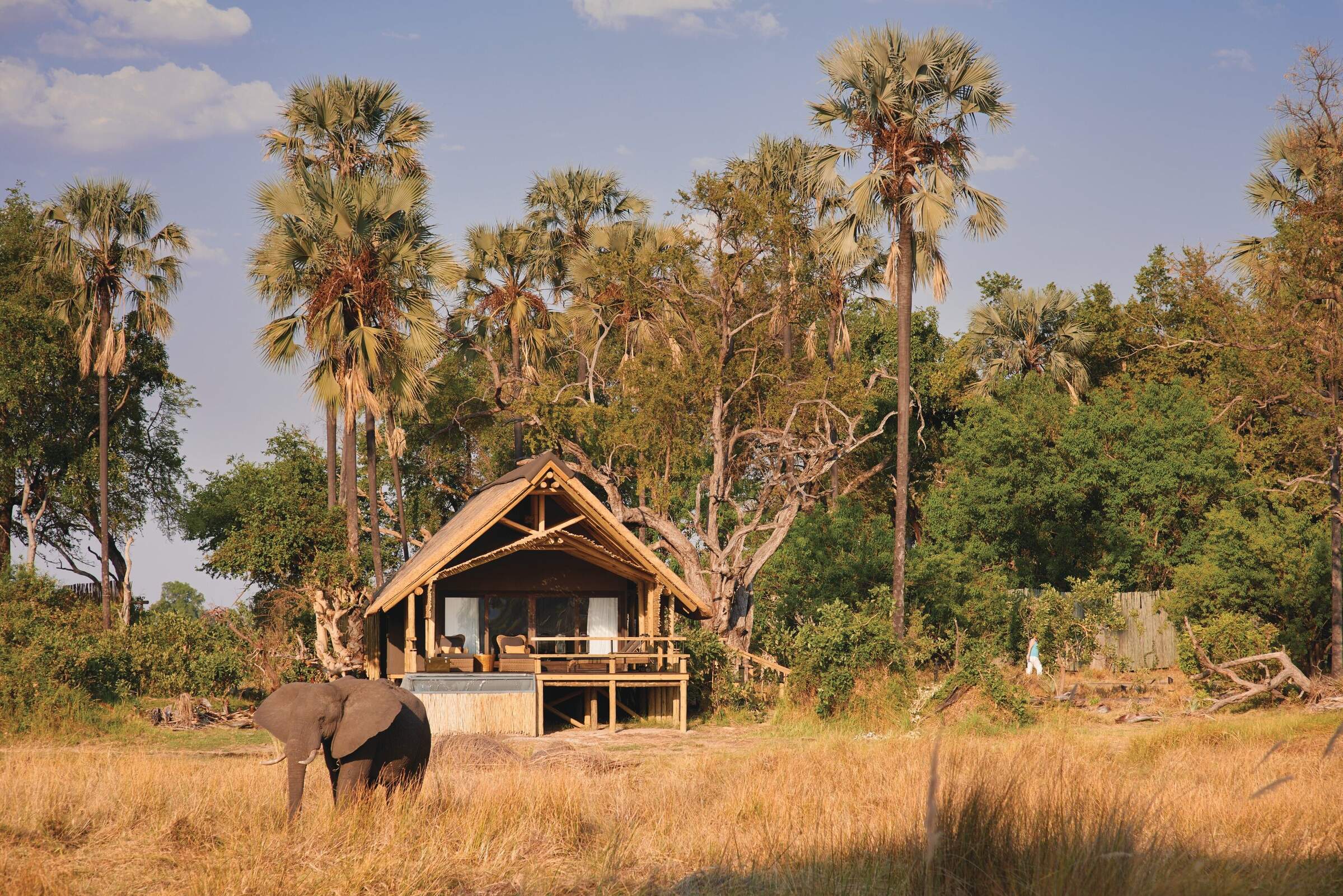
Eagle Island Lodge
Eagle Island Lodge is a luxurious camp with international-style facilities including air conditioning and intercom in each room; offering water based activities in the Okavango Delta.
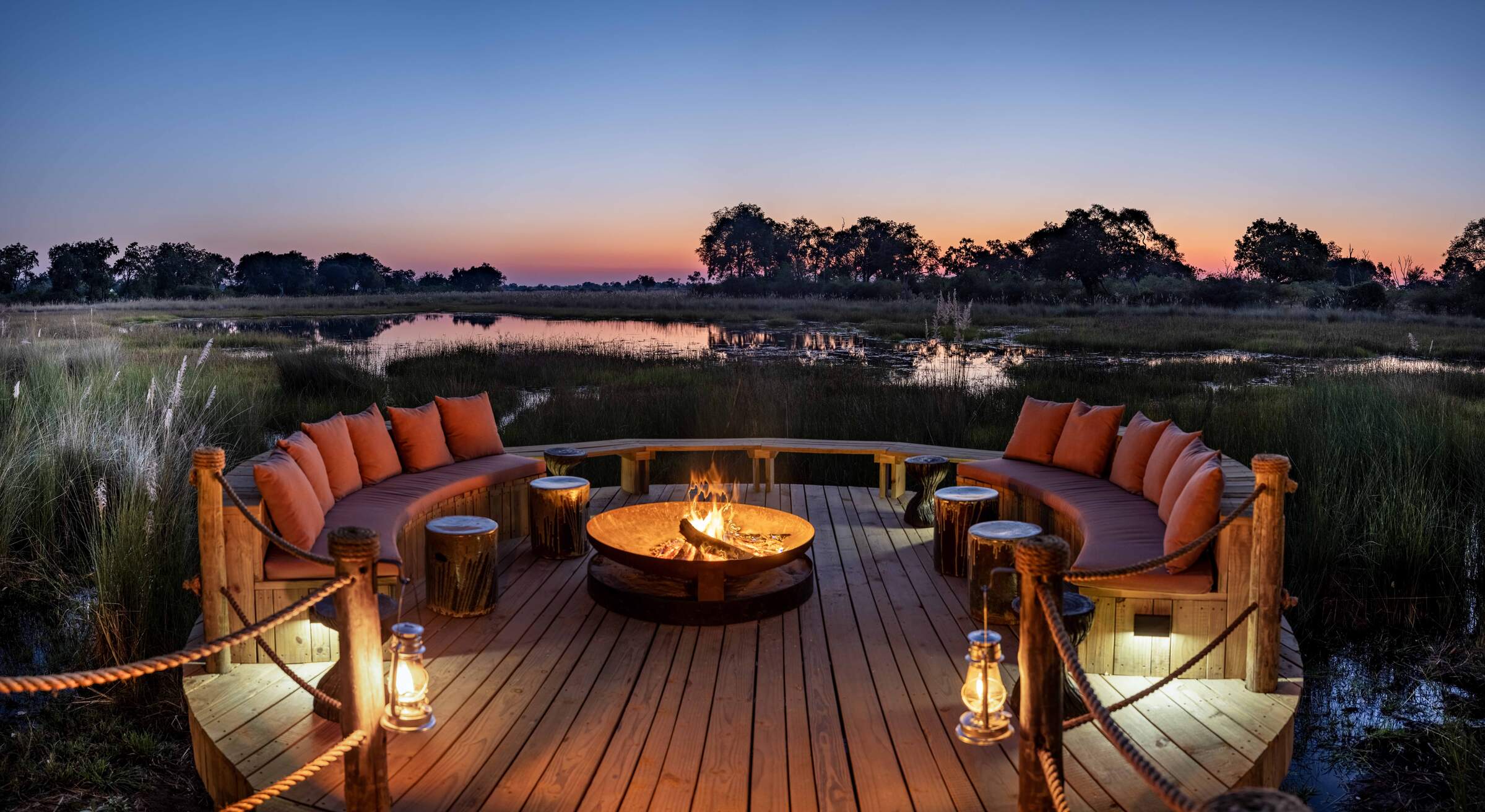
North Island Okavango
Deep in quintessentially “Okavango” territory, between deep-water and dry-land habitats, North Island focuses on a luxury safari experience with very good wildlife viewing opportunities.
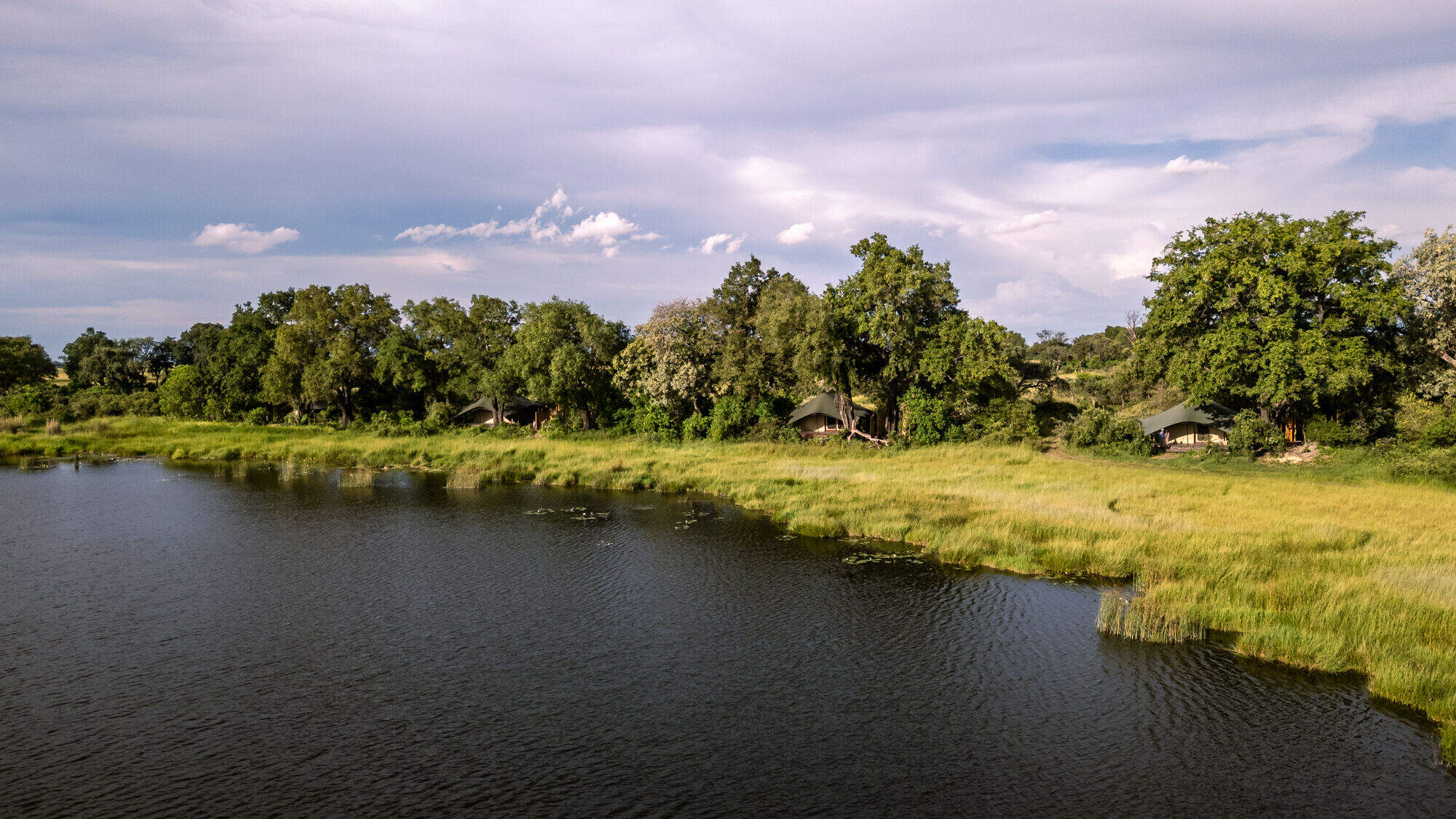
Maxa
Overlooking the permanent Maxa Lagoon, Maxa has a range of activities on offer, combining understated luxury with comfort in a remote location.
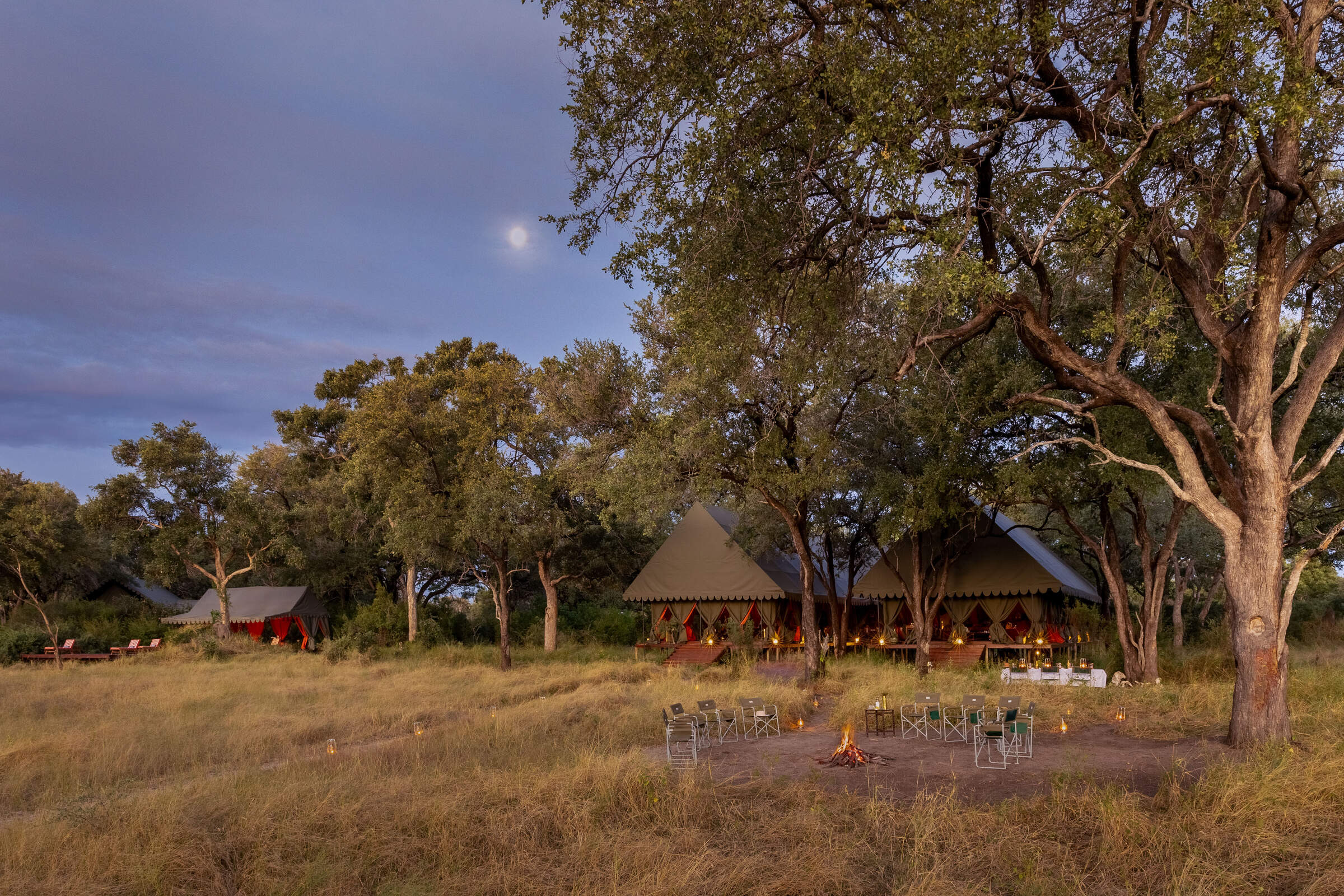
Mbamba
Deep within the northern Okavango, the classically styled Mbamba is located in the same wildlife-rich private concession as its sister camp Dukes.
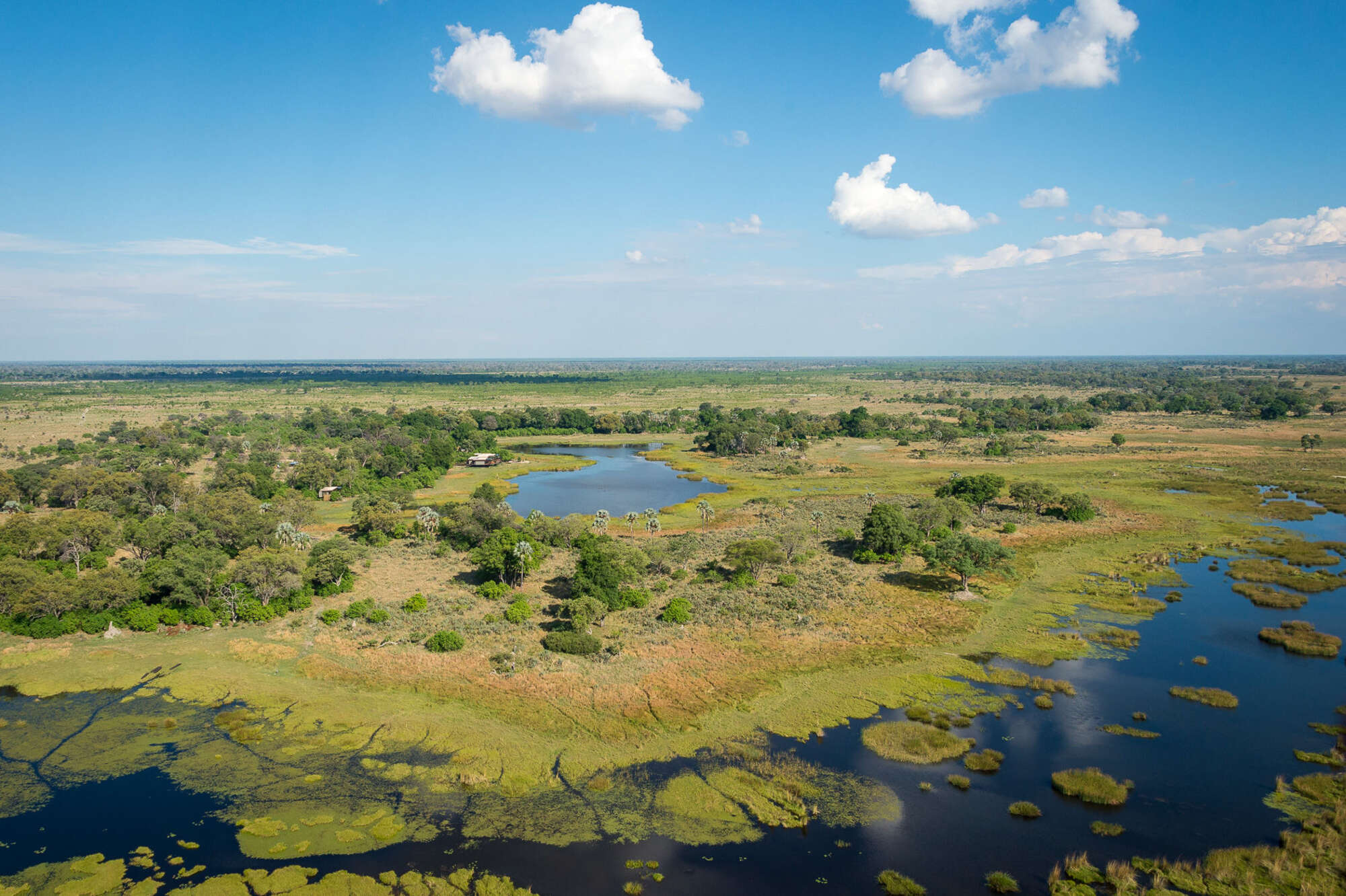
Qorokwe Camp
Luxurious and contemporary, the relatively new Qorokwe Camp is a gem in the Okavango Delta, offering land- and occasionally water-based activities in a prime wildlife area.
Our travellers’ wildlife sightings in Okavango Delta
Desperate to witness wild dogs’ hunting? Looking to photograph lounging leopards in the Golden Hour? Heard of lion hunting buffalo? Or keen to track down the Okavango’s huge breeding herds of elephants? We can help you see Africa’s best wildlife spectacles.
Not only do we have decades of on-the-ground experience, a genuine enthusiasm for African wildlife, and even a safari guide on our team - we also have the data to back up our advice.
Our long-running citizen science project has focused on collecting wildlife sightings data since 2018. With tens of thousands of surveys from our travellers, we can provide up-to-date information on the sightings of Africa's key mammals across the Okavango Delta.
Click on a species below for more information on the top locations in the Delta for wildlife sightings.
Visit our Wildlife Surveys page to find out more about how we collect the data, why we think this is important, and how you can get involved on your Okavango safari.

100% success

98% success

98% success

98% success

94% success

93% success

87% success

72% success

65% success

64% success

56% success

31% success

25% success

25% success

20% success

9% success

2% success

1% success

1% success

0% success

0% success
When to go to Okavango Delta Safari Reserves
The Okavango Delta attracts tourists year-round, with peak season being from May to October. July to October sees the highest number of visitors but the Okavango’s intimate safari camps and huge private reserves ensure exclusivity whenever you visit.
Considerations for the ‘best’ time to visit usual stem from the local weather patterns. As with everywhere in the world, the climate is increasingly unpredictable, but generally Botswana’s dry season (May-November) offers clear skies and ideal conditions for 4WD game viewing. April marks a transition, while June-August brings cooler temperatures. From September, heat gradually increases, peaking in October. November fluctuates, sometimes with welcome afternoon showers.
Conversely, the wet season (December-March) brings lush landscapes and sporadic downpours. Days vary greatly, with brief, heavy rains typically in the afternoon. Despite needing waterproof gear, activities are rarely halted by rain.
Fewer tourists visit in May-July or late October-November, but those who do enjoy quieter camps. Whilst even smaller numbers venture to Botswana during the rainy season (December-March), dubbed the 'Green Season in safari circles', offering intimate experiences, lower costs, and unique landscapes.
Many other tour operators overlook Botswana in the Green Season, often citing misconceptions about wildlife visibility. However, with careful planning, safaris at this time can be incredibly rewarding, especially for seasoned safari-goers and photographers: it’s lush, baby animals abound and it’s incredibly quiet, making private vehicles and guiding more likely. Whilst not ideal for everyone, the wet season can offer a magical experience.
Jan
Feb
Mar
Apr
May
Jun
Jul
Aug
Sep
Oct
Nov
Dec
Okavango Delta Safari Reserves in January
January marks the peak of the rainy season in the Okavango Delta. Evening rains are often short but heavy, accompanied by occasional dramatic thunderstorms. Temperatures remain high, although cooler than the preceding months of October to December. Wildlife can be harder to spot as animals spread out across the lush floodplains.
This month is a birdwatcher’s paradise, with migratory species in abundance over flooded areas. Rising water levels in parts of the Delta make mokoro safaris possible, offering serene and immersive experiences. The vibrant greenery and dramatic skies provide stunning opportunities for photography. With relatively low rates and fewer visitors, January is ideal for those seeking a quieter, budget-conscious Botswana safari.
- Warm temperatures with frequent evening showers
- Birdlife at its most spectacular in the Delta
- Wildlife dispersed, but insects and smaller creatures abound
- Excellent availability in Delta lodges and camps
Our view
A good time to visit, with pros & cons
Weather in January
Okavango Delta Safari Reserves in February
February mirrors January’s weather patterns, with heavy rains and slightly cooler temperatures. The Delta’s landscape is at its greenest and teeming with life. Smaller animals, insects, and vibrant birdlife dominate, as many species raise their young. The rains create temporary pools and waterholes, further dispersing larger game, while thick vegetation and tall grass adds to the challenge of spotting big wildlife.
However, Moremi Game Reserve and select areas of the Delta still offer excellent game viewing opportunities. Rising water levels enhance water activities, with boat safaris providing unique access to the Delta’s watery beauty. February is particularly rewarding for photographers seeking lush landscapes and dramatic skies and birdwatchers, with many migratory species present.
- Warm with occasional thunderstorms
- Many animals with young in the Delta
- Big game dispersed throughout wetlands
- Big game dispersed, but viewing improves in drier areas
- Lower visitor numbers and great lodge availability
Our view
This is not a great time to visit
Weather in February
Okavango Delta Safari Reserves in March
March marks the gradual end of the main rainy season in the Okavango Delta. Sunny days become more frequent, with occasional afternoon thunderstorms. The Delta remains lush and vibrant, with wildlife activity increasing as animals finish raising their young and begin congregating around permanent water sources.
Rising water levels make boat safaris a highlight, offering intimate access to the Delta’s waterways. Birdwatching is excellent, with both resident and migratory species thriving. With fewer visitors, March offers a quieter, more personal safari experience.
- Rains taper off but temperatures remain warm
- Occasional small thunderstorms in Delta
- Wildlife begins congregating around water sources
- Ideal conditions for boat safaris
- Few tourists and attractive rates at camps
Our view
A good time to visit, with pros & cons
Weather in March
Okavango Delta Safari Reserves in April
April brings clearer skies to the Okavango Delta, with the landscape remaining green and lush. Night temperatures begin to drop, especially in the southern Delta. The annual floods from Angola start to flow through the northern Delta, filling channels and lagoons, creating ideal conditions for water-based activities like boat safaris.
Wildlife viewing improves as vegetation thins and predator activity increases with cooler evenings. Moremi Game Reserve and the private concessions offer rewarding game drives, and walking safaris on the larger islands, such as Chief’s Island, become popular during this time. Birdwatching remains excellent, with many migratory species still present. April’s combination of pleasant weather, wildlife activity, and relatively low rates makes it a rewarding time to visit.
- Cooler evenings and occasional light showers
- Floodwaters begin to fill Delta channels
- Predator-prey interactions increase
- Ideal for walking safaris and boat trips
- Popular shoulder season, rates fairly low
Our view
A good time to visit, with pros & cons
Weather in April
Okavango Delta Safari Reserves in May
May is a popular time to visit the Okavango Delta, marking the last month of the shoulder season. The annual floods continue to spread through the Delta, transforming the landscape. Cooler mornings and evenings encourage predator activity, while thinning vegetation makes wildlife spotting easier, though some tall grasses may still obstruct views.
May offers excellent photographic opportunities with clear, crisp air. It's a favourite time for many visitors, combining good wildlife sightings with pleasant weather. Camp bookings throughout the Delta fill up quickly during this period.
This is a perfect month for scenic flights, offering breathtaking views of the advancing floodwaters. Mokoro trips through the Delta’s tranquil waterways provide a unique perspective on the environment. Camps start to fill quickly as the Delta’s combination of pleasant weather and excellent wildlife sightings makes it a favourite among safari-goers.
- Cool mornings and evenings with little rain
- Improved game viewing as Delta grasses thin
- Predator activity increasing in drier areas
- Scenic flights and water activities highly recommended
- Last month of shoulder season for camps
Our view
A very good time to visit
Weather in May
Okavango Delta Safari Reserves in June
June signals the start of the dry season in the Okavango Delta. Days are warm, with clear skies, while mornings and evenings can be cold, occasionally reaching freezing temperatures. The annual floods reach their peak, creating spectacular conditions for water-based activities like boat safaris along the Khwai River and in private concessions.
Wildlife concentrates around permanent water sources as surface water dries up, improving game viewing. The thinning vegetation and crisp, clear air make June perfect for photography. High demand for camp bookings reflects its popularity, as this month combines great game viewing and pleasant weather.
- Warm days, cold mornings and nights
- Peak floodwaters make boat safaris unforgettable
- Wildlife congregates around permanent water sources
- Excellent conditions for photography
- High demand for camps and lodges
Our view
Fantastic: the very best time to visit
Weather in June
Okavango Delta Safari Reserves in July
July offers cool mornings and evenings with warm, sunny days, making it ideal for wildlife viewing. The floodwaters remain at their peak, providing excellent opportunities for boat safaris. Vegetation continues to thin, enhancing visibility on game drives in Moremi Game Reserve and the Okavango’s private reserves.
Large herds of elephants and buffalo are common sights as they gather near water sources. Predator sightings, including lions and leopards, increase as prey concentrates. Birdwatching is rewarding, and the crisp winter air creates stunning photographic conditions. July is one of the most popular months to visit, with many lodges fully booked well in advance.
- Comfortable days, cold mornings and nights
- Excellent game viewing and predator activity
- Moremi and Khwai areas become busy
- Private concessions offer exclusivity
- High season rates; advance bookings essential
Our view
Fantastic: the very best time to visit
Weather in July
Okavango Delta Safari Reserves in August
August remains a highly sought-after month for visiting the Okavango Delta. Nights are cool, while daytime temperatures rise gradually. Wildlife viewing is exceptional as animals concentrate near water sources, while the Delta’s floods are typically at their peak, offering picturesque settings for excellent boat safaris.
Walking safaris and game drives in areas like Moremi Game Reserve and Chief’s Island are particularly rewarding. Large herds of elephants and buffalo are common sights, and predator activity is high, with increased chances of seeing lions, leopards, and wild dogs hunting. The clear skies and lack of humidity create excellent stargazing conditions. With many travellers visiting during European and North American holidays, lodge availability can be challenging.
- Dry, warm days and cool nights in the Delta
- Fantastic wildlife viewing near water sources
- Excellent opportunities for game drives and boat safaris
- Cloudless skies, spectacular stargazing
- High demand for accommodation – book early
Our view
Fantastic: the very best time to visit
Weather in August
Okavango Delta Safari Reserves in September
September is a favourite for many safari-goers in the Okavango Delta. Daytime temperatures rise, but nights remain cool. The landscape transforms as greenery fades, and hazy conditions create dramatic sunsets. Wildlife viewing peaks as animals cluster around permanent water sources, with especially large numbers of elephants and buffalo. This concentration of prey attracts predators, increasing chances of witnessing exciting hunts.
The return of migratory birds enhances birdwatching. Water levels begin to recede, but boat cruises are still possible. Dusty conditions may challenge photographers, but the stunning landscapes and wildlife action more than make up for it.
- Warm days, cool nights in the Delta
- Prime month for Okavango wildlife viewing
- Migratory birds return, enriching birdwatching
- Spectacular sunsets and dramatic scenery
- High season rates, many Delta camps full
Our view
Fantastic: the very best time to visit
Weather in September
Okavango Delta Safari Reserves in October
October is the hottest and driest month in the Okavango Delta. Wildlife concentrates around the last remaining water sources, creating some of the most dramatic game viewing opportunities of the year. Predator-prey interactions are frequent and visibility is excellent, making for thrilling safaris.
Walking safaris are particularly rewarding, especially on smaller islands, but early starts are essential to avoid the midday heat. Towards the end of the month, the first rains may bring relief and begin rejuvenating the parched landscape. Despite the heat, October offers excellent big-game viewing and dramatic photographic moments of animal interactions.
- Hot days, with late-month chances of rain
- Outstanding big-game viewing near water sources
- Water activities limited as floods recede
- Walking safaris provide unique experiences
- Final month of the peak safari season
Our view
Fantastic: the very best time to visit
Weather in October
Okavango Delta Safari Reserves in November
November marks the start of the green season in the Delta. Rising humidity and temperatures often lead to the first heavy rains; these are typically short, heavy showers in the late afternoon or night, creating spectacular scenes and bringing a flush of green to the parched landscape. Wildlife begins to disperse as waterholes refill, but game drives still offer rewarding sightings.
Water levels may be low, limiting boat activities, but November is exceptional for birdwatching, with the arrival of many migratory species. Scenic flights highlight the contrast between dry and wet areas. The first two weeks are popular for travellers seeking good game viewing at lower rates as the Delta transitions into its shoulder season.
- Hot, humid days in the Delta
- Dramatic rain showers , increasing as month progresses
- Migratory birds arrive in abundance
- Wildlife watching good, but less predictable
- Shoulder season offers mid-range rates
Our view
A good time to visit, with pros & cons
Weather in November
Okavango Delta Safari Reserves in December
December sees the rainy season in full swing across the Okavango Delta, bringing some respite from high temperatures. Game viewing becomes more challenging as wildlife disperses, but great sightings can still be had. The landscape transforms dramatically, with lush vegetation sprouting across the Delta. This period is excellent for birdwatching, with numerous migratory species present.
Water levels begin to rise, gradually improving conditions for boat safaris. The green season offers unique photographic opportunities, with dramatic skies and newborn animals. December is ideal for visitors seeking a more intimate Delta experience, with fewer tourists and lower rates at many camps and lodges. The combination of wildlife, birdlife, and scenic beauty makes it a rewarding time to visit.
- Warm temperatures
- High chance of rain in short, heavy storms
- Wildlife more dispersed across Delta
- Game viewing more challenging in wetlands
- Low-season rates and fewer visitors in most Delta camps
Our view
A good time to visit, with pros & cons
Weather in December
The Okavango Delta’s Private Reserves: In Detail
The Okavango Delta’s Private Reserves
At its greatest extent, The Okavango Delta covers over a vast 15,000km² in a lush, water-wilderness of papyrus swamps, shallow reed-beds and floodplains, dotted with islands and laced with a network of channels. It’s a stunning mosaic of environments – which falls under a number of protected areas.
At the centre of the Delta and stretching to the east, is the equivalent of a ‘national park’: Moremi Game Reserve. This was the first protected area of the Okavango and is still run by the government. Our webpages on Moremi also include several adjacent private reserves around the North Gate area of the park.
Around Moremi Game Reserve there's a patchwork of huge wildlife management areas, which are more usually called 'concessions' or 'private reserves'. These are wildlife areas under private management and each one is run by a company which takes a lease on it for 10-15 years, and takes responsibility for it.
Each private concession is numbered, and prefixed by "NG", which stands for Ngamiland - which is the administrative name for this region of Botswana. These concessions are huge, spanning hundreds or even thousands of square kilometers. The larger ones are the size of small countries!
Because the concessions are private, on camp visitors and staff can enter. But note that there are no fences between the concessions, or any of the parks here – so the wildlife move essentially freely across the entire Okavango Delta area as well as into neighbouring Chobe National Park.
In the sections below we've described the various concessions immediately around Moremi Game Reserve in groups by location. In addition to these, for a full picture of the Delta, see also the Panhandle Area, which covers areas north of here, where the Okavango is still a widening river; the Kwando-Linyanti area, which covers several huge reserves to the northeast, beside the Kwando and Linyanti rivers; and, of course, Chobe National Park, further to the east.
You can see the location of the individual private reserves on the REFERENCE MAP, on our Okavango Delta maps page, and we've described the main reserves, including their safari camps and lodges below.
Okavango Delta North – NG20 & 21
The Kwara Reserve is bounded to the north by Selinda (NG16), to the west by Vumbura (NG22) and to the east by Khwai Private Reserve (NG18). This location means that the reserve spans the transition from deep-water areas on the extreme north of the Delta, through very large areas of open floodplains, many of which are dry for much of the year, to the substantial dry areas of its northern section, an excellent area for predators. All Kwara camps offer enthusiastically-guided Okavango safaris, using 4WDs and boats.
On the south side, smaller Shinde Reserve (NG21) the reserve is adjacent to Moremi Game Reserve and was devoted to photographic safaris long before many other Okavango areas.
There are camps here include Shinde Camp and the delightfully personal Shinde Footsteps. Both offer some water-based activites, and have particularly picturesque deep-water lagoons nearby, as well as game drives. Shinde Footsteps, as its name suggests, also offers guided walking safaris - which were its prime focus prior to 2023, when the camp was re-built in much more comfortable form.
Okavango Delta North-west – NG22 & 23
On the northern side of the Delta, Duba Plains Reserve (NG23) has two super camps: the flagship Duba Plains Camp and its sibling Duba Explorers Camp. This lovely reserve largely consists of vast grassy plains - of rich, nutritious grass – which historically attracted large herds of buffalo, leading to an experience that was often dominated by exciting lion-buffalo interactions. In more recent years, in the 2020s the diversity of species here seems to have broadened significantly. Stop here for 3-4 nights if you can, to see the spectacle at its best, and book ahead!
East of Duba is the excellent Vumbura Reserve (NG22); for safaris in the Okavango Delta, it's one of the best and most scenic of the Okavango Delta’s safari reserves. Like Duba Plains Reserve, this is a top-notch area for safari in the dry season. Then it comes close to rivalling its southern neighbour, Mombo, for the quality and diversity of its game. There are two camps here: Little Vumbura, which has been very good for many years, and its substantially more opulent sibling, Vumbura Plains.
The flora in these Vumbura and Duba Plains includes common tree species like apple leaf, leadwood, African mangosteen, jackalberry, sausage tree, and sycamore fig. Rare species like feverberry trees and knobthorn trees are also present.
Wildlife in the Vumbura Reserve includes a variety of antelope such as tsessebe, impala, lechwe, kudu, zebra, wildebeest, giraffe, warthog, and steenbok. Predators like lion, spotted hyena, black-backed, and side-striped jackals are relatively common, with occasional cheetah sightings. Duba Plains has larger buffalo herds but less diversity. It's renowned for lion-buffalo interactions, frequent sightings of spotted hyenas and occasional rhino.
Birdlife in both reserves is wonderfully diverse, with species adapted to both dry and wet environments. You can expect to see kingfishers, jacanas, egrets, stilts, storks, cormorants, waders, ibises, spoonbills, pelicans, longclaws, cranes, bustards, and occasionally flamingos.
Okavango Delta Far North – NG12 & 24
Over the years we have visited it a number of times and sent a trickle of adventurous travellers to Mapula Lodge – drawn by its magical location, record of great wild dogs sightings and close community involvement. However, over 2022-24 more leases for camps have become available, and the options here have mushroomed.
For safari travellers, now there is a super choice of interesting camps and lodges here, attracted, in no short measure, by the area’s good access to permanent water.
Under ancient ebony trees in a lovely island location, the original camp here, Mapula Lodge, offers quite a rustic experience, almost surrounded by its own hippo-filled lagoon. Much more recent additions to the concession include the lavish, vintage-styled Duke's Camp and Duke's East has – like their award-winning sister camp Jack's Camp on the Makgadikgadi Pans – super guiding and service to match its idyllic channel location.
The newest camp is Karangoma, a simple, classic safari camp on a forested peninsula, in the far north-east of this concession. Expect terrific opportunities for fascinating cultural interaction with the local Bukakhwe San people, alongside walking, boating and game drives.
Adjoining Mapula’s western boundary, at the base of the Panhandle where the Okavango River fans into the Delta, Jedibe Private Concession (NG24) is a stunning water wonderland. It features a maze of deep-water channels edged with papyrus, spectacular floodplains, lily-laced lagoons, and lush islands adorned with tall palms, giant leadwoods, and shady jackalberries.
We visited the Okavango’s original deep-water camp, Jedibe Camp, here in the mid 1990s, and although that’s now long gone, we’ve kept an eye on the concession. So we’re delighted by its revival in recent years
Here Setari Camp is particularly interesting, and something of an instant favourite for us, thanks to its location on a truly tropical island thronged with palms, in an area of perennial deep water. It’s a secluded, deep-water retreat ideal for birdwatching, fishing and getting out on the water, rather than big-game encounters.
To the south-west of Setari, its two sister-camps, Kala Camp and the (exclusive use) Treehouse, are both in areas of lagoons and shallow floodplains. They’re sufficiently north in the Delta that the floods reach them early and fairly reliably, so are likely to be able to provide a wider range of activities from camp than lodges further south.
Okavango Delta West – NG25 & 26
This area's diverse landscapes, from wet floodplains to dry islands, are home to a variety of flora, including hippo grass, papyrus, and wild date palms, creating a lush and dynamic ecosystem.
Botswana. Wildlife in Jao Reserve is abundant, with lion and lechwe commonly seen, especially in the Jao Flats. The eastern camps also offer good game viewing, with giraffes, kudu, wildebeest, and zebra frequenting Hunda Island. Birdwatching is excellent, featuring species such as lesser jacanas, purple herons, and wattled cranes. Tubu Tree's drier habitat supports giraffes, kudu, and a variety of raptors. Though historically a hunting area, the reserve's wildlife populations are recovering, providing rich and diverse safari experiences across its varied landscapes.
South of the Jao concession, the huge Abu Private Reserve (NG26), once famed for its elephant-back safaris (now fortunately discontinued) is known for its lush landscapes and rich biodiversity. This private reserve features a mix of permanent swamps, seasonal floodplains, and dry woodland, and it’s anticipated that luxury South African safari operator Singita will begin operating two camps in the Reserve, marking their first venture into Botswana.
Abu Reserve is also the location of one of the Okavango’s only dedicated mobile walking safari camps. The Kweene Trails is a wonderfully immersive walking safari experience, allowing you to explore the Okavango Delta's varied ecosystems on foot in the company of a superb guide. With opportunities to see a range of wildlife, from elephants and giraffes to smaller creatures and numerous bird species, these walks emphasise the diverse plant life and intricate ecological relationships, making them a terrific addition to a safari itinerary for active travellers.
Okavango Delta South – NG27A, 29 & 30
The floodplains here are gradually being taken over by flora suited to drier conditions, and areas once inaccessible for game drives have opened up considerably. By contrast the papyrus-lined channels here have vanished.
For the visitor, the net effect is less opportunities for water activities, but generally better game viewing. For the environment, it means changes – many of which we’re only starting to understand. However, from what we know now, there are fewer floodplains and channels, and many of the wild date palms, and some of the grand old hardwood trees have certainly been lost.
The Nxabega Private Reserve (NG27A) home to three long-established Okavango safari camps: in the centre the delightful Kanana; then an hour to its north, the smart and substantial Nxabega; and to the south, on the oldest site in this concession, Pom Pom Camp.
The Nxabega concession has a good mix of environments typical of the lower Delta: thickets, riverine forests and floodplains. Pom Pom has long been notable for large, open floodplains dotted with small tree-islands, while Kanana has larger islands with wild sage and woodland patches, and Nxabega has more broadleaf forests and acacia patches around it.
Further south, the Private Reserves of Xudum (NG29) and Xaranna (NG30) together cover about 2,500km2 on the southern edge of the Delta. There are two camps here: Xudum and Xaranna, and a separate, specialist horse-riding operation: Okavango Horse Safaris.
The Xudum and Xaranna concessions are mostly dry-land areas in recent years; relatively little water has reached them. So their vegetation consist of open plains with tall grass, thorny thickets, leadwood and knobthorn trees, wild sage, and occasional forested islands with sausage trees, jackalberries, and marulas. The Boro River forms part of the eastern boundary of NG30; it is one of the main channels of the Delta and is lined with mature riverine forest.
Wildlife includes hippos, crocodiles, tsessebe, impala, giraffe, zebra, wildebeest, kudu, and steenbok. Elephants and buffalo are seasonal, with large herds appearing in the dry season. Predators include lion, leopard, and occasionally cheetah.
Okavango Delta South-East – NG31, 32 & 34
The area is informally divided into two sections: to the north and west Sandibe Reserve has just one lodge, Sandibe Safari Lodge – which offers a good mix of game drives and water activities; to the the south and east side, in Chitabe Reserve, you'll find the shaded Chitabe Camp, and the smaller, laid-back Chitabe Lediba. Chitabe has long been a very good area for dry-land safaris with super predators from denning wild dogs to leopards, good numbers of spotted hyenas and lions.
This Okavango concession is a quite varied, with marked differences between the northern areas around Sandibe, which has wetter sections within its environment, and the drier areas around Chitabe further south.
Just north of this reserve, in Moremi, the Mboroga River flows south between the dry-land areas of Chief’s Island and the Mopane Tongue. Forming a number of large lagoons, it splits into two channels. One branch, the Gomoti River, then forms part of this reserve’s northern boundary, and all of its eastern side.
The other branch, the Santantadibe River, is a deep, wide channel that leads to lots of lagoons and runs down this reserve’s southwestern side. Sandibe Safari Lodge overlooks the Santantadibe River in the reserve’s northwestern corner. Around it there are plenty of open-water areas and floodplains, fringed by belts of riverine vegetation and occasional baobab islands.
Further south, the impact of changes in the Delta’s ecosystems since about 2018 is particularly evident on the vegetation, with the loss of significant proportions of the area’s leadwoods, kigelias and baobabs and other large trees.
To the south of Chitabe Reserve and Moremi Game Reserve, the large Private Reserve of Stanley’s & Baines (NG32) has two long-standing camps – Stanley's Camp and its smaller, smarter sibling, Baines' Camp – as well as a trio of more recent additions. This is one area of the Delta where the local community has always been particularly active in their involvement with tourism, down to holding considerable influence on the local community members who work in the various camps.
Relatively new camps in this area include the classically-tented, elegant Amber River Camp and Kiri Camp to the west, the swish 'boutique in the bush' Atzaro Okavango Camp, and the superbly-run Gomoti Plains Camp close to the Gomoti River and its wildlife.
Map of the Okavango Delta
The Okavango Delta, a UNESCO World Heritage site, is renowned as one of Africa's truly pristine wildlife areas. This expansive inland delta in Botswana spreads over 15,000km2, easily identified on this map and as you fly overhead, when the intricate network of waterways, floodplains, and islands that define the delta's unique topography.
Situated approximately 1,000km from the breathtaking Victoria Falls, 600km from the safari hub of Kasane, and 300km from Maun, the main gateway to the Delta, this map is a good way to visualise camps that feature dry-land or water-based safari experiences.
For a graphic map, which we've produced for our travellers, including the boundaries of the private reserves around the Delta, click our 'REFERENCE MAP' button below.
Our 'GOOGLE MAP' is a live map of the Okavango Delta on which we've precisely located the best safari camps. On this map, choose the Satellite option and zoom in for amazing details of waterways, lagoons, islands and even the game-viewing tracks around the camp.
The larger pins mark camps in these private reserves around the Okavango; the smaller pins mark camps in other areas of Botswana - from Moremi Game Reserve, the Okavango Panhandle and the Kwando-Linyanti area to further afield. If you zoom out, yellow pins are camps in other countries outside Botswana.
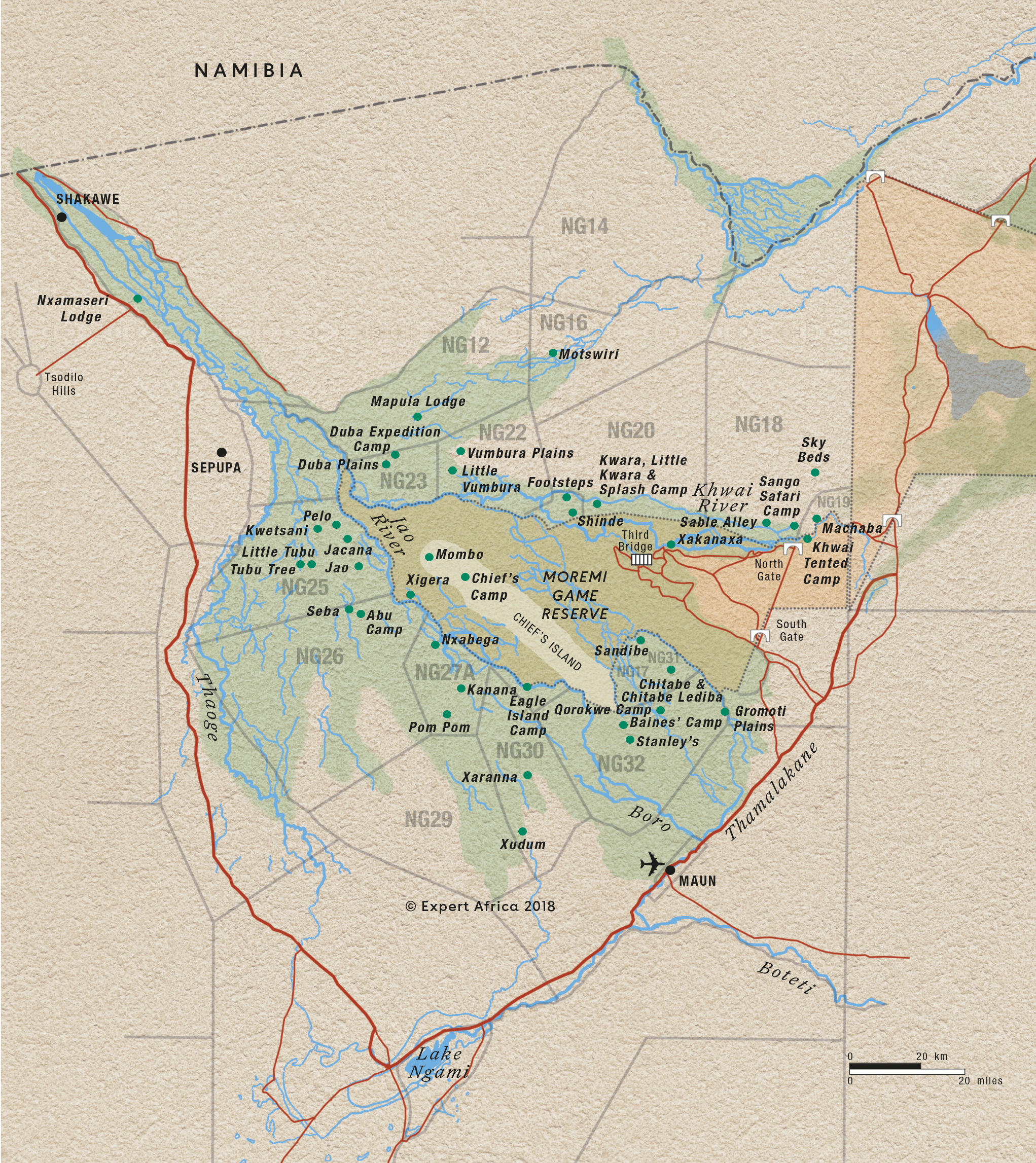
Safari Holidays to the Okavango Delta
We’ve detailed an extensive array of safaris and holidays in the Okavango Delta – ranging from three nights at a single safari camp in Botswana, to magical three-week holidays visiting several African countries.
Fancy visiting Victoria Falls after your Botswana safari? Of course, we can arrange that.
You’d like to relax in South Africa’s beautiful Cape Winelands at the start of your trip? No problem, we know the Cape’s best boutique hotels.
Want to spend some time learning from the incredible San Bushman in the Central Kalahari? We support the best African cultural experiences. Whatever your ‘bucket list’ holiday wishes, all of our safaris are tailor-made to your particular preferences.
Talk to us for more details about which safari combination will suit you best!

Pangolin Safari
8 days • 3 locations
MAUN AIRPORT TO MAUN AIRPORT
Three relaxed, local feeling camps in pristine settings – the Kwando Reserve and Okavango Delta. Guided by a driver and tracker at each, this a great trip for spotting Botswana’s top predators.
US$9,730 - US$16,340 per person

Mopane Squirrel Safari
6 days • 2 locations
MAUN AIRPORT TO MAUN AIRPORT
Visit two wildlife-rich private reserves in an exploration of the Okavango and Kwando regions. Sister camps Splash and Lagoon camp provide a range of immersive activities, and their long-stay discounts make for an excellent-value safari.
US$6,990 - US$11,760 per person
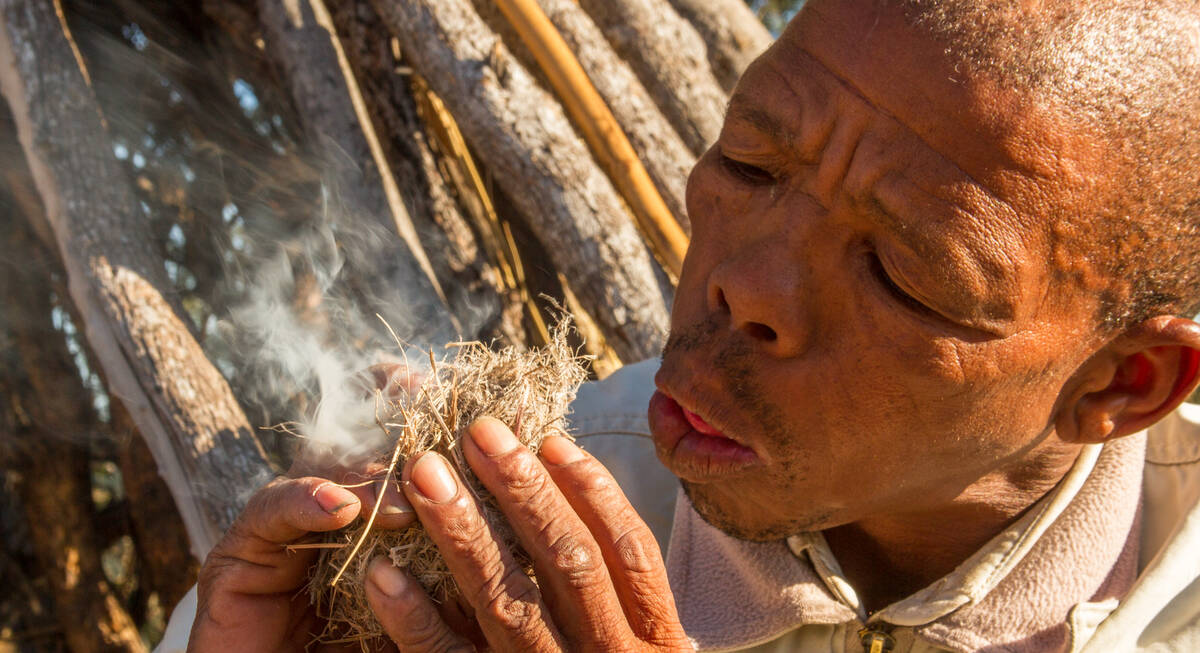
Honey Badger Safari
6 days • 2 locations
MAUN AIRPORT TO MAUN AIRPORT
Two smart sister camps offer access to the Central Kalahari Game Reserve and the heart of the Okavango Delta. Experience a spectacular range of habitats and wildlife through diversely exciting safari activities.
US$7,410 - US$10,800 per person
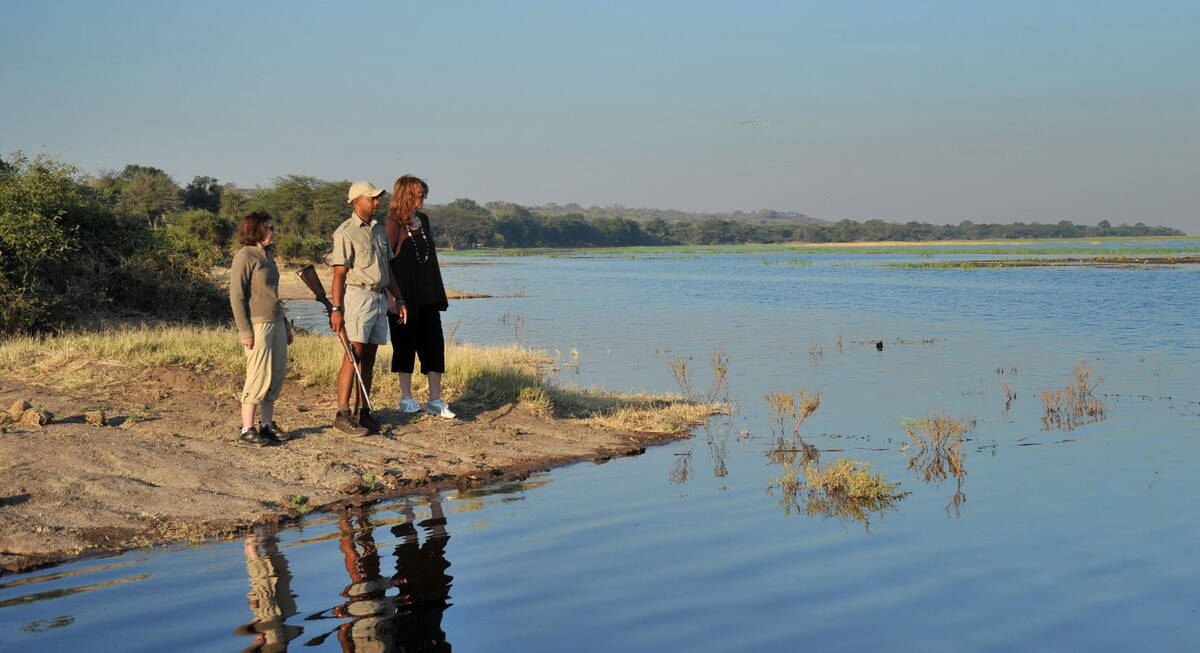
Wild Dog Safari
13 days • 5 locations
KASANE AIRPORT TO MAUN AIRPORT
An in-depth discovery of northern Botswana’s wilderness, from Chobe and the private Kwando Reserve to the Moremi and iconic Okavango Delta with a great variety of activities and wildlife.
US$12,930 - US$21,350 per person

Great Egret Safari
12 days • 4 locations
MAUN AIRPORT TO VICTORIA FALLS AIRPORT
This wonderfully varied adventure combines Botswana's Okavango Delta and a live-aboard houseboat safari on the Chobe River, with big game in Zimbabwe's dry Hwange National Park and the stupendous Victoria Falls.
US$10,400 - US$17,460 per person

Slaty Egret Safari
4 days • 2 locations
MAUN AIRPORT TO MAUN AIRPORT
Two luxurious, intimate camps provide a highly personalised exploration of the Chitabe concession and private Vumbura reserve within the Okavango Delta. A range of water and land activities allows for stunning sightings.
US$7,920 - US$14,550 per person
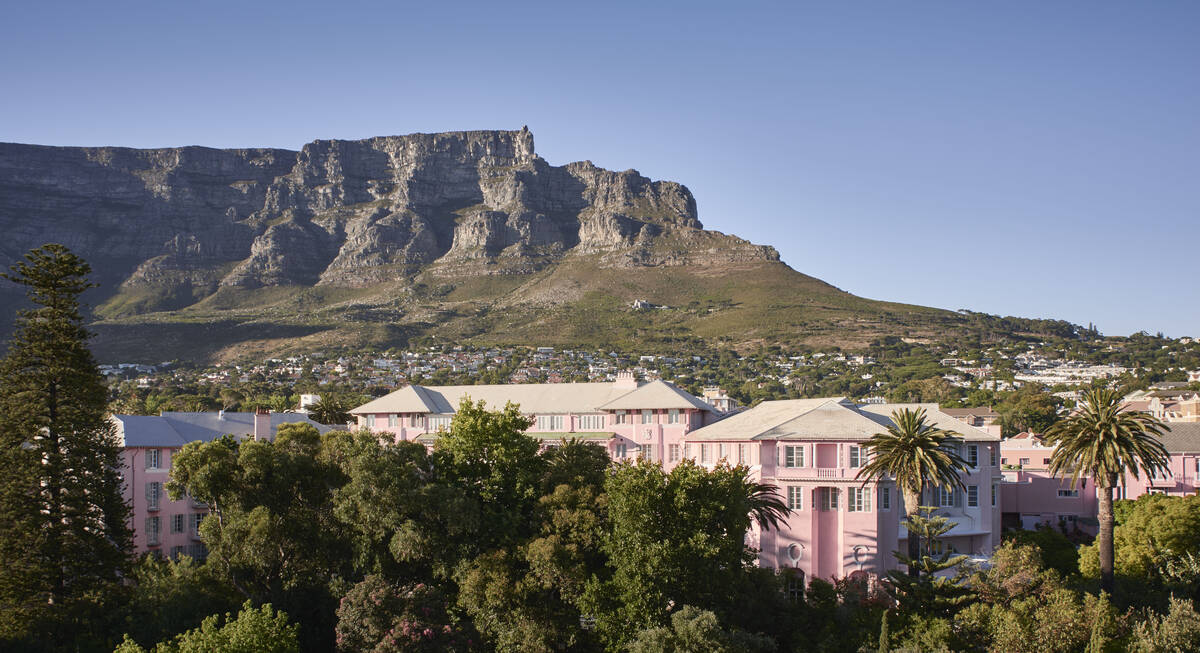
The Highlights of Africa
17 days • 7 locations
CAPE TOWN AIRPORT TO KIGALI AIRPORT
An epic adventure taking in some of Africa’s most incredible sights and wildlife experiences, from Cape Town to the Okavango Delta, Victoria Falls, the Maasai Mara and an encounter with mountain gorillas.
US$16,710 - US$19,880 per person

Bushbuck Safari
8 days • 3 locations
MAUN AIRPORT TO MAUN AIRPORT
Discover three of Botswana’s best game-viewing regions with stays in the private Linyanti, Chitabe and Vumbura reserves. Intimate, smart camps offer a range of activities by which to discover these stunningly varied habitats.
US$18,020 - US$31,740 per person
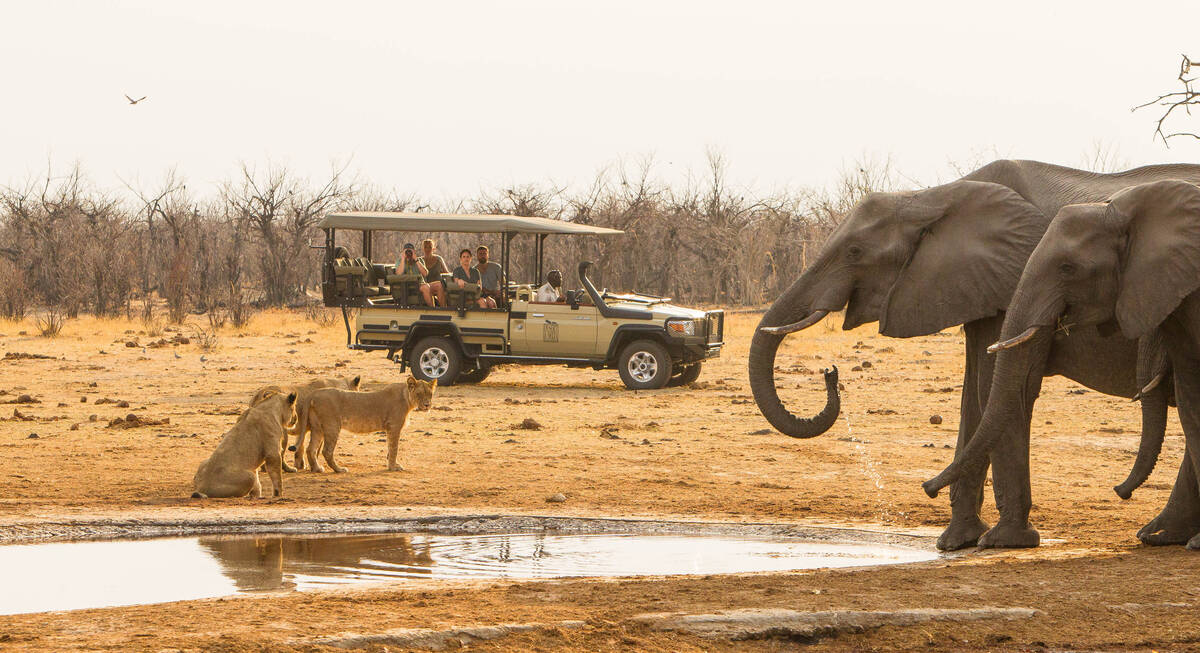
Spring Hare Safari
9 days • 3 locations
KASANE AIRPORT TO MAUN AIRPORT
An authentic and diverse safari to Botswana combining the Chobe Forest Reserve, Savuti Marshes and the Okavango Delta. Strong wildlife viewing, a variety of activities and excellent value camps.
US$8,710 - US$14,180 per person

Tsessebe Safari
7 days • 3 locations
MAUN AIRPORT TO MAUN AIRPORT
Visit three sister-camps in and around Moremi Game Reserve during this thorough exploration of the Okavango Delta. A range of activities provide excellent opportunity to observe the local birdlife, mammals and fauna.
US$8,520 - US$11,410 per person
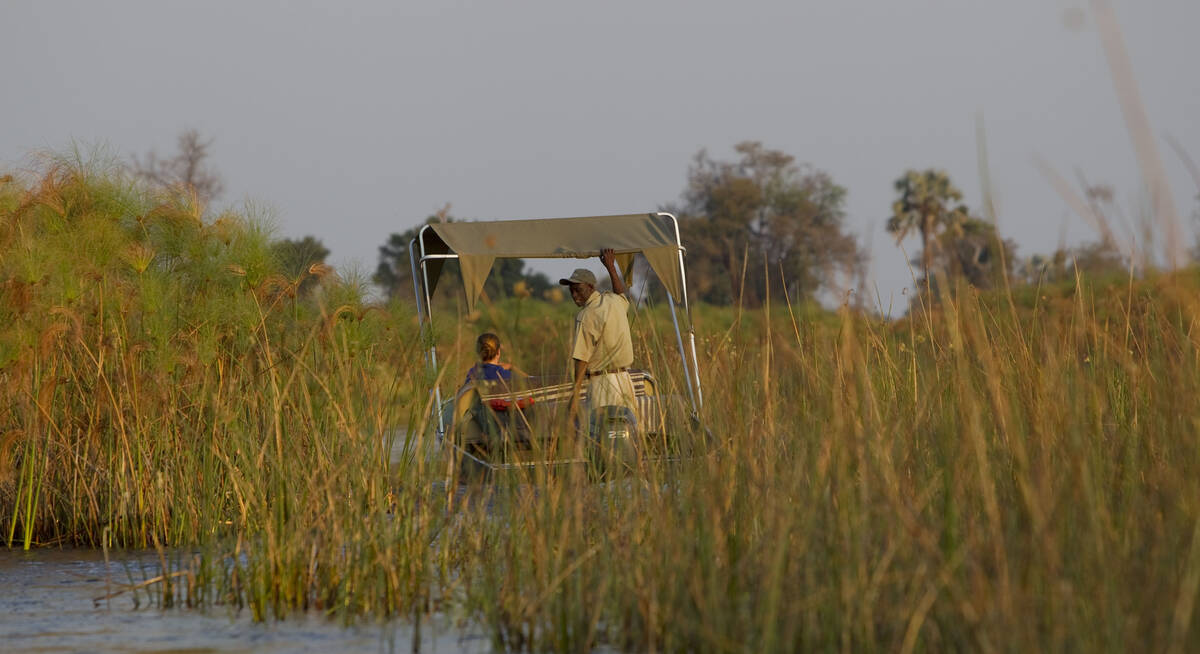
Ground Squirrel Safari
7 days • 2 locations
MAUN AIRPORT TO MAUN AIRPORT
Experiencing the wilderness with an engaging guide whilst staying in a private mobile camp is often the highlight of a safari. Combine that with a charming camp overlooking the Okavango Delta and you’re onto a winner!
US$8,840 - US$11,190 per person

Large-spotted Genet Safari
9 days • 3 locations
MAUN AIRPORT TO MAUN AIRPORT
A luxury safari exploring the Okavango Delta and Linyanti–Savuti, two of the best wildlife viewing areas in Botswana, staying at three top camps renowned for their guiding for a first-class experience.
US$14,230 - US$23,640 per person
Okavango Delta accommodation: Luxury lodges & classic camps
All of the Okavango Delta camps and lodges recommended by Expert Africa are supremely comfortable, be they under khaki canvas and lit by lanterns or award-winning, cutting-edge boutique hotels in the bush.
Whether you envisage a safari camp with contemporary design, personal plunge pools, gourmet cuisine and luxurious spas, or would rather opt for a Campaign-style tented camp with campfire storytelling and shared, family-style dinners, there is an accommodation in the Okavango Delta to suit all tastes. There are even some spectacular private safari houses for the ultimate in exclusive use.
But best of all, our Botswana team has been to them all and can guide you to the perfect spot for your own Okavango safari.

Kwara Camp
Kwara Camp's private reserve boasts land and water activities year-round, with excellent game-viewing opportunities and access to permanent channels of the north-east Okavango Delta.

Little Vumbura
On a secluded island within a private reserve, Little Vumbura combines superb game viewing with a broad diversity of habitats in a truly picturesque setting.

Splash Camp
Set in the Kwara Reserve, offering superb wildlife viewing year-round, Splash offers both land and water activities led by guides with a particular knack for tracking big game.

Shinde Camp
With experienced staff and a wealth of activities, Shinde offers a traditional safari in an exceptionally varied and wildlife-rich environment.

Chitabe Lediba
Chitabe Lediba, in Botswana's southern Okavango Delta, is a small family friendly safari camp; it offers great dry-land safaris and in our experience consistently delivers good game sightings.

Sandibe Safari Lodge
The luxurious Sandibe Okavango Safari Lodge lies in a private concession in the heart of the Okavango Delta, beside Moremi Game Reserve, with superb big-game viewing.

Kanana
In a beautiful part of the Delta, Kanana focuses on fantastic water activities and birding – including exclusive access to an impressive heronry.

Chitabe Camp
In the southern Okavango Delta, the excellent Chitabe Camp concentrates on dry-land safaris in an area that we've found particularly good for wild dog sightings.

Shinde Footsteps
Small and simple, but comfortable, Shinde Footsteps focuses on walking safaris as well as game drives; it also runs a special children's programme so is particularly suitable for families.

Nxabega Tented Camp
Nxabega offers a selection of both land- and water-based activities, plus very good guiding, food and service, but game viewing can be somewhat erratic.

Gomoti Plains
Overlooking a tributary of the Gomoti River, Gomoti Plains Camp is a classically designed camp with very comfortable tents in a good game-viewing area.

Tubu Tree Camp
A traditional tented camp with a distinctive tree-house feel, Tubu Tree offers some of the best game viewing in the Jao Reserve.
Excursions in Okavango Delta Safari Reserves
Optional, extra day-trips and excursions that are possible while you’re staying in Okavango Delta Safari Reserves. Talk to us: these excursions are usually best arranged before you go.
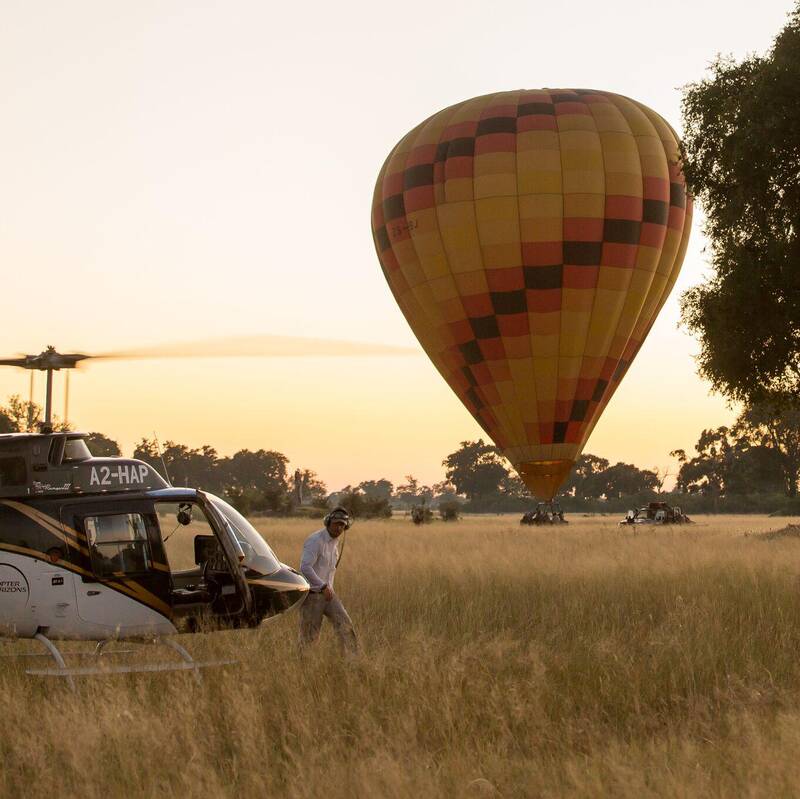
Ballooning in the Okavango Delta
Half day - mornings only
Airborne over the Okavango Delta is always magical - not only for its beauty, but also for insights it gives you into the patterns of channels, lagoons and floodplains. Floating silently at dawn, watching the early sun light up the misty palms islands and spotting the animals as they wake up is particularly enchanting.
More about Okavango Ballooning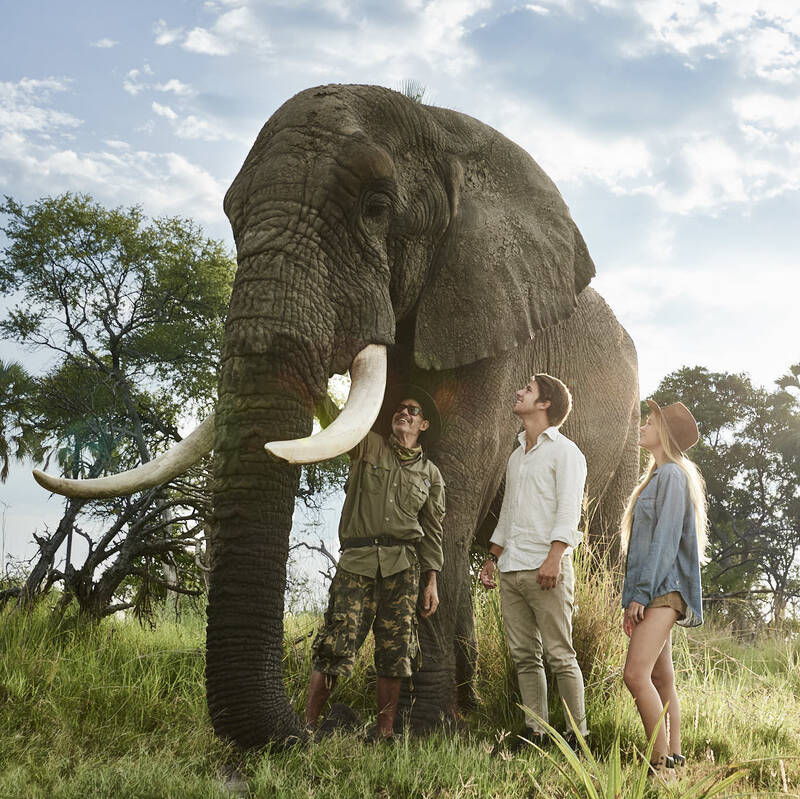
Elephant Activity
Half day - mornings only
Any stay to Baines' Camp and Stanley's Camp is synonymous with the acclaimed elephant activity! Join experts Doug and Sandi Groves in a gentle, interactive experience walking with the two elephants Jabulani and Marula. This experience is a must for all lovers of elephants and wildlife!
More about Elephant Activity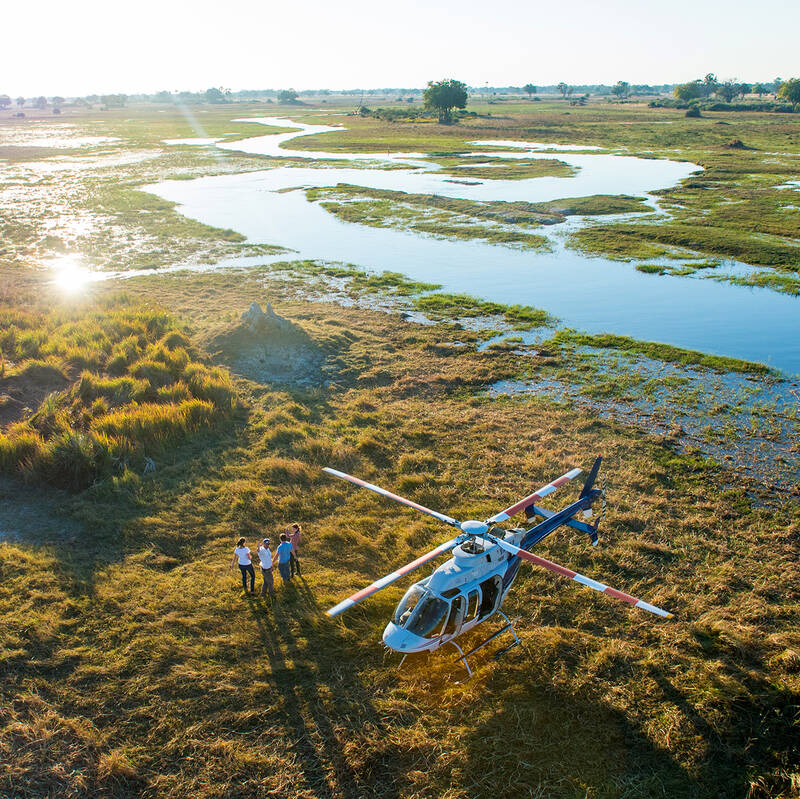
Helicopter Flight - Botswana
Various: from 30 minutes to half a day.
Low-flying, agile and offering superb views, helicopters are an ideal way to move around the Okavango Delta.You can use them instead of fixed-wing inter-lodge transfers or as an addition to other wildlife watching activities, and of course, helicopters can hover to allow that perfect pic, whereas fixed-wings can’t.
More about Helicopter Flight
Looking for inspiration on where to travel next?
Visit our trip chooser to explore your options and find inspiration for your perfect African adventure
Inspire meFrequently Asked Questions
The Okavango Delta FAQs
To help you plan your adventure to the Okavango Delta, we’ve created a guide to essential information on how to get to the Okavango Delta, how to get around when you arrive, and how to choose the perfect safari experience for you.
From Expert tips on the best flights to reach the Okavango Delta, including international flights to key gateways like Maun and Kasane, to the various modes of transportation within the Delta – charter flights and mokoro canoes to 4x4 safari vehicles and motorboats – we’ve covered off all the information you need to make the most of your journey through this spectacular area of northern Botswana.
Read about the best safari camps for family fun, romantic lodges for the ultimate African honeymoon, and how to make the most of being on the water on boats and canoes (mokoros ) in the Okavango…
How do you get to the Okavango Delta?
There are regular flights between the Okavango Delta’s gateway town, Maun, and Cape Town. There is also a convenient flight between Maun and Addis Ababa, the hub of Ethiopian Airlines extensive international network. See our comments on Flights to Botswana for more details, here we’ll specifically flag:
Which are the best flights from Europe to the Okavango Delta?: Johannesburg is the best gateway to southern Africa, served by many carriers like British Airways, Lufthansa and Air France. Booking well in advance secures cheaper fares, especially during the busy seasons of July to October and December to January. Flights via the Middle East with Emirates or Qatar Airlines are popular, with Qatar partnering with Air Botswana for a Doha-Gaborone route. Ethiopian Airlines offers direct flights from Addis to Maun three times a week, providing a convenient connection to Botswana.
Which are the best flights from North America to the Okavango Delta: Our North American travellers often route through Johannesburg, with connections via London or other European capitals. Delta Air Lines and South African Airways offer direct flights from the US to Johannesburg, making onward connections to Maun a good option. It is often more cost effective to book flights from Europe to Africa.
Which are the best flights from Australasia to the Okavango Delta: several airlines fly from Australia, New Zealand and major Asian capital cities to South Africa, including Qantas, Emirates, Qatar Airways, Cathay Pacific, and Singapore Airlines. Connections are often made via Dubai, Doha, Hong Kong, or Singapore. Air New Zealand also offers routes in partnership with other carriers.
How do you travel around the Okavango Delta?
Small, ‘light aircraft’ charter planes are the most common way to travel between the Okavango’s safari camps and lodges. Run by a number of different companies, these flights provide quick access and stunning aerial views of the landscape.
Operating from bases in Maun or Kasane, these charter planes ferry travellers around the camps of the Okavango like a fleet of air taxis. Predominantly using six to 12-seater planes, they criss-cross the region between a plethora of small bush runways. There’s no other way to reach most camps.
We organise these flights when booking your safari camps as an integral part of your trip, so you never need to worry about arranging them for yourself. You’ll likely share the plane with other travellers and sometimes camp staff heading back from leave. Expect flights to take anything from 10 minutes to just under an hour, during which you may stop at one or two other airstrips before reaching your destination. Regardless of the time, keep a sharp eye out for wildlife below and soak up the patchwork of waterways below – it’s beautiful!
For fun and fast aerial transfers, helicopters are also available. They offer a unique perspective of the Delta’s intricate waterways and abundant wildlife, and benefit from being able to land right at most camps. Photographers especially love these trips for the lower flightpath – open-sides optional!
Occasionally, camps may be within the Delta’s islands and dry areas, making a 4x4 game drive transfer possible between camps, but this is much less common.
What should I pack for my Okavango safari?
In general, an Okavango safari requires casual, comfortable clothing, with warm layers, suitable footwear and some key accessories.
Remember to check the weather for the time of year you’re travelling and pack accordingly: don’t assume that the Okavango Delta is always sunny and hot. Morning and evenings can be freezing if you’re ill-equipped.
Our Okavango Safari Packing Checklist would definitely include:
- Lightweight, breathable fabrics: Choose natural fabrics, such as cotton, bamboo or linen, or moisture-wicking, synthetic materials. These fabrics will keep you cool and comfortable in the heat of the day.
- Neutral-coloured clothing: Opt for neutral tones like khaki, beige or olive-green. These colours help you blend into the natural surroundings, and are critical if you intend on doing any walking. Avoiding white and vibrant colours is essential for walking safaris.
- No camouflage: Avoid anything that looks military.
- Long-sleeved shirts and trousers: Alongside some shorts and T-shirts, keep in mind that covering your skin gives protection from the sun, insects and thorny vegetation. Look for garments with UPF (Ultraviolet Protection Factor) for added sun protection. Longer items are equally useful after dark to protect from mosquitoes and ensure warmth after sunset.
- Hat: This is an essential piece of kit in avoiding sunstroke and burning.
- Shoes: Closed-toe shoes, trainers or lightweight boots with good tread are vital for walking safaris. Avoid open-toed shoes to protect your feet from thorns, insects and uneven terrain or bush walks. A pair of trekking or rafting sandals are cool and practical for around camp and on game drives.
- Underwear and socks: Some camps do not accept women’s underwear in their laundry services due to cultural sensitivities (though in-room washing powder is always provided). Moisture-wicking socks will help to keep your feet dry and prevent blisters if you’re walking.
- Lightweight jacket and fleece: Evenings and early mornings on safari can be cool (sometimes cold!), so pack a lightweight jacket and fleece for layering. If you’re travelling in winter, bring gloves, a warm hat and scarf.
- Rain gear: Depending on the season and location of your safari, it’s a good idea to pack a waterproof jacket.
- Swimwear: If your safari camp has a pool, pack a swimwear for cooling off.
- Sunglasses: Take at least one decent pair of sunglasses, and a spare.
- Sunblock, lipsalve, insect repellent & any personal medication.
- Binoculars: essential for game viewing (one pair per traveller… You won’t want to share when the action really starts!)
- Camera: a long lens or decent zoom is vital for good wildlife shots, and do take a spare battery.
- Small torch
- The Bradt Safari Guide to Botswana, written by our team of Experts!
Which are the best family safari camps in the Okavango Delta?
At Expert Africa, we’ve arranged safaris for many families, with all ages of children, and several of our team have travelled in the Okavango Delta with their own young children and teenagers. With careful planning and consideration of your family’s needs, it is an incredibly rewarding and uplifting experience for the whole family.
Age: It’s essential to consider the age and maturity of your child. Some children have shorter attention spans and tire more quickly, so shorter game drives or hands-on activities tailored to their interests work best; some may need time and space to make some noise and burn off energy; others make the most engaged and receptive travellers that a guide could hope for!
Accommodation: We can guide you to the best family-friendly safari lodges for the age of your children. A few camps, like Machaba Safari Camp, Chitabe Lediba, Tau Pan, Pom Pom Camp, Splash Enclave and Shinde have spacious family suites, child-friendly meals and guided activities from camp nature walks to bushcraft, cookery and cultural experiences. And camp staff are always delighted to have children in camp, going out of their way to ensure they’re having fun. And there are some incredible exclusive-use safari villas like Zarafa Camp,
Education: The whole safari experience is a fantastic opportunity to educate children (and adults) about wildlife, conservation, and the natural world. And children invariably love the opportunities to get actively involved: tracking wildlife at camps like Okuti or Lebala Camp, fishing at Setari Camp, getting up close to curious creatures from chameleons to giraffe at Thamo Thelele or Muchenje Safari Lodge, learning how to make fire and traps with the Bushman at Nxai Pan, quad-biking at Camp Kalahari, or simply making mocktails with the barman.
Flexibility: Children have different interests and energy levels, so be prepared to adapt your plans. With great guides, an intricate bird’s nest examined up-close can be more exciting than a distant leopard to a young child. Follow their lead and embrace the small stuff. A Private Guided Mobile Safari with a guide specialising in family travel can be a brilliant adventure and offers the ultimate flexibility.
Relax: Allow downtime between activities to enjoy your safari camp: a splash in the pool overlooking hippo pods, learning a local boardgame while elephants pass by or stargazing by the campfire can be the perfect reset for the whole family. Check out Kanana, Gomoti Plains and Shinde Footsteps for camps great a balancing quality downtime with super Okavango family safari activities.
Canoeing in the Okavango - what is a mokoro?
A mokoro is a traditional canoe used in the Okavango Delta for transportation and wildlife viewing. Traditionally made from dug-out tree trunks, modern mokoros are often crafted from fiberglass for sustainability reasons. They are propelled using a pole, like a gondola or a flat-bottomed punt, allowing for silent and non-intrusive navigation through the Delta's shallow waterways.
Being on a mokoro in the Okavango Delta is a serene and immersive experience. As you skim through the tranquil waters, you're at eye level with the surrounding vegetation, offering intimate views of aquatic life from fish and terrapins, to and waterbirds and tiny painted reed-frogs. The gentle pace allows for a deeper connection with nature, as you listen to the sounds of the Delta and observe wildlife undisturbed by the presence of a motor.
Some of the best camps for mokoro trips in the Okavango Delta include island-based Kwetsani and Setari Camp, Jacana and Pelo which are both often surrounded by water, Vumbura Plains, Shinde Camp with its mosaic of channels, and 4 Rivers, which as its name suggests offers myriad mokoro and boating opportunities.
These camps all provide experienced guides who navigate the mokoros skillfully and with great knowledge of the flora, fauna and seasonal changes of the Okavango’s waterways. Talk to us to understand the fine differences between them.
Videos from Okavango Delta Safari Reserves
Watch these videos to learn more about Okavango Delta Safari Reserves
